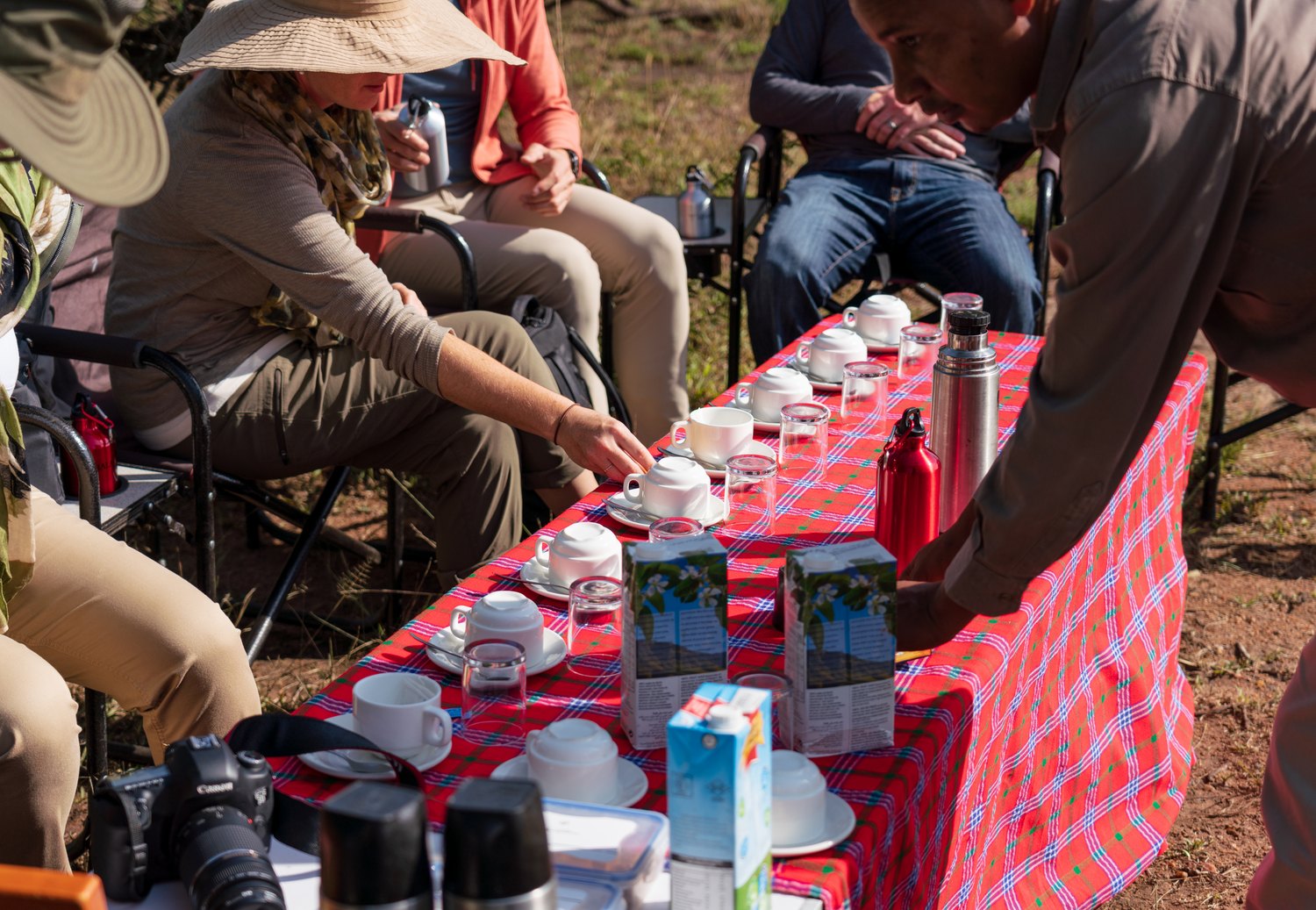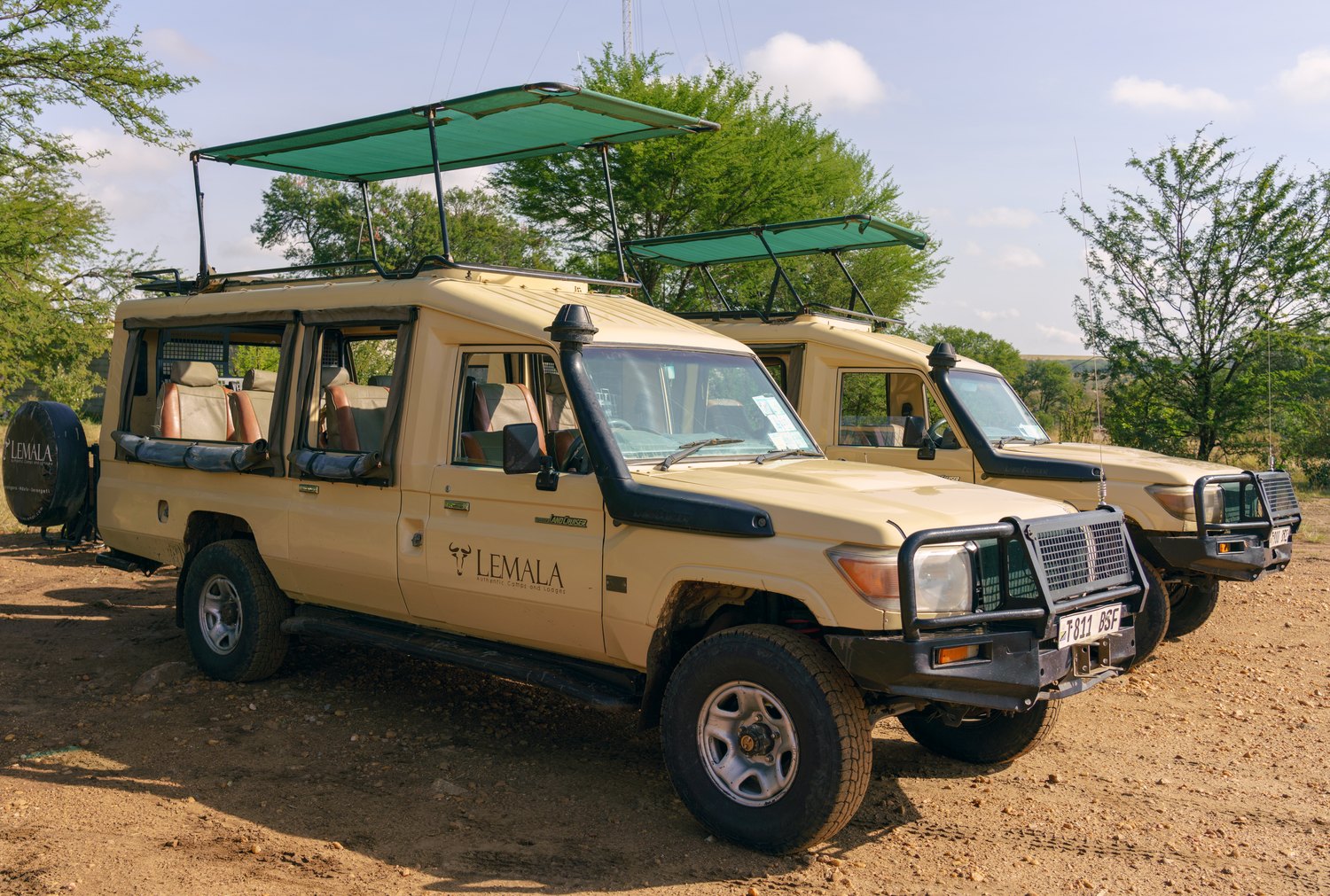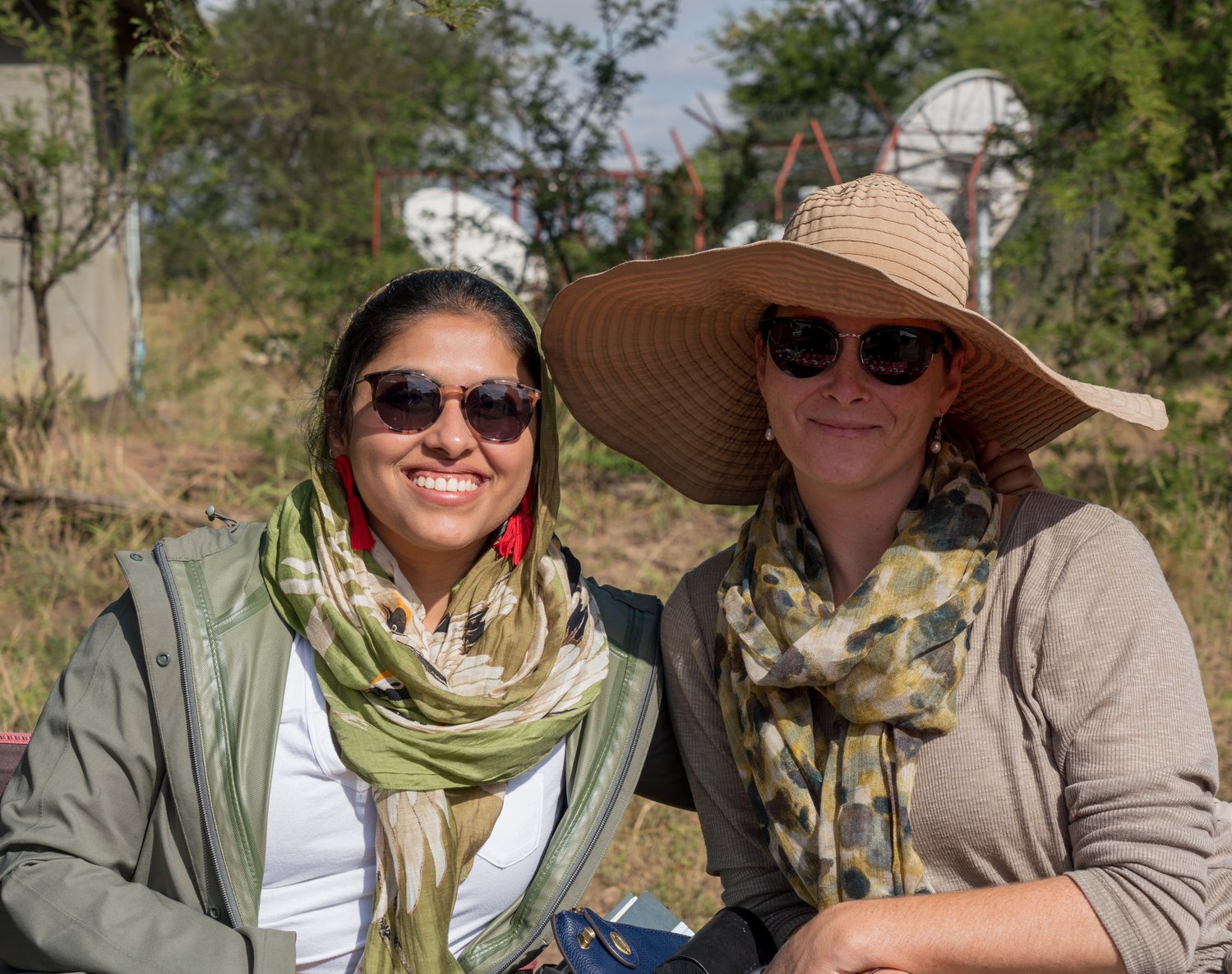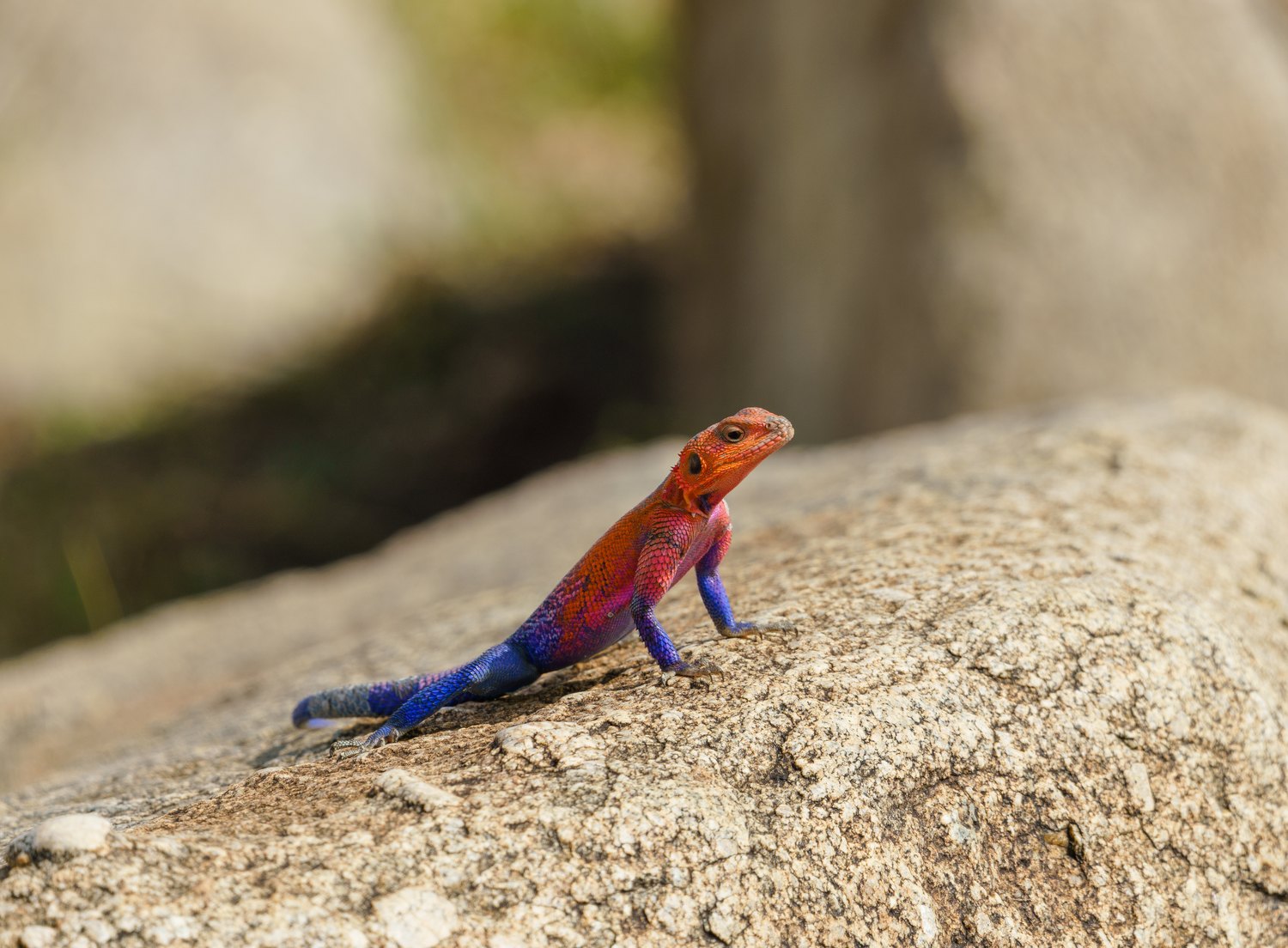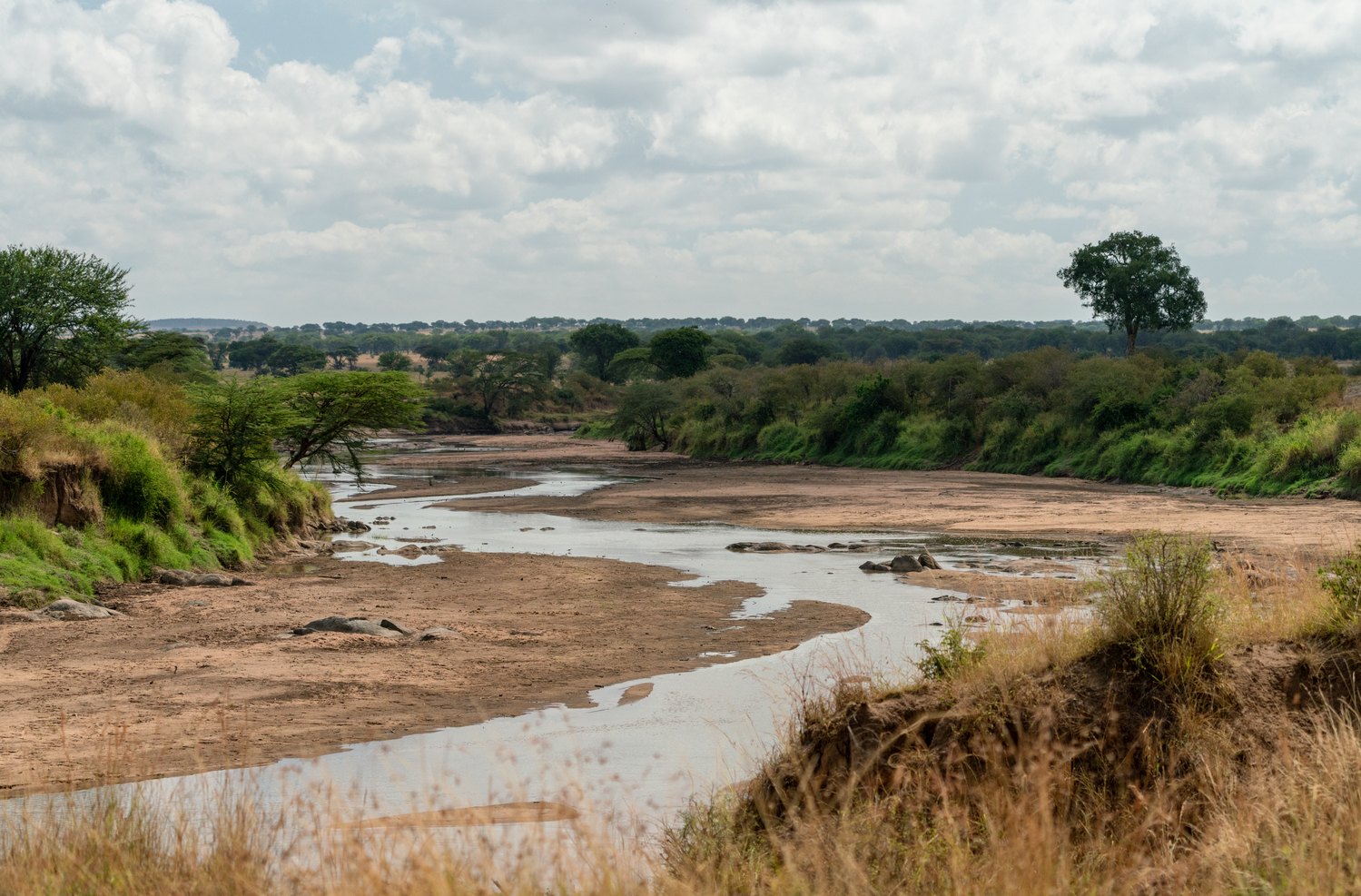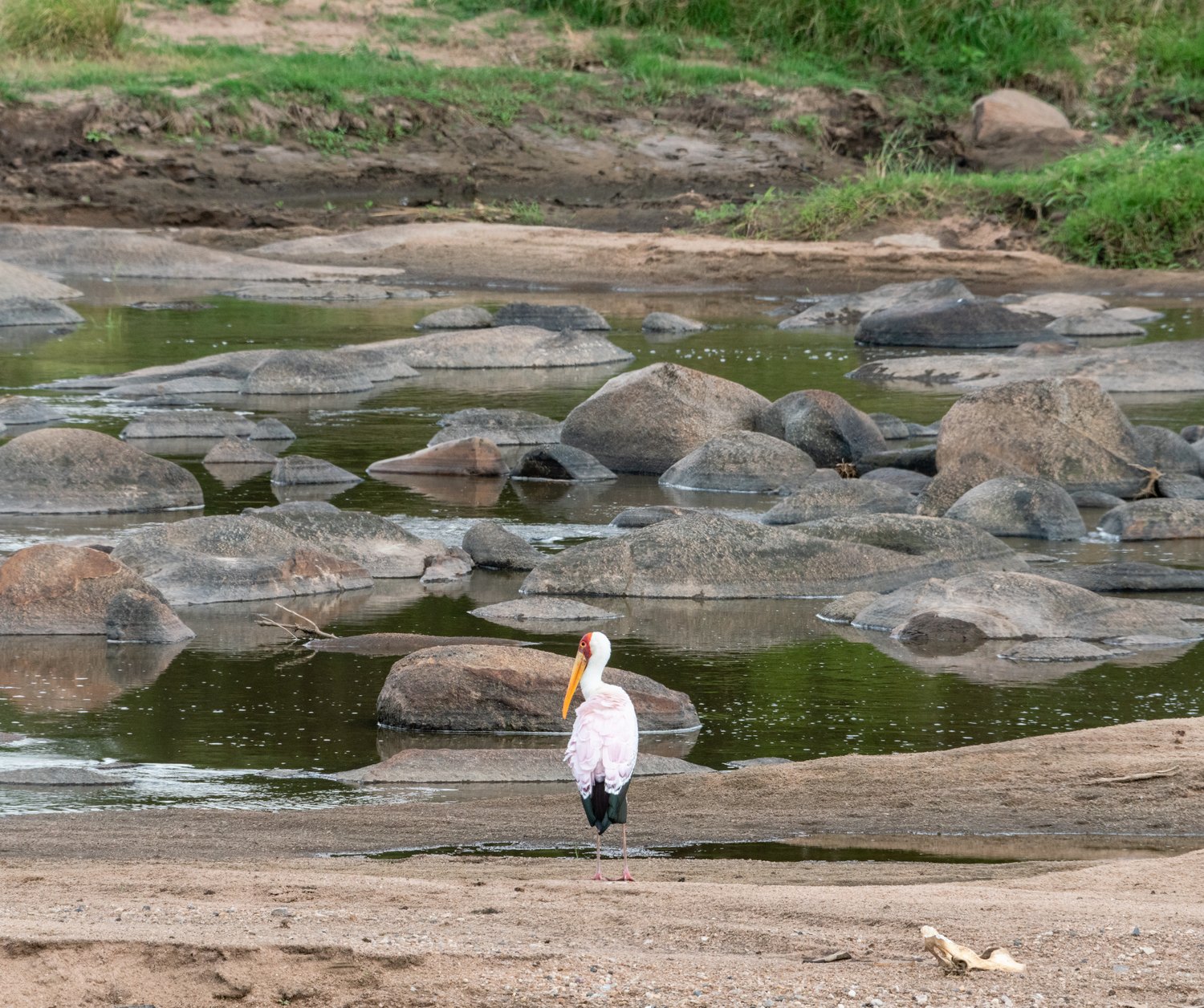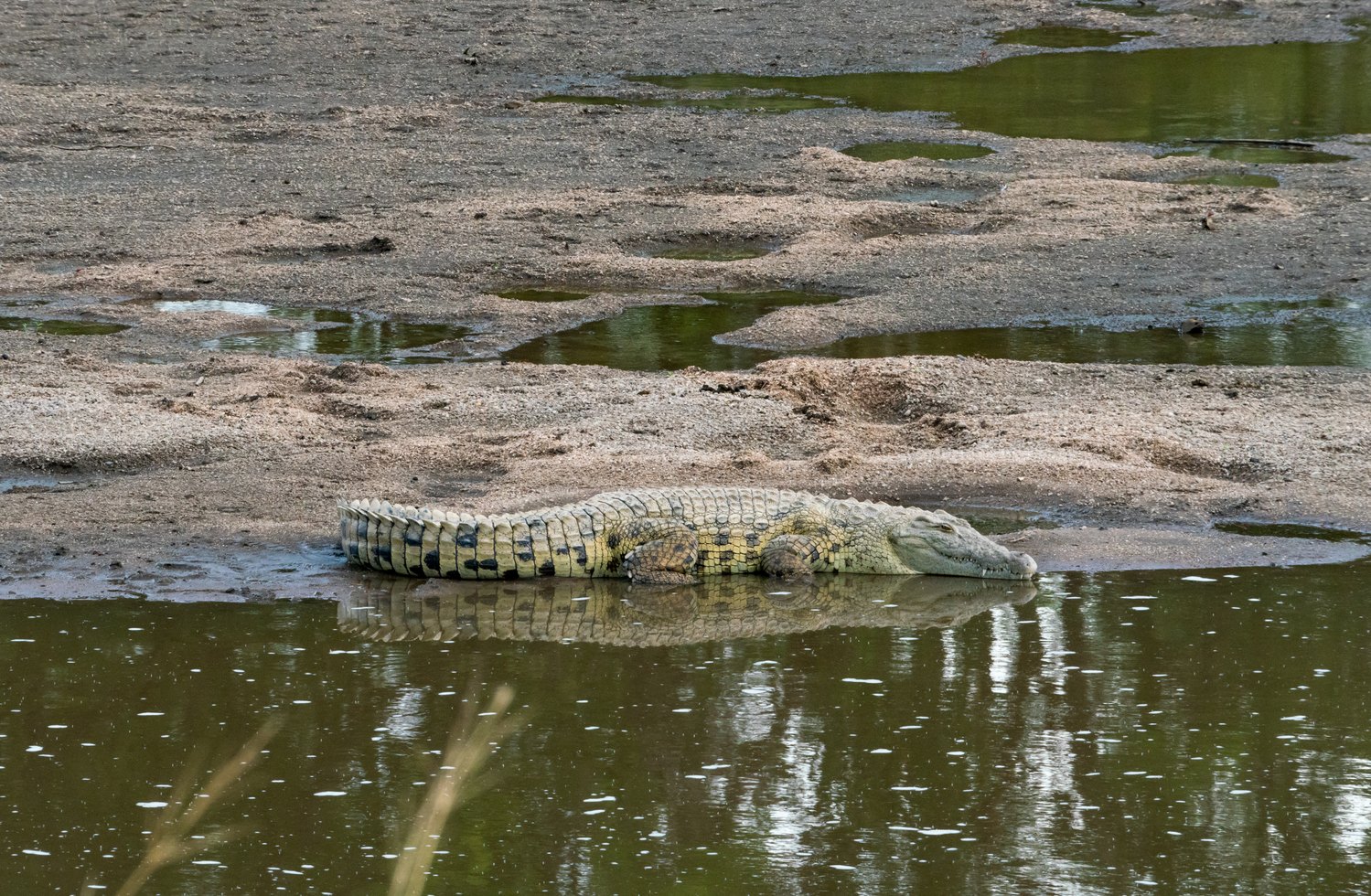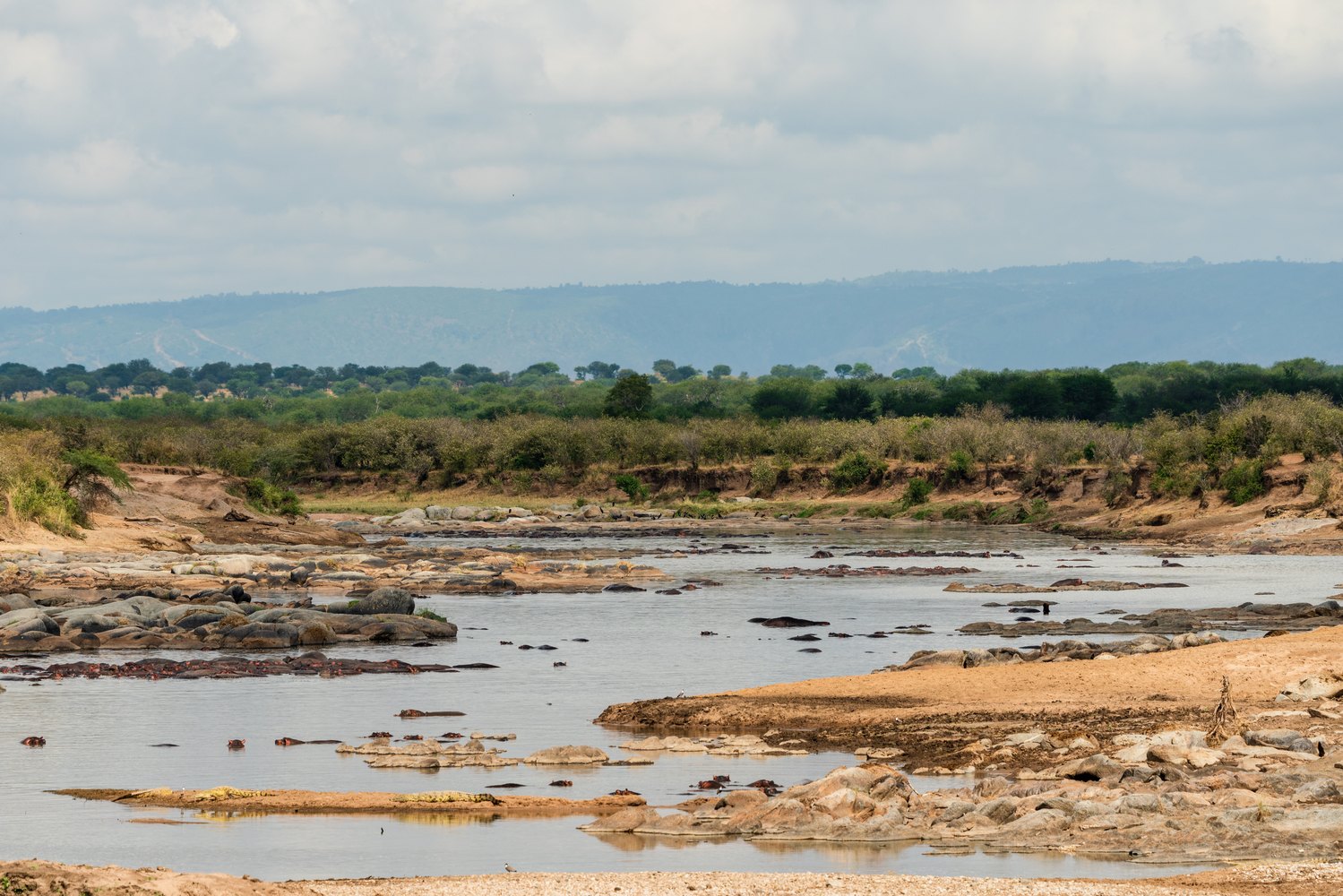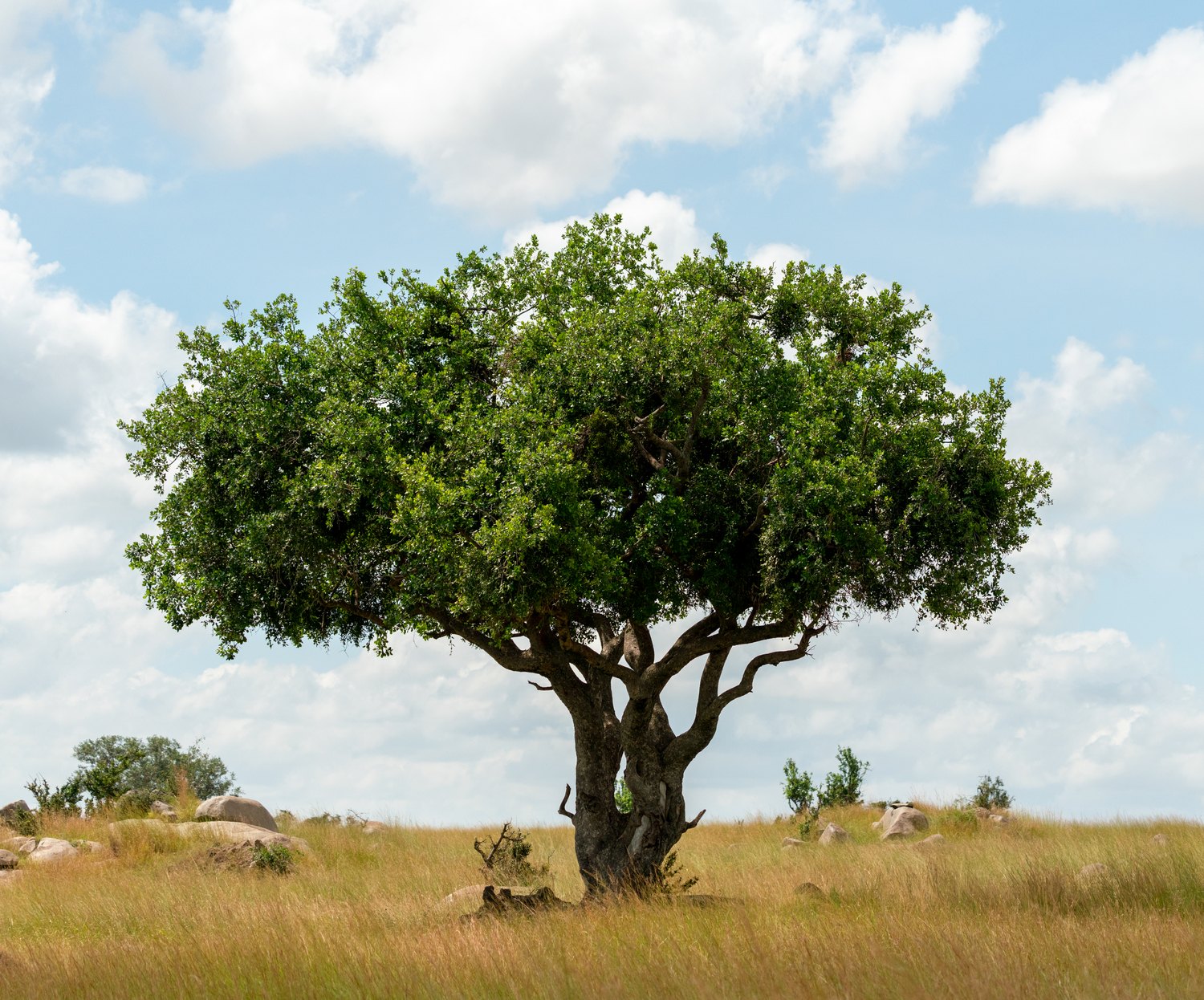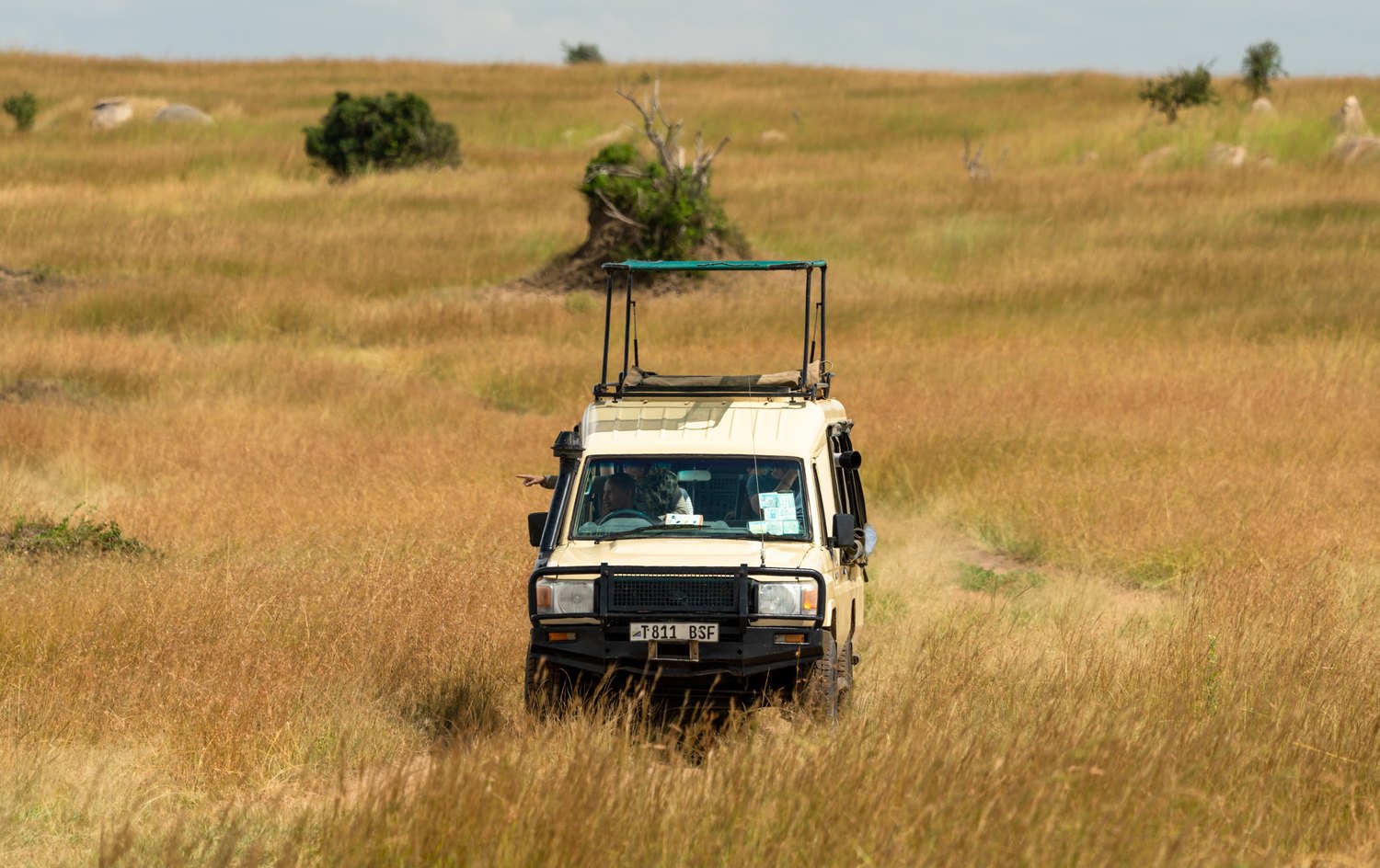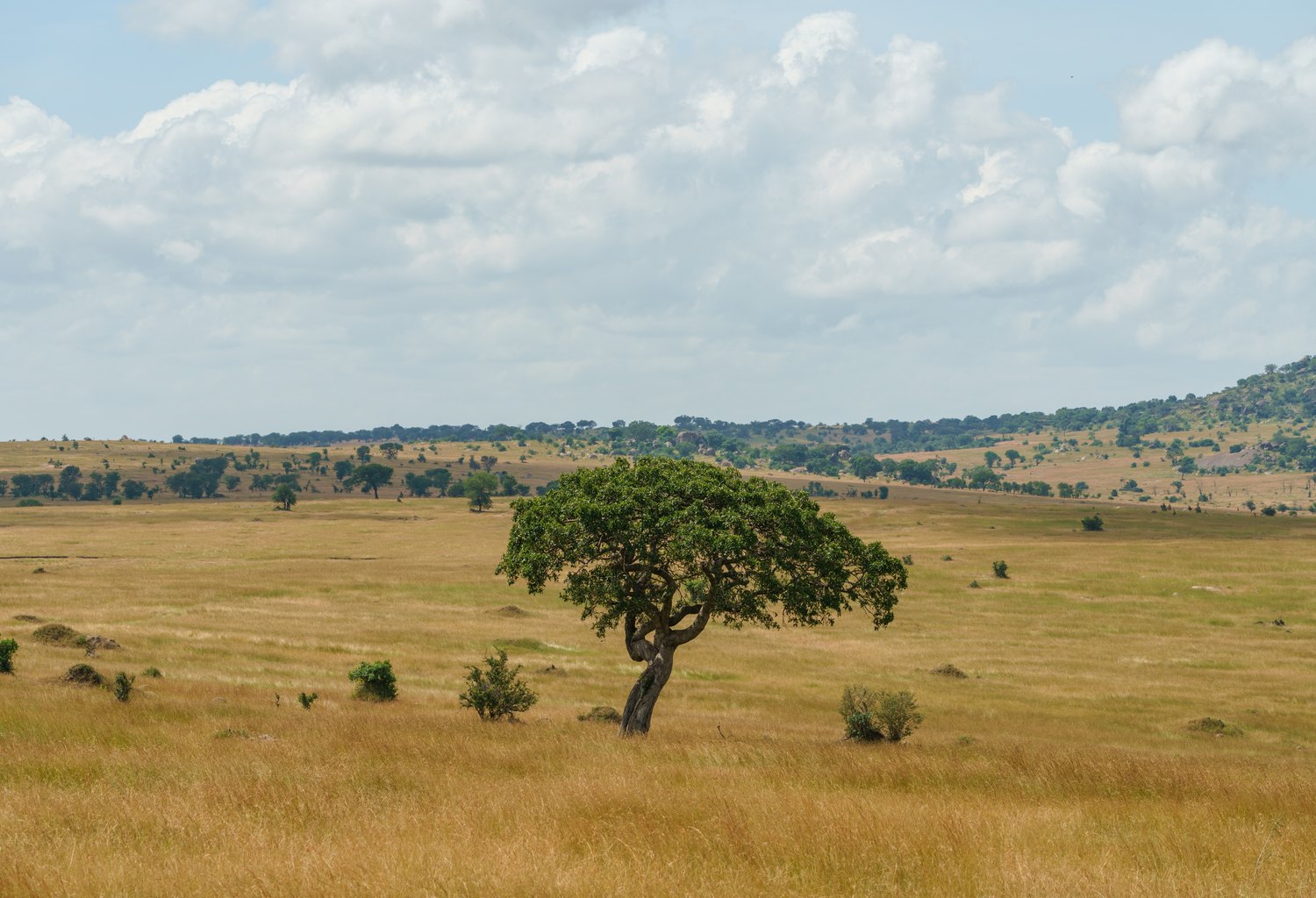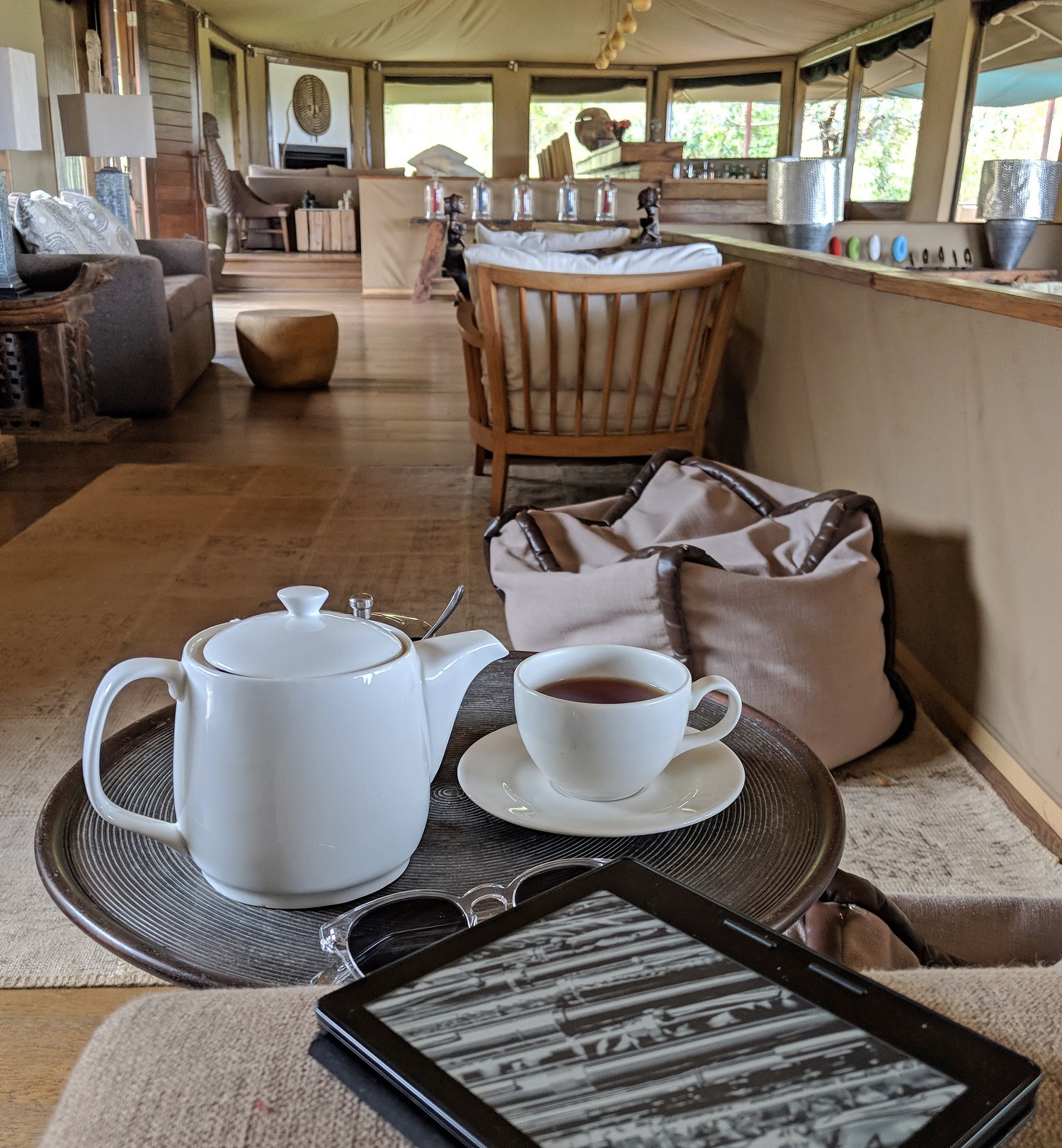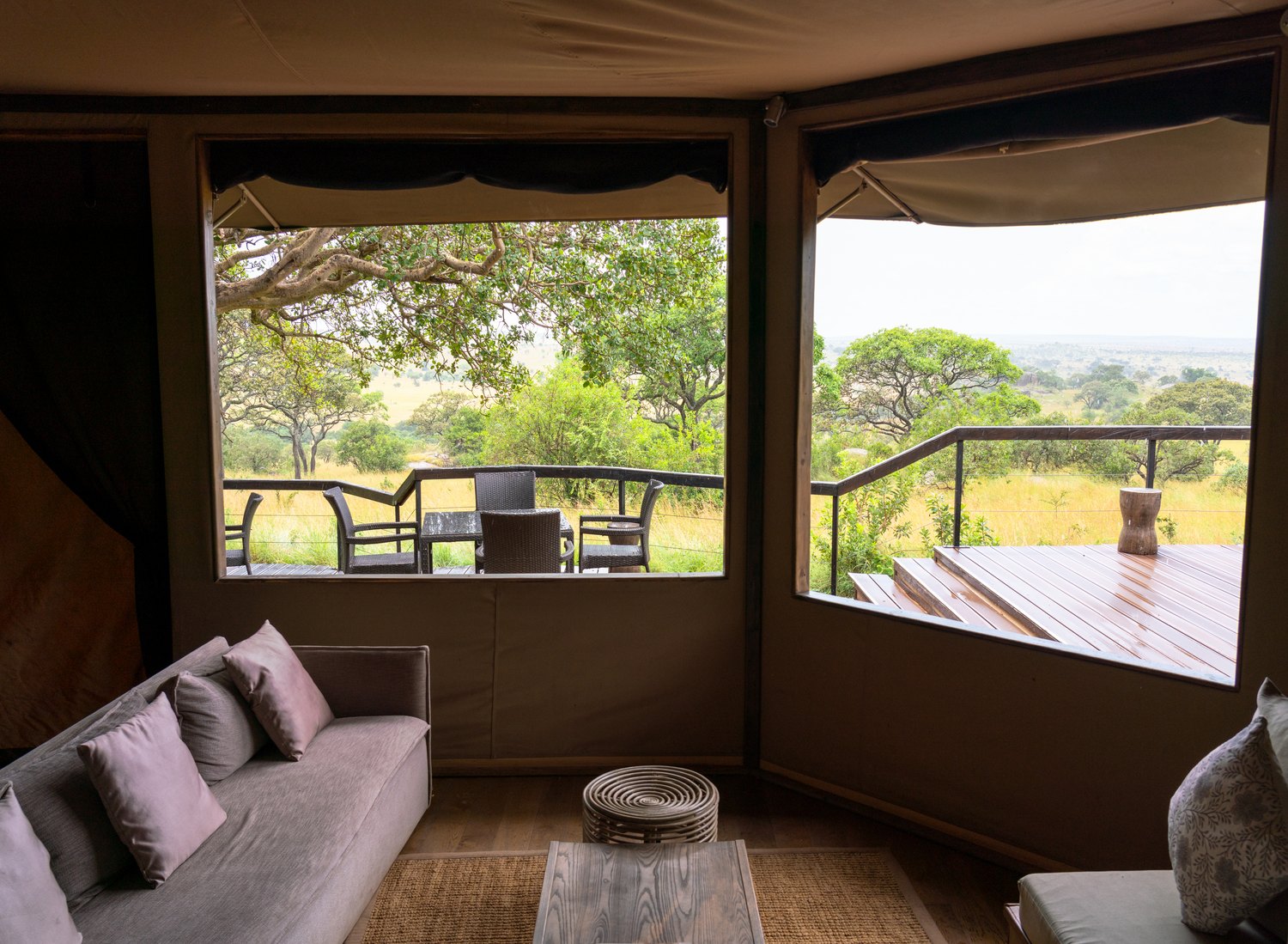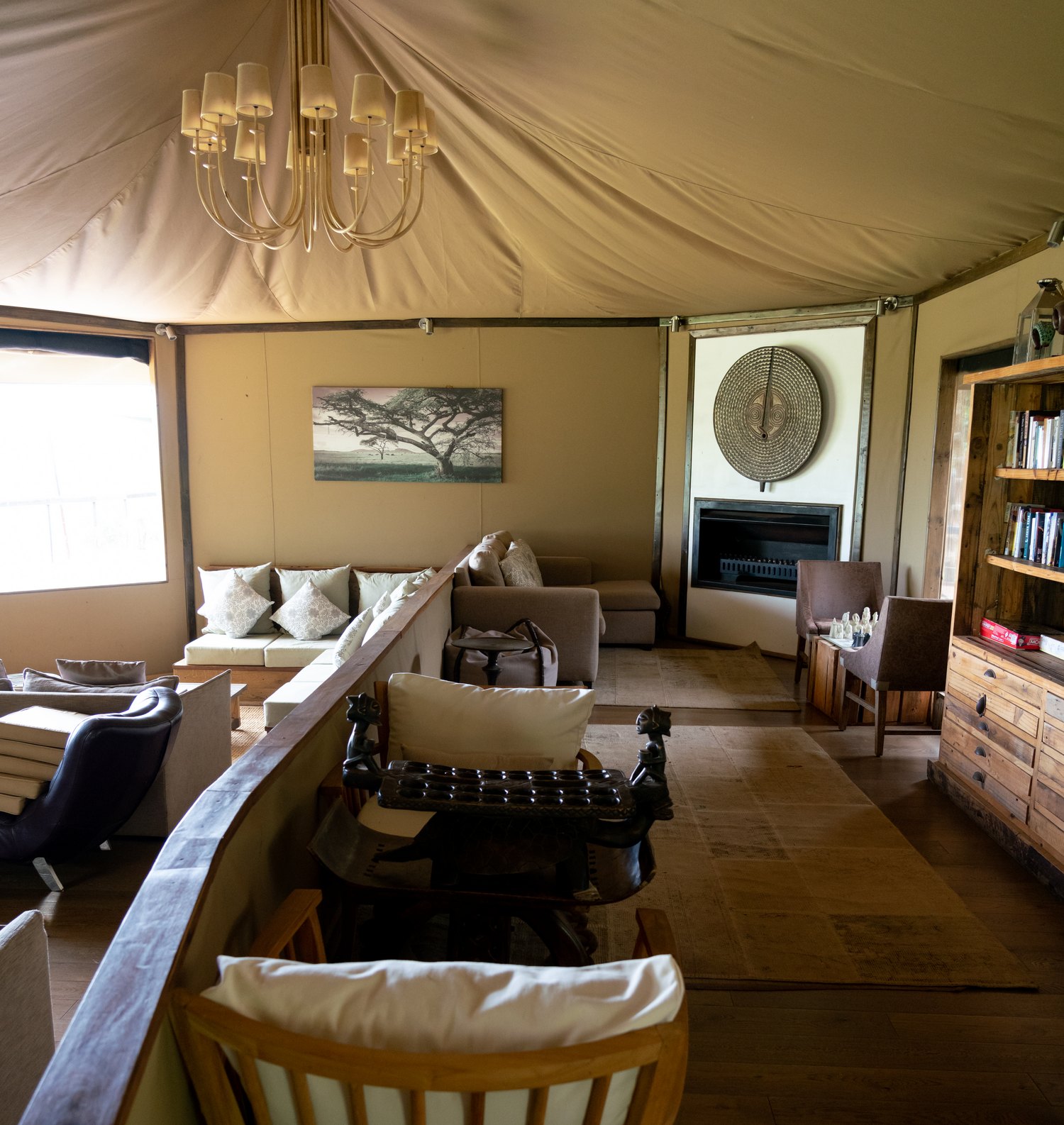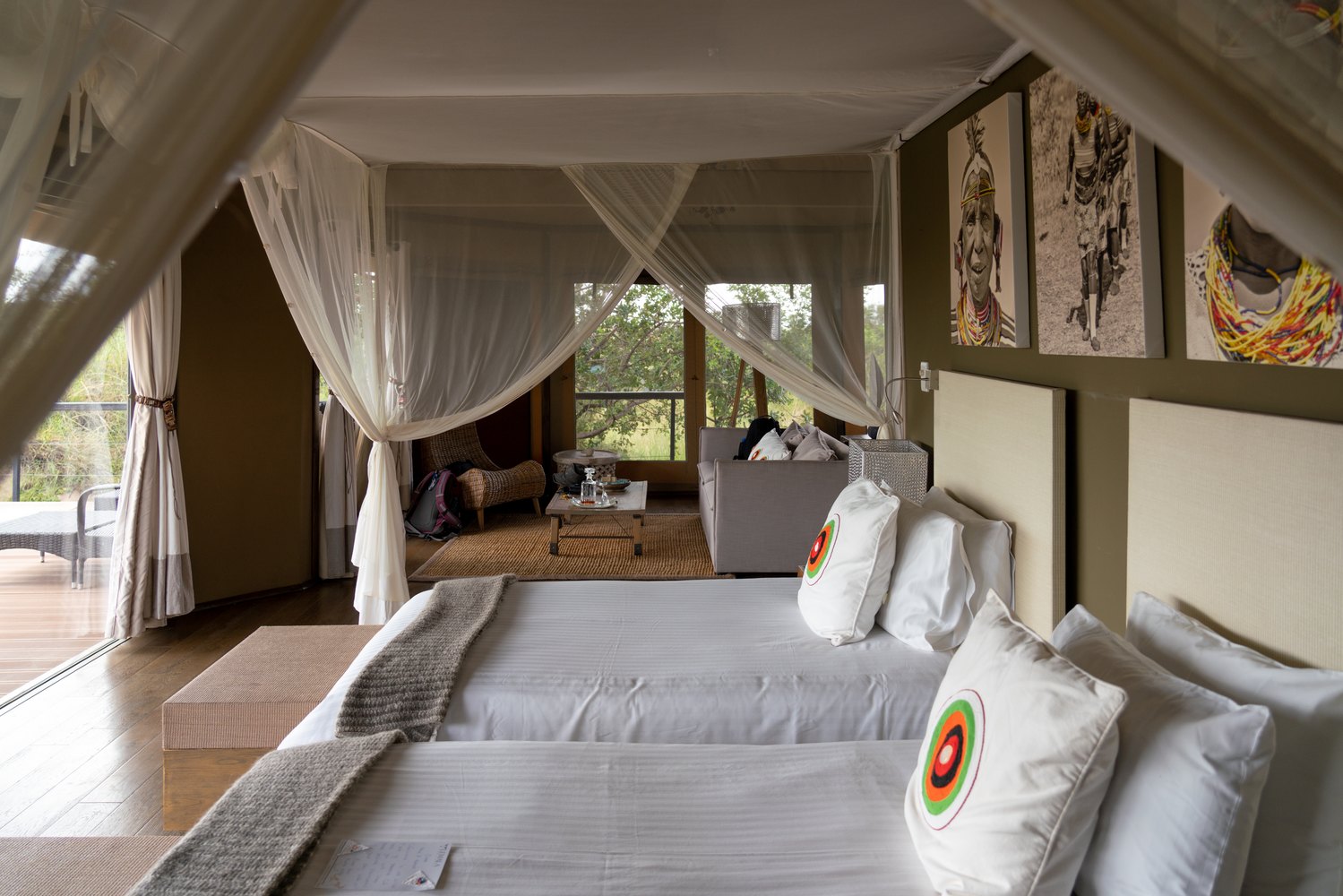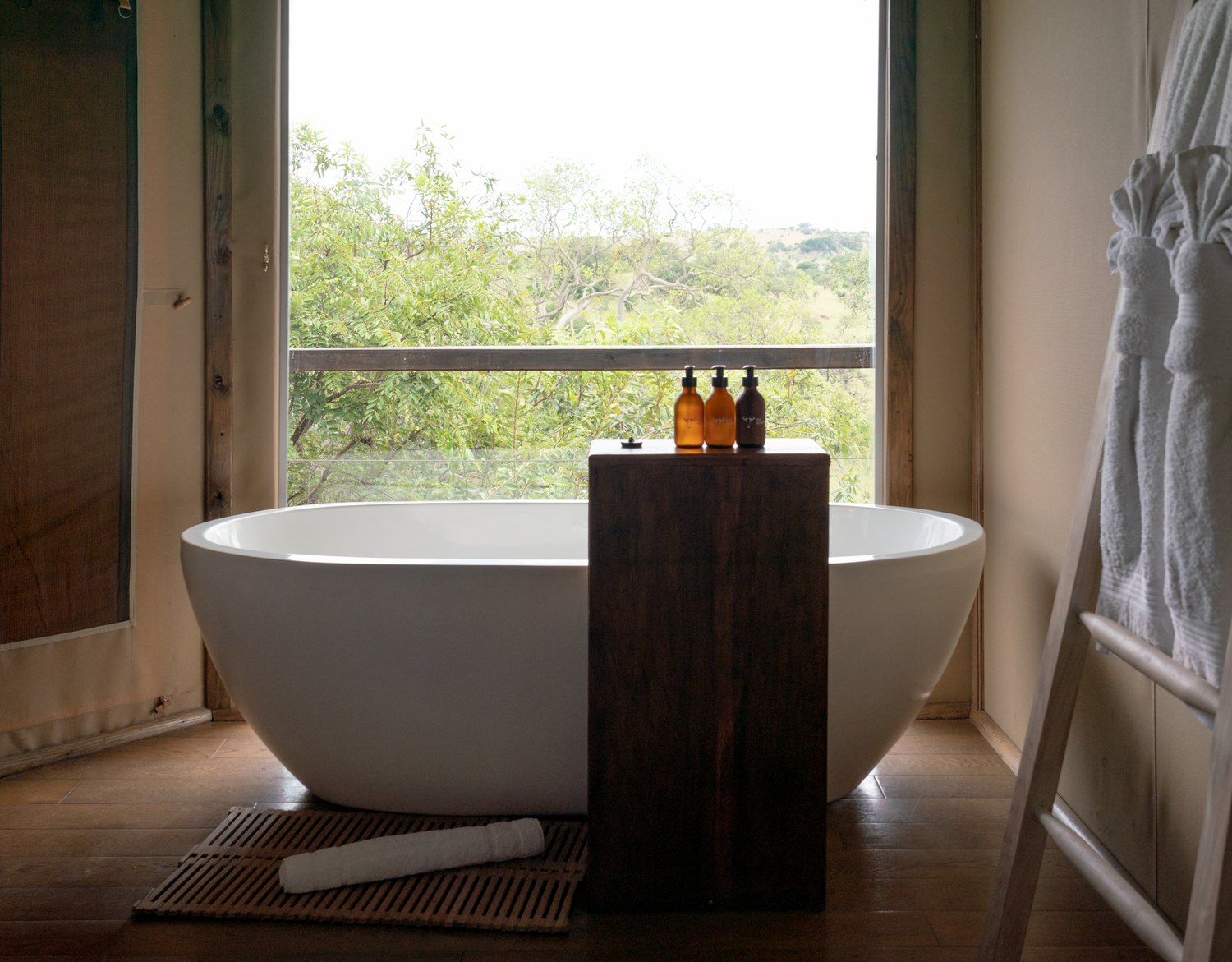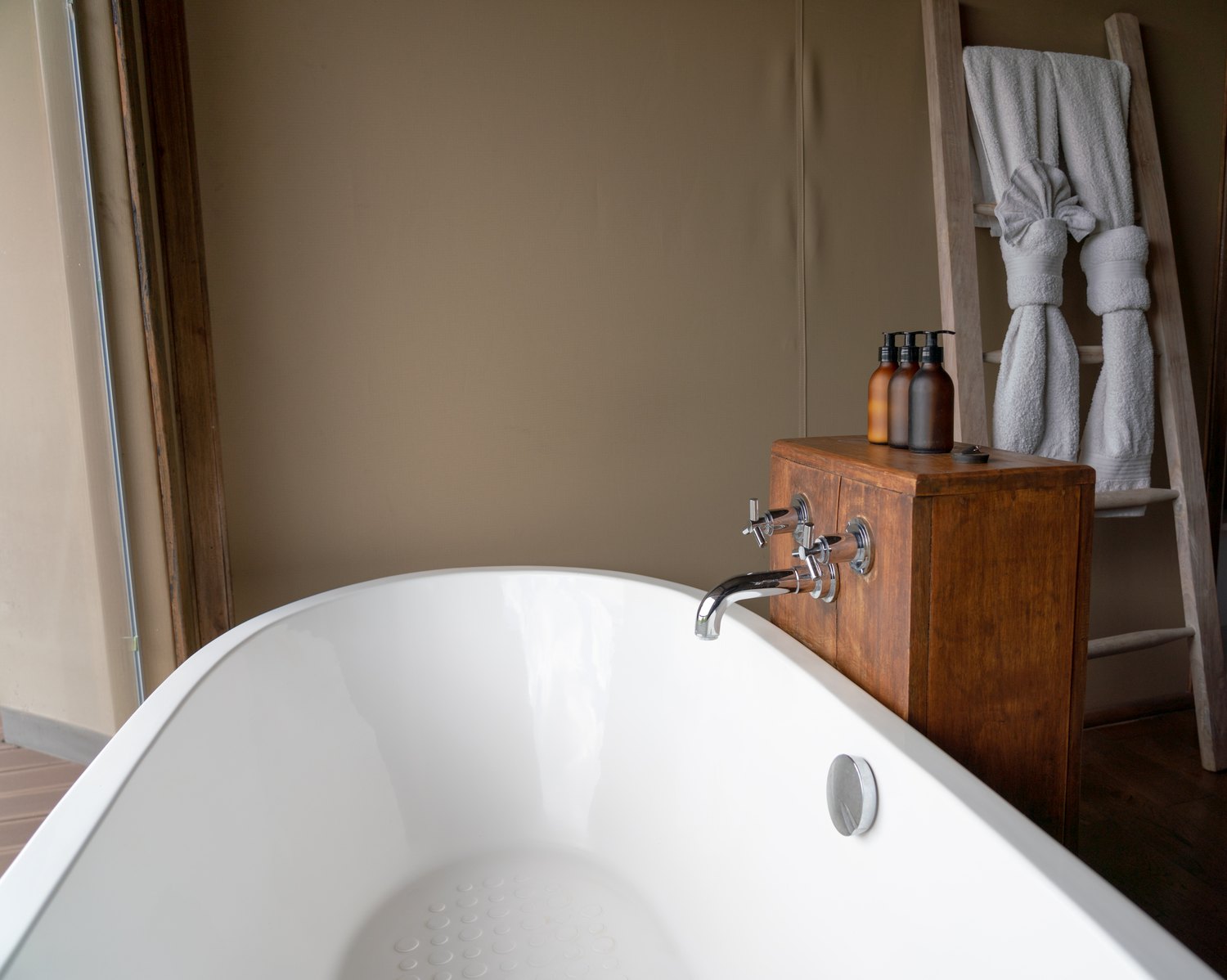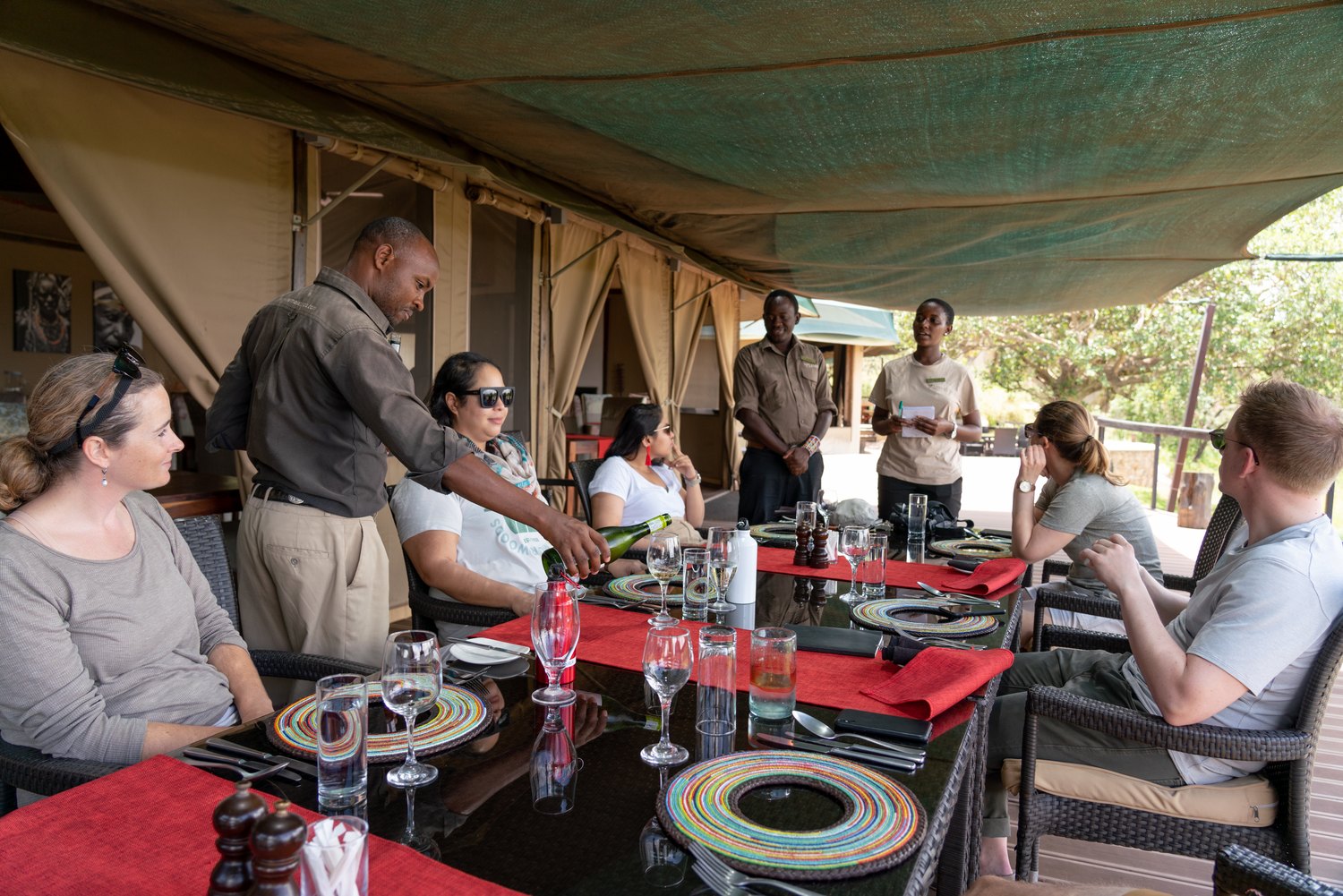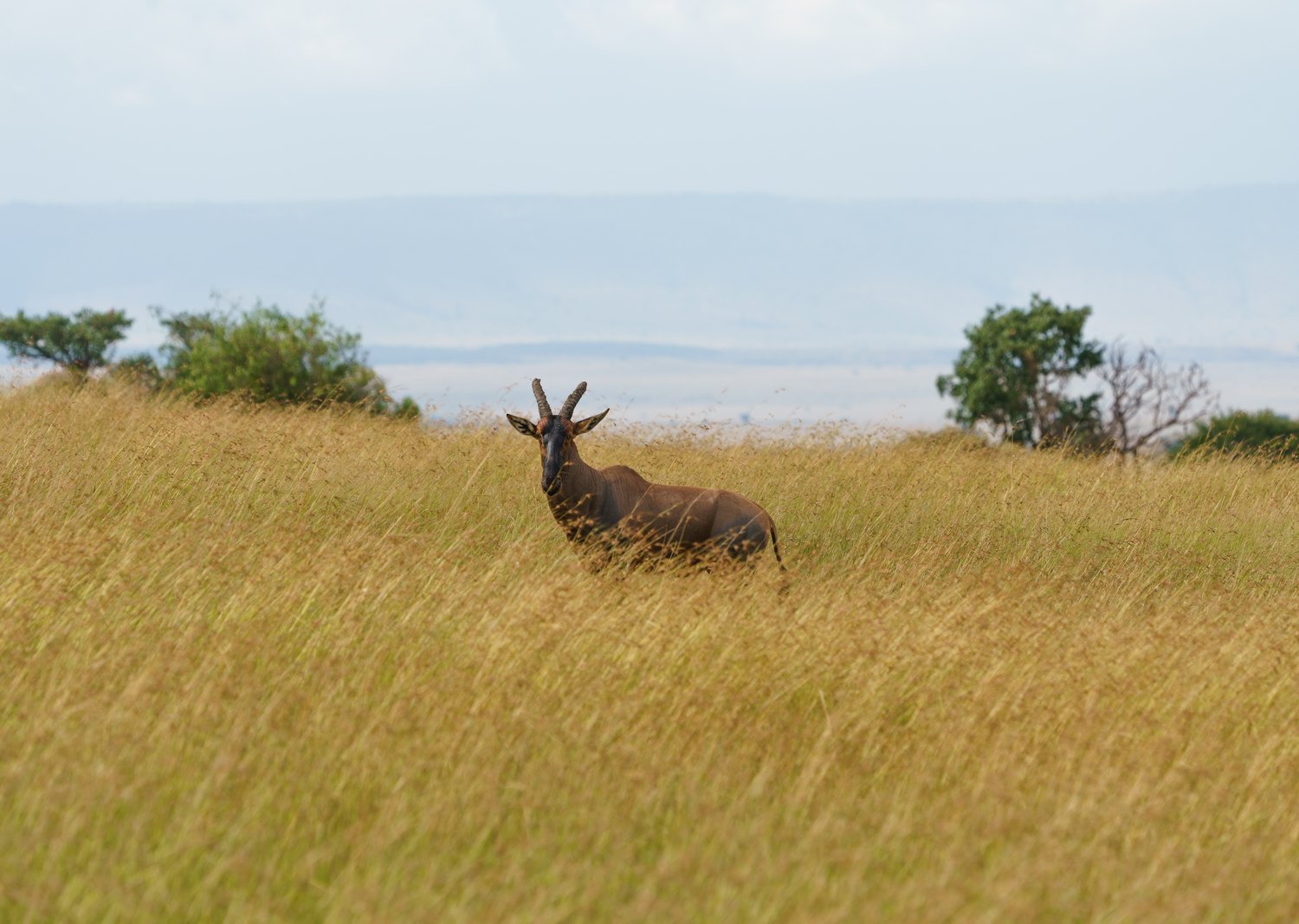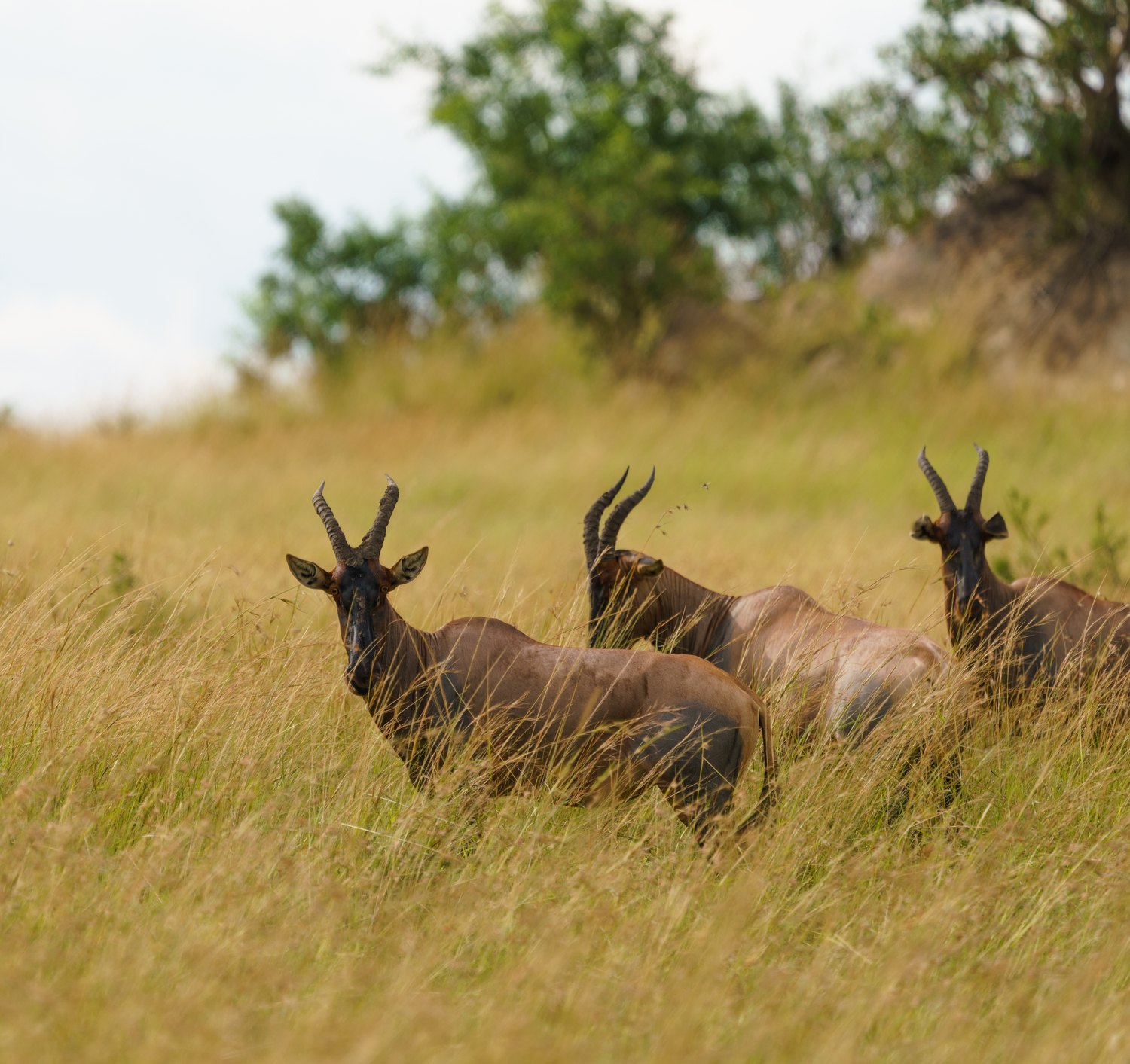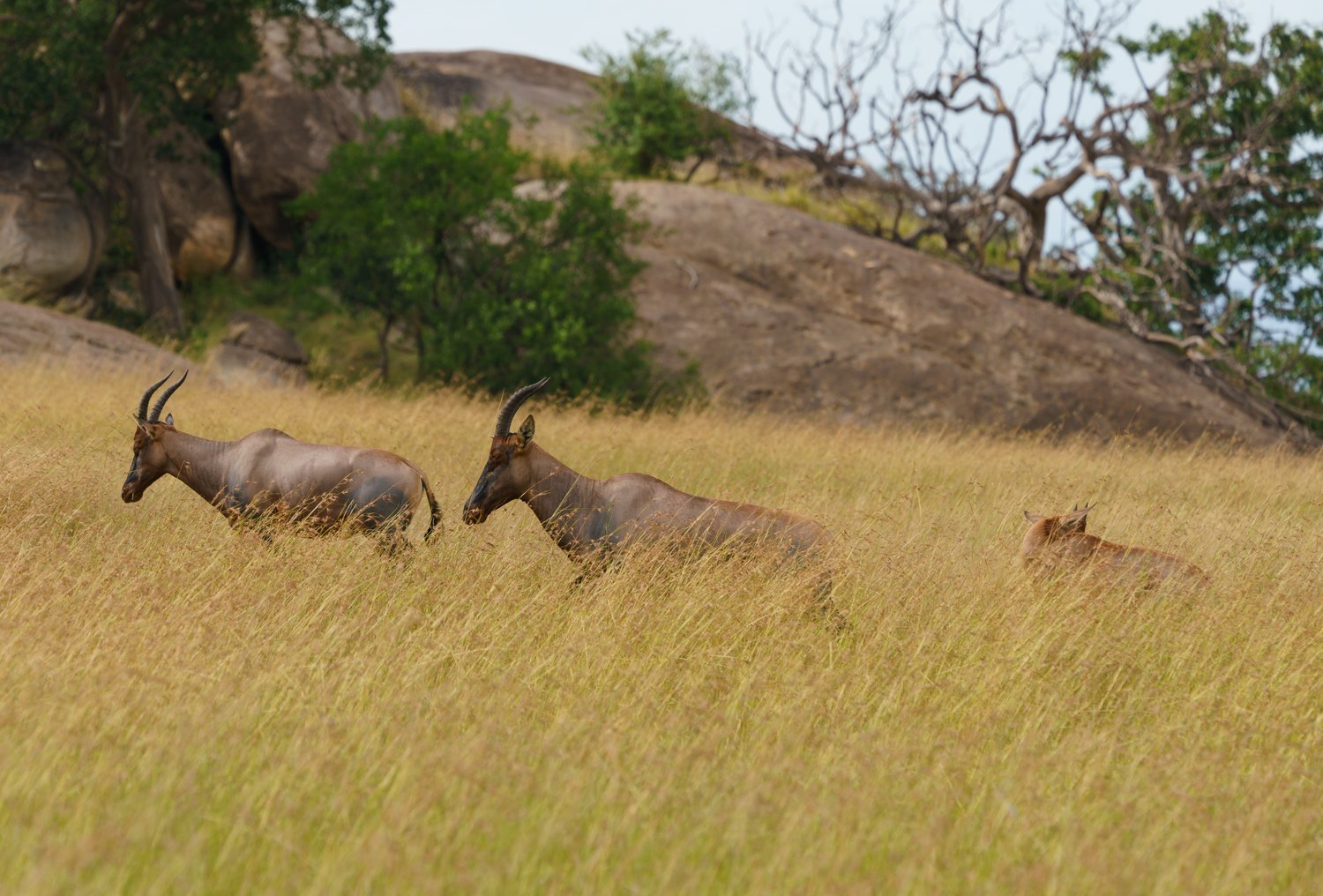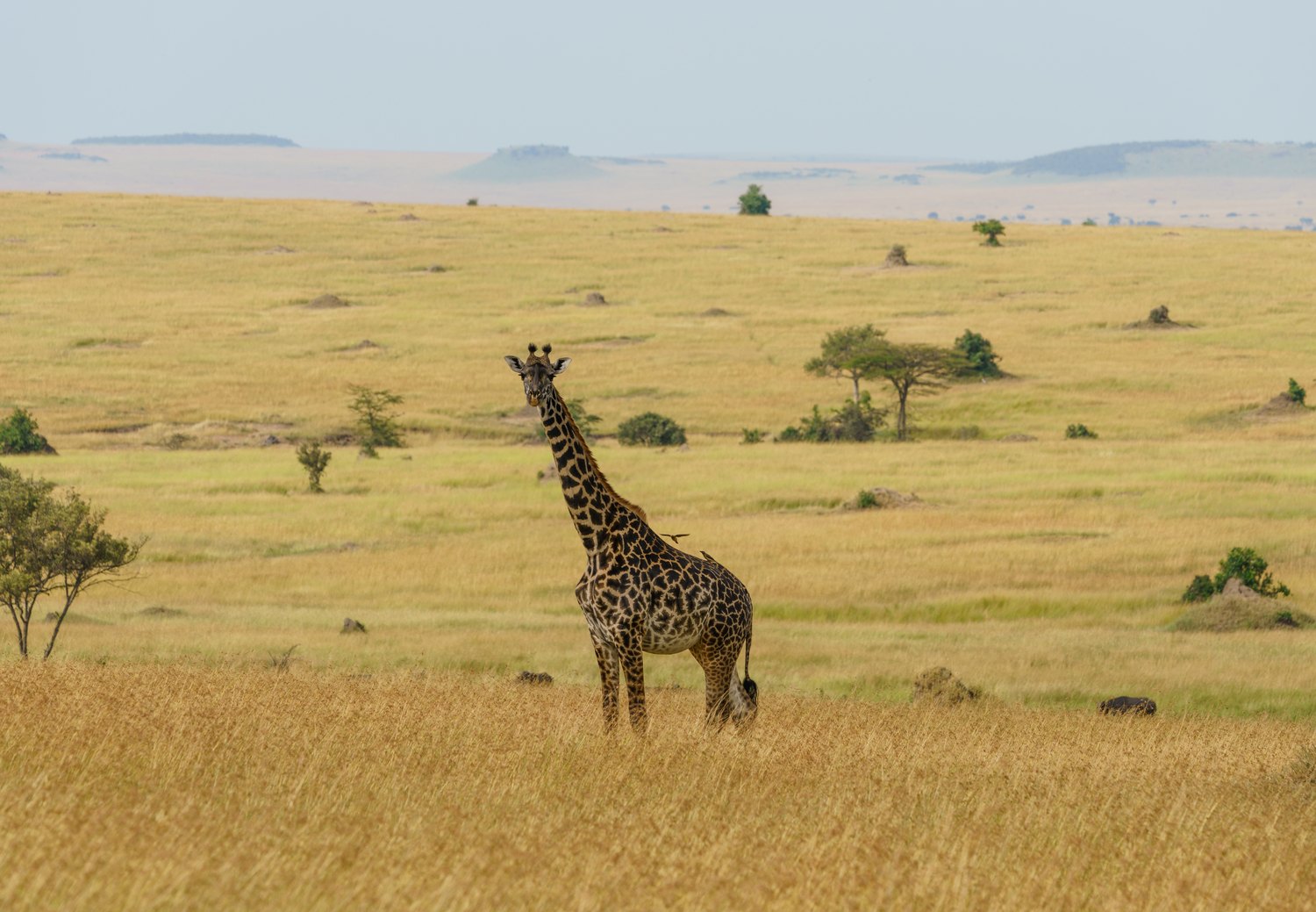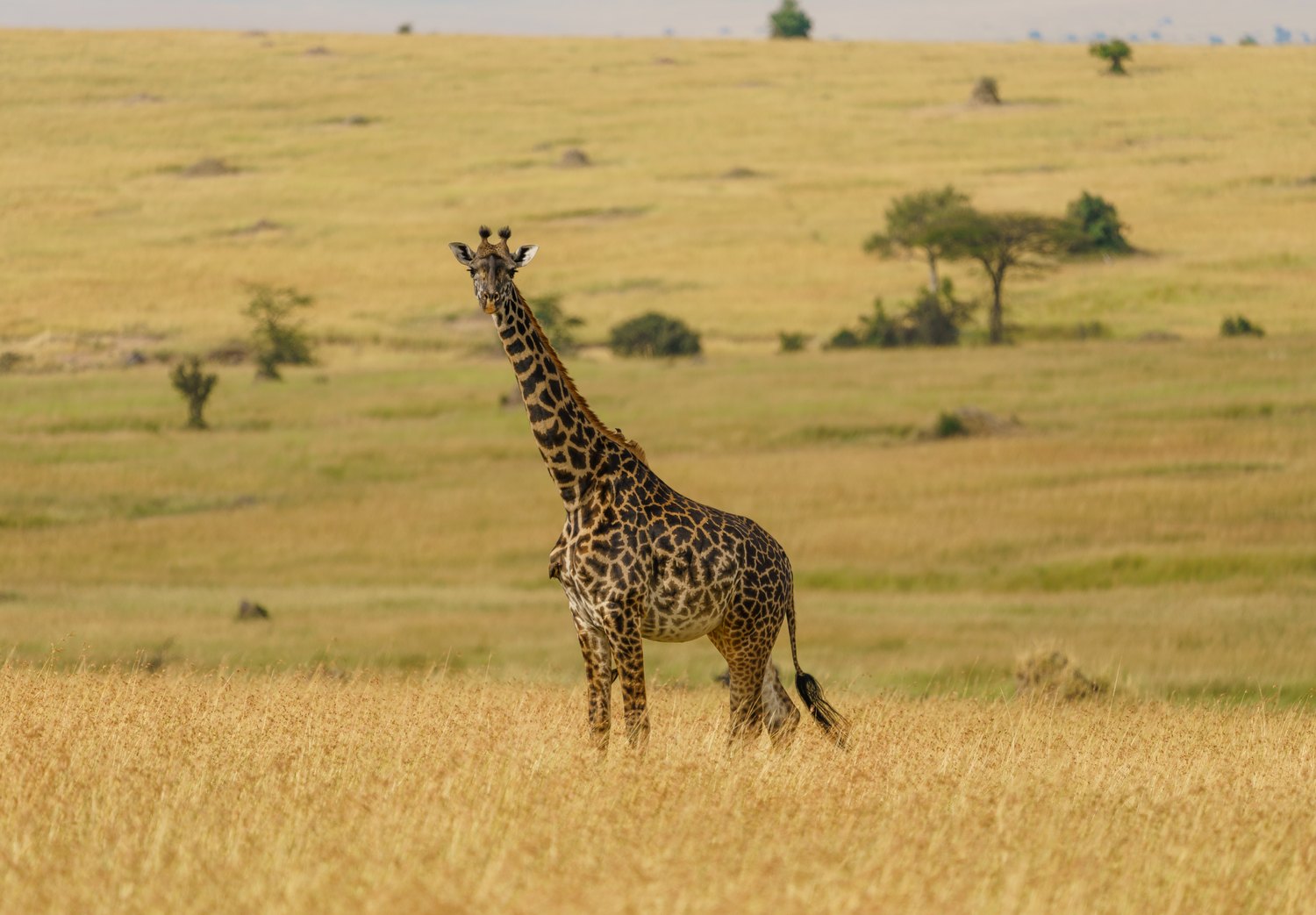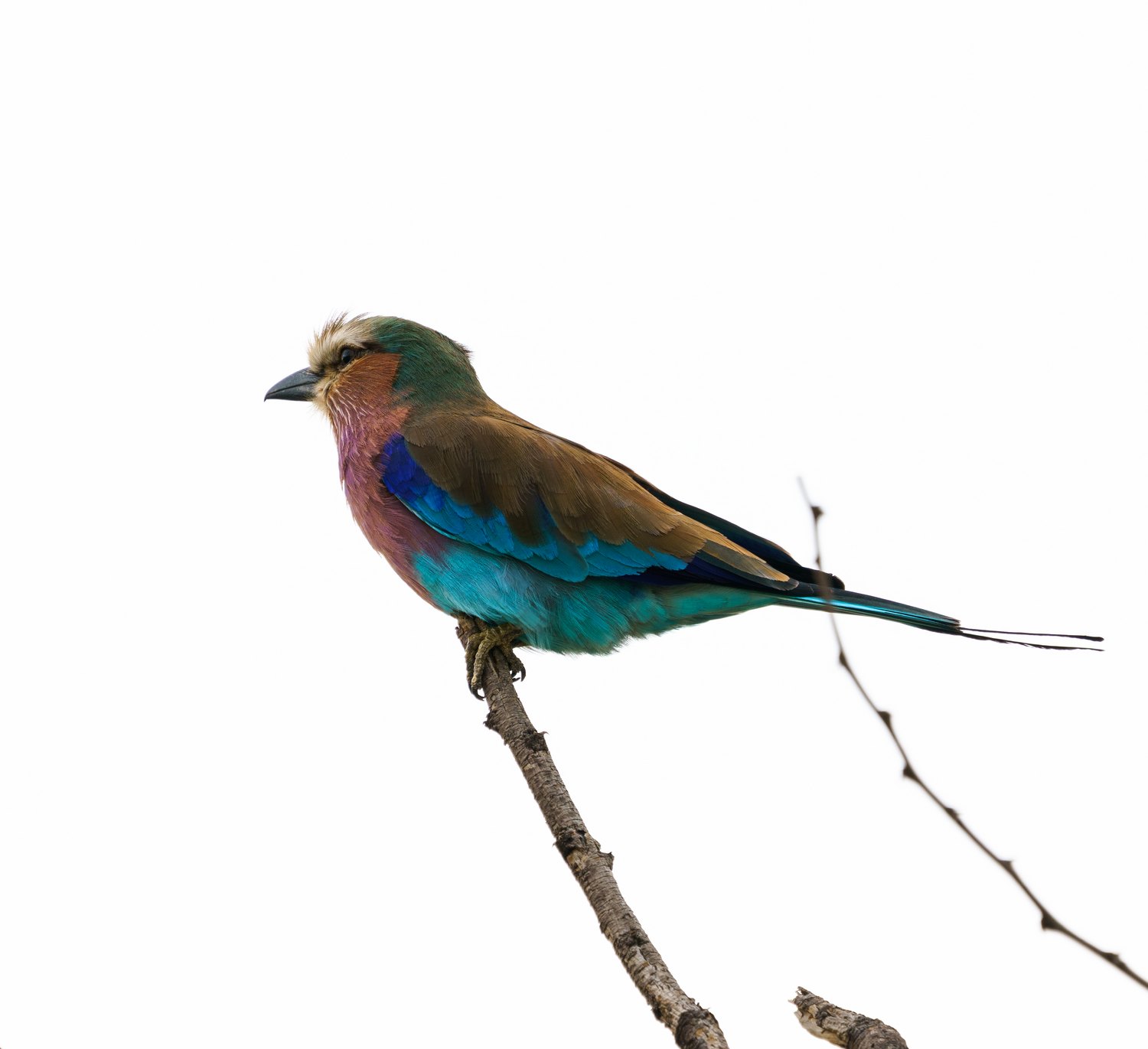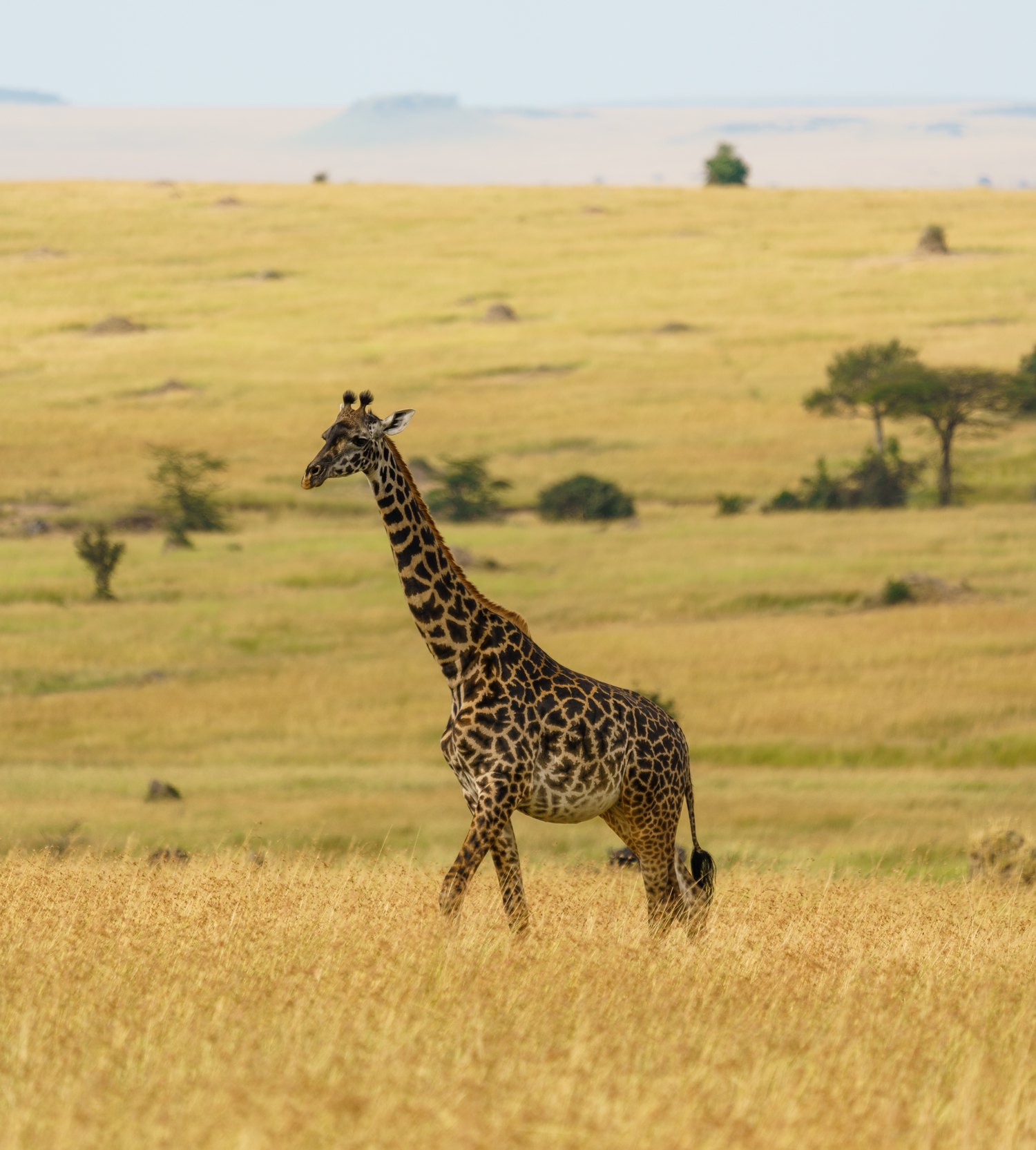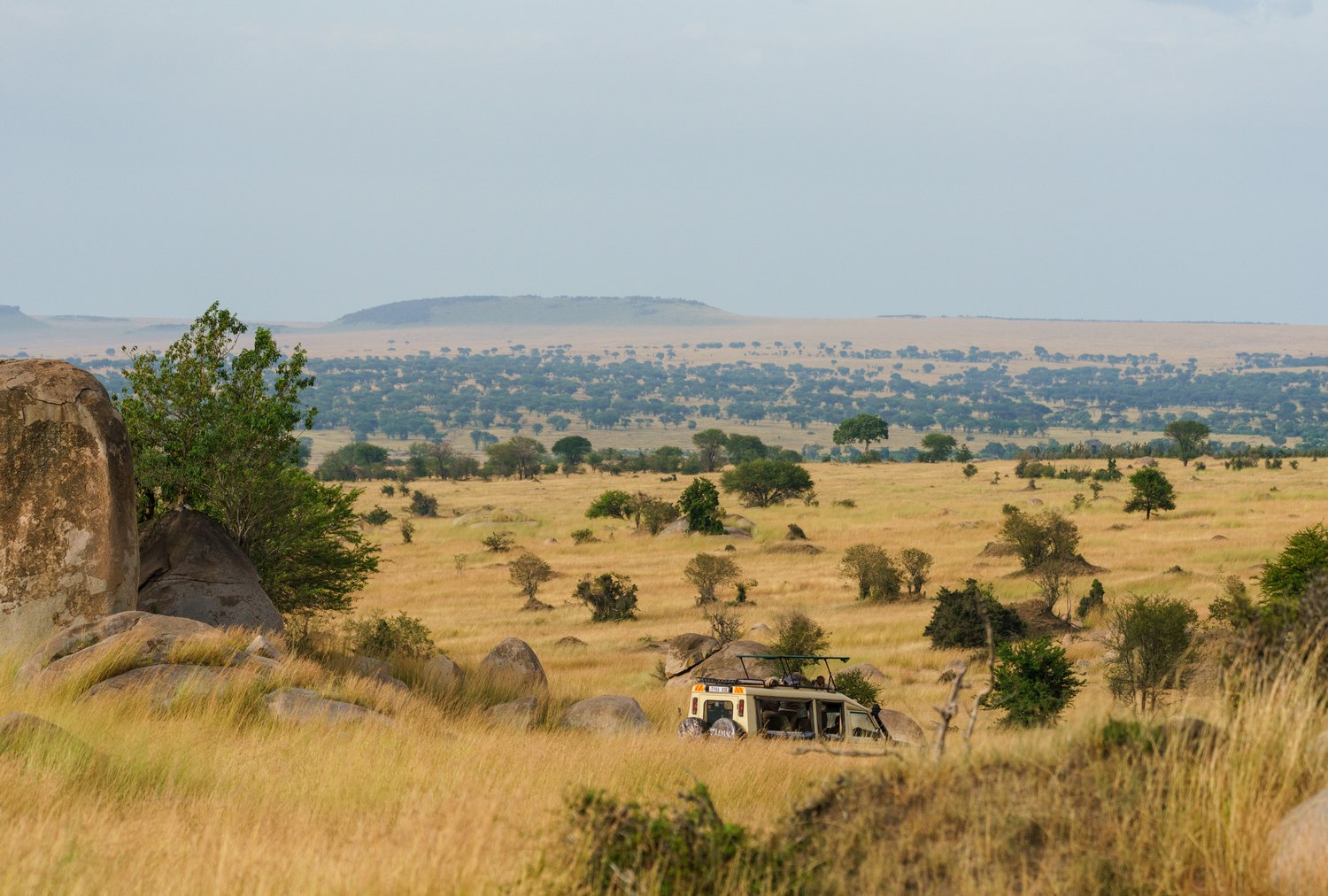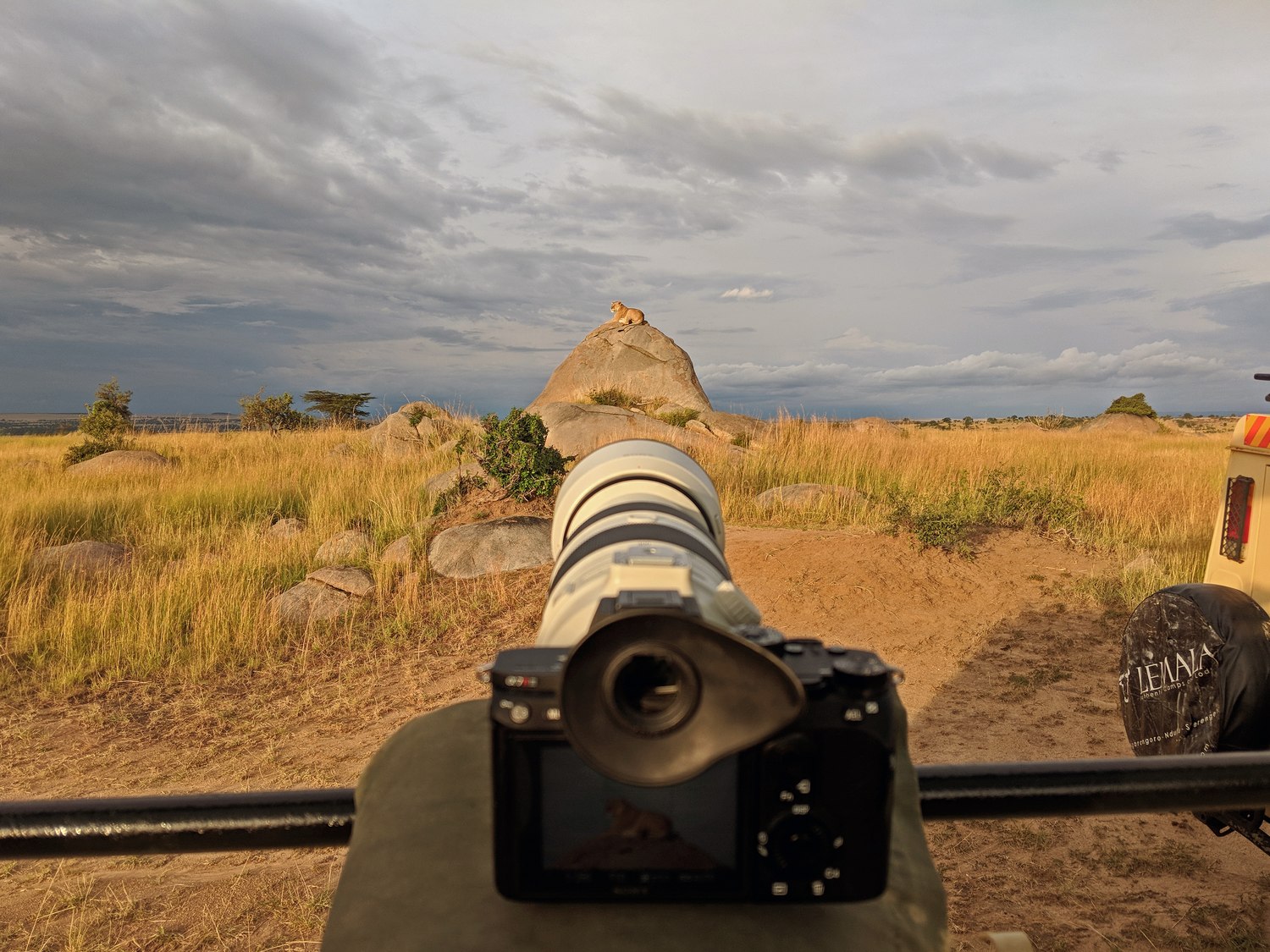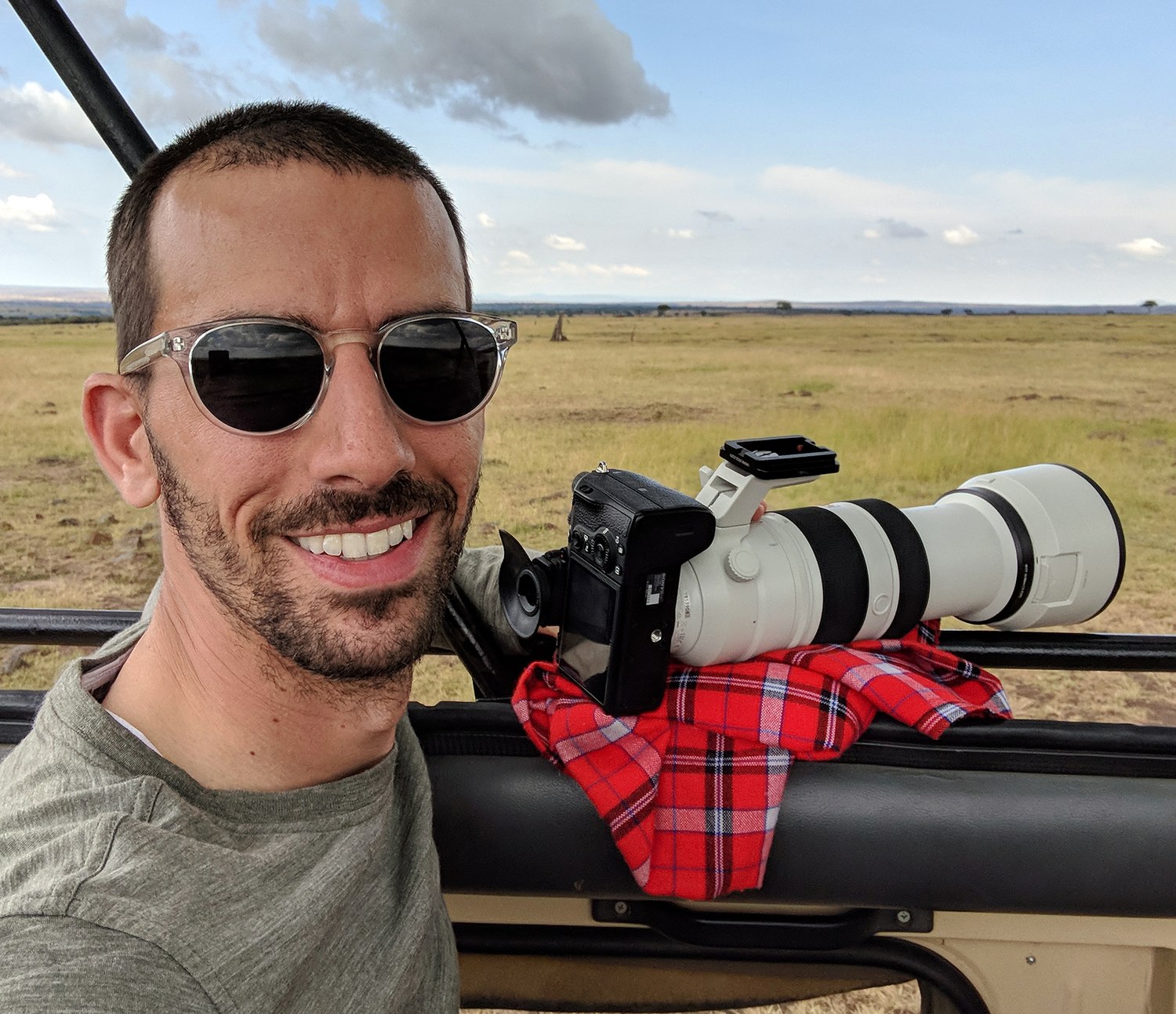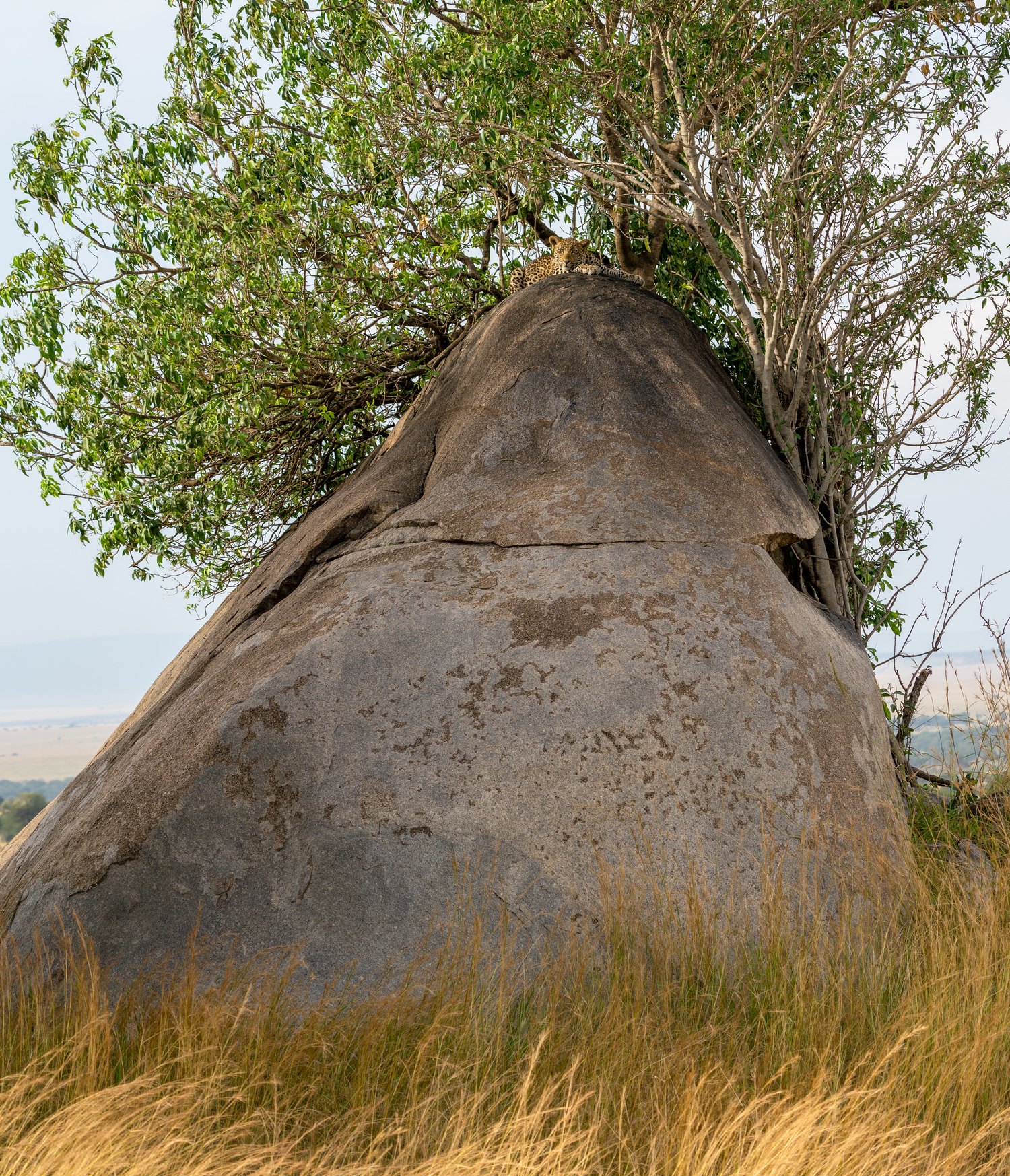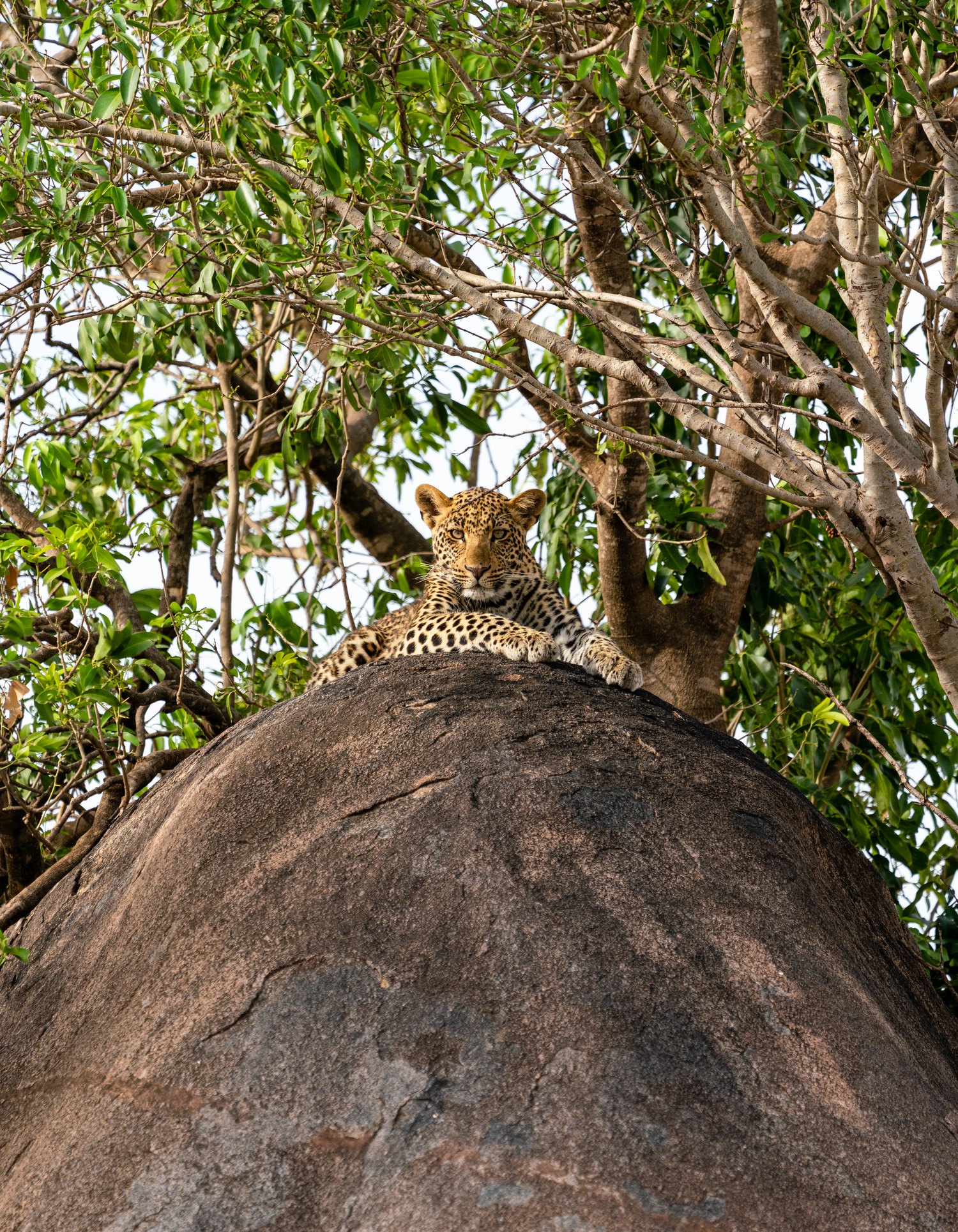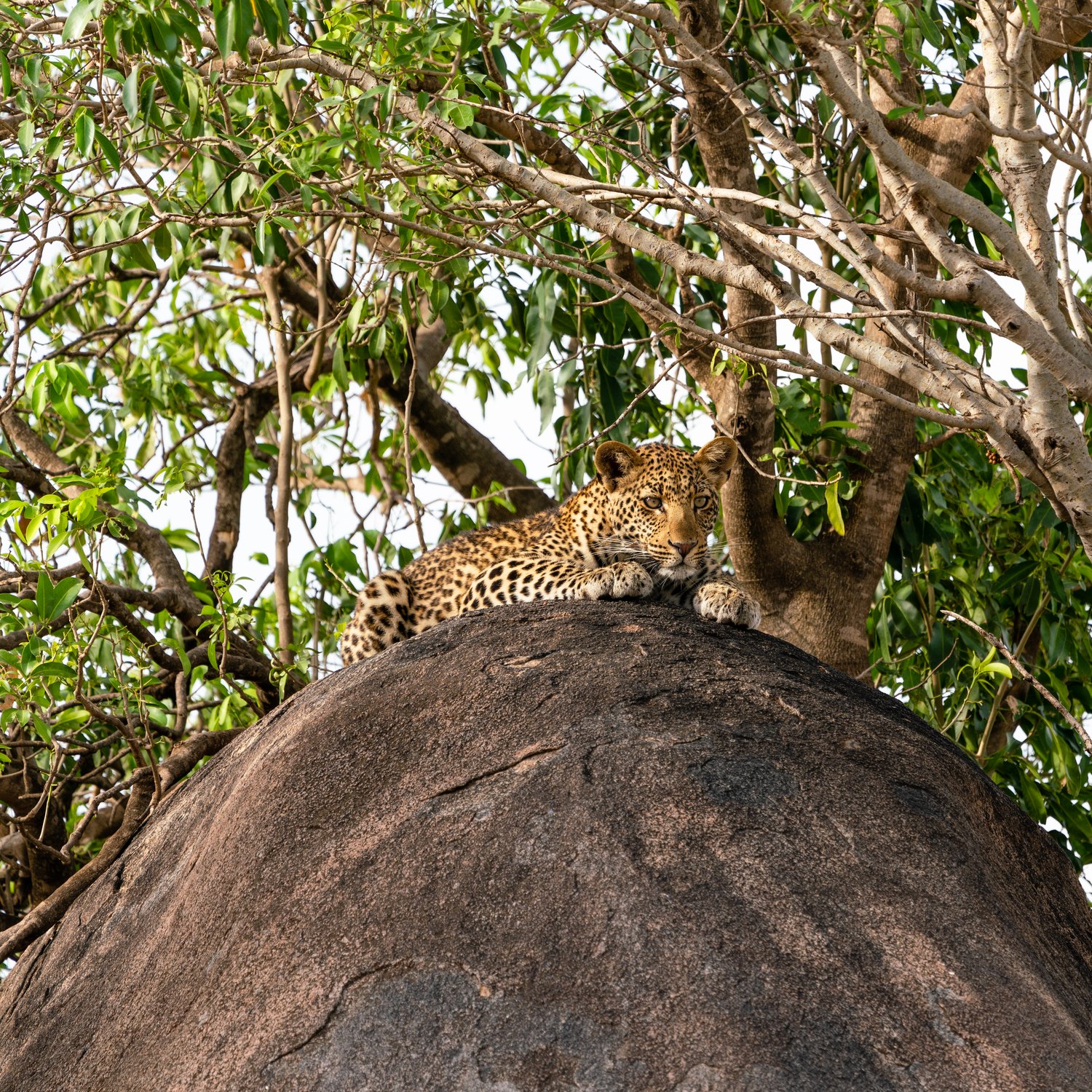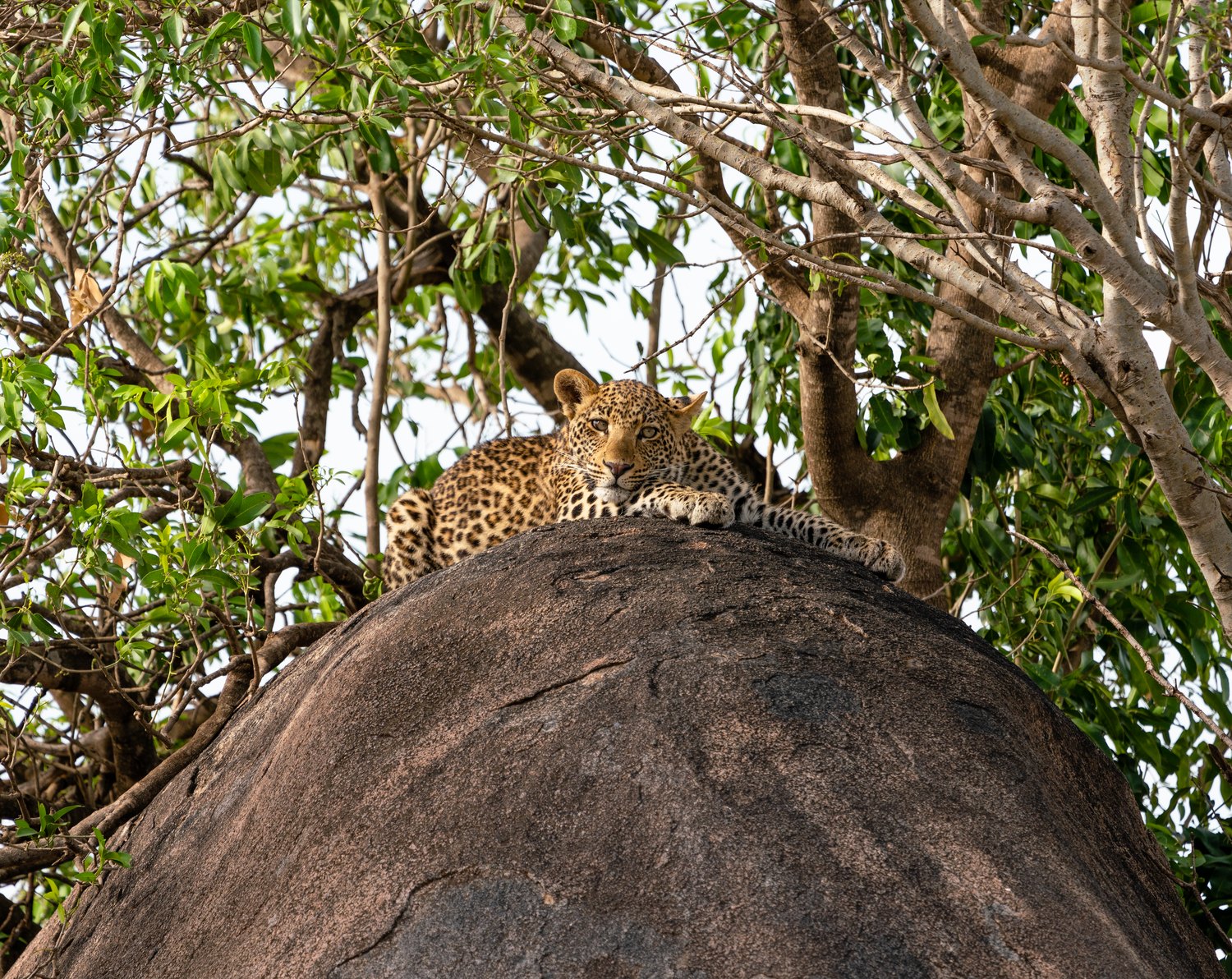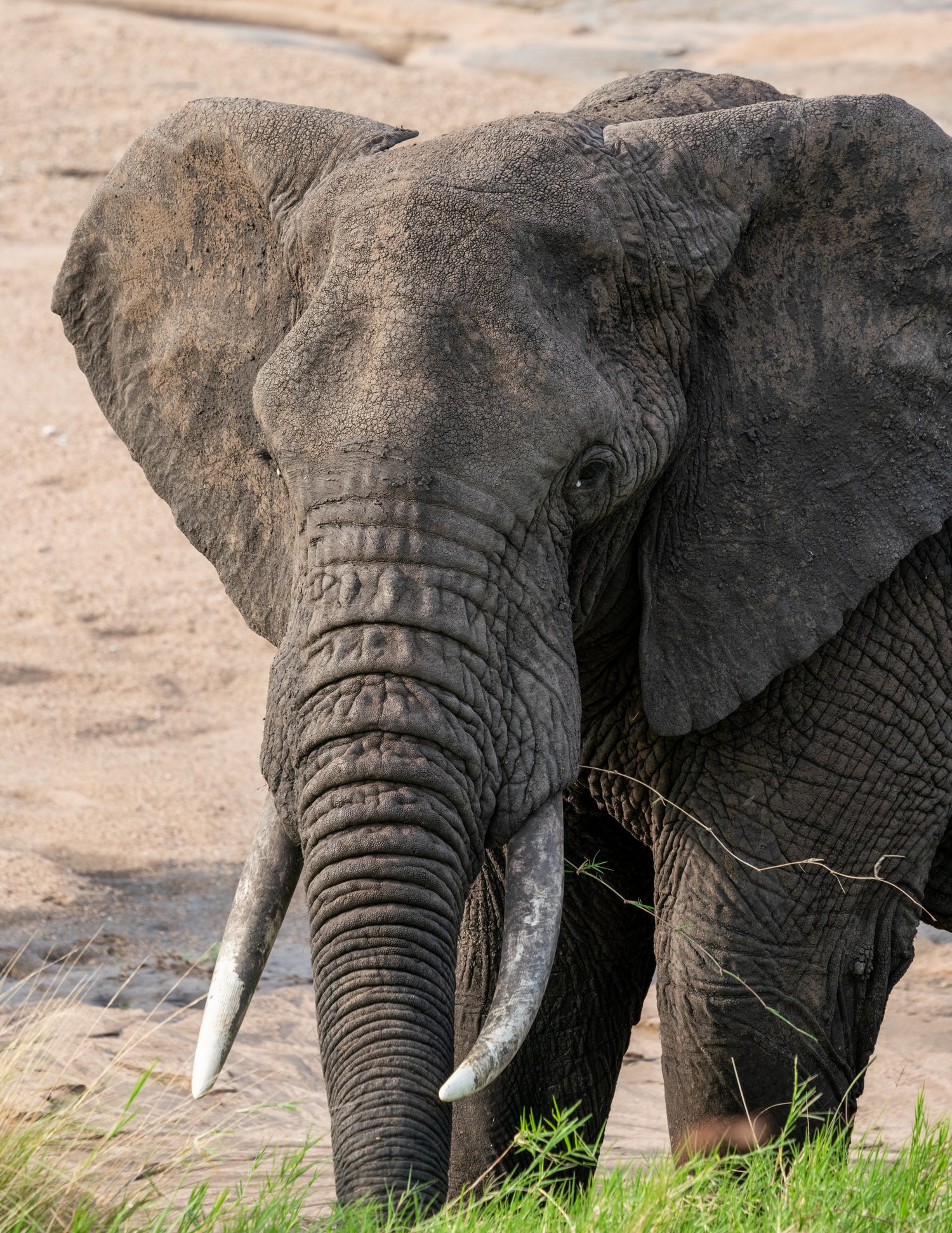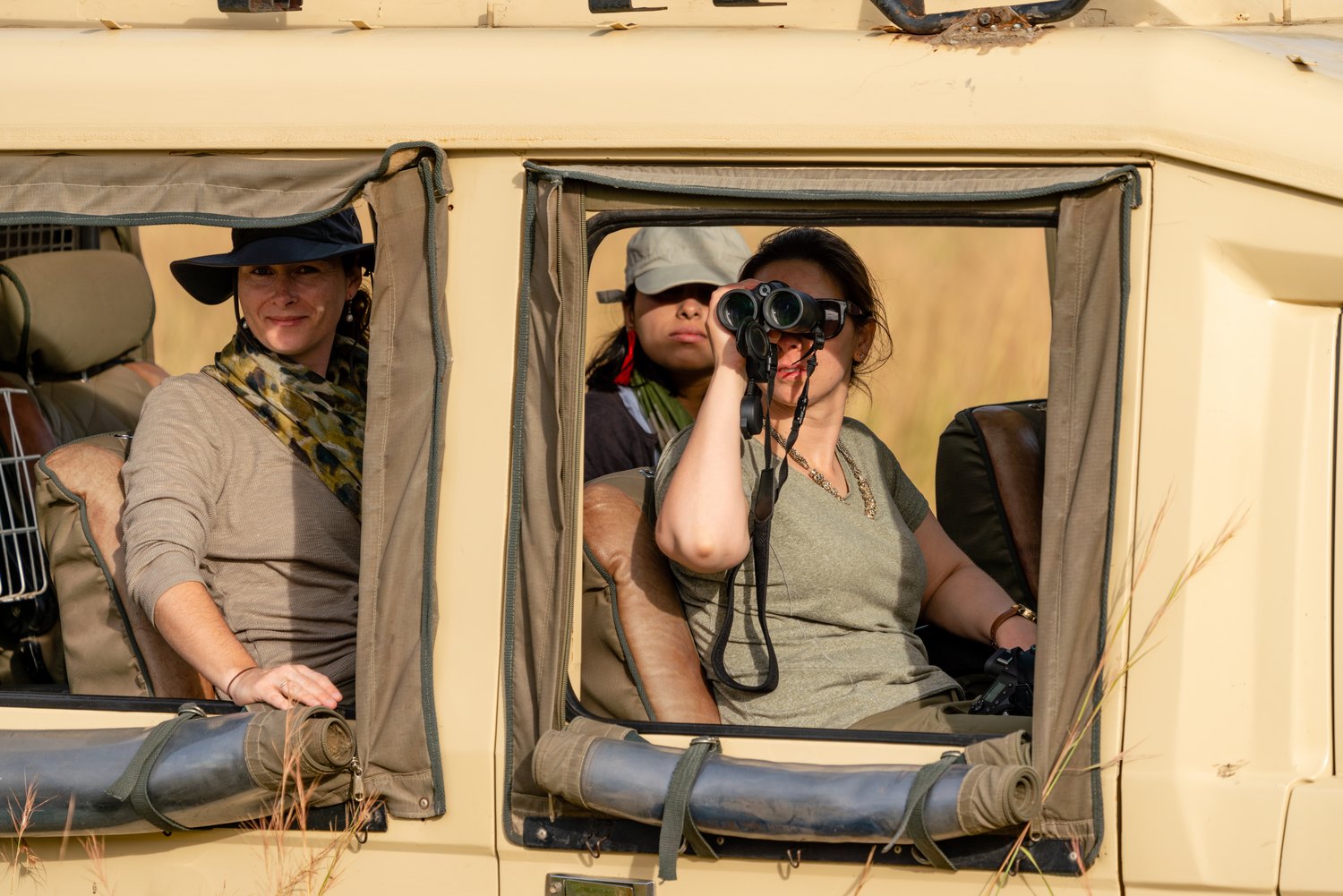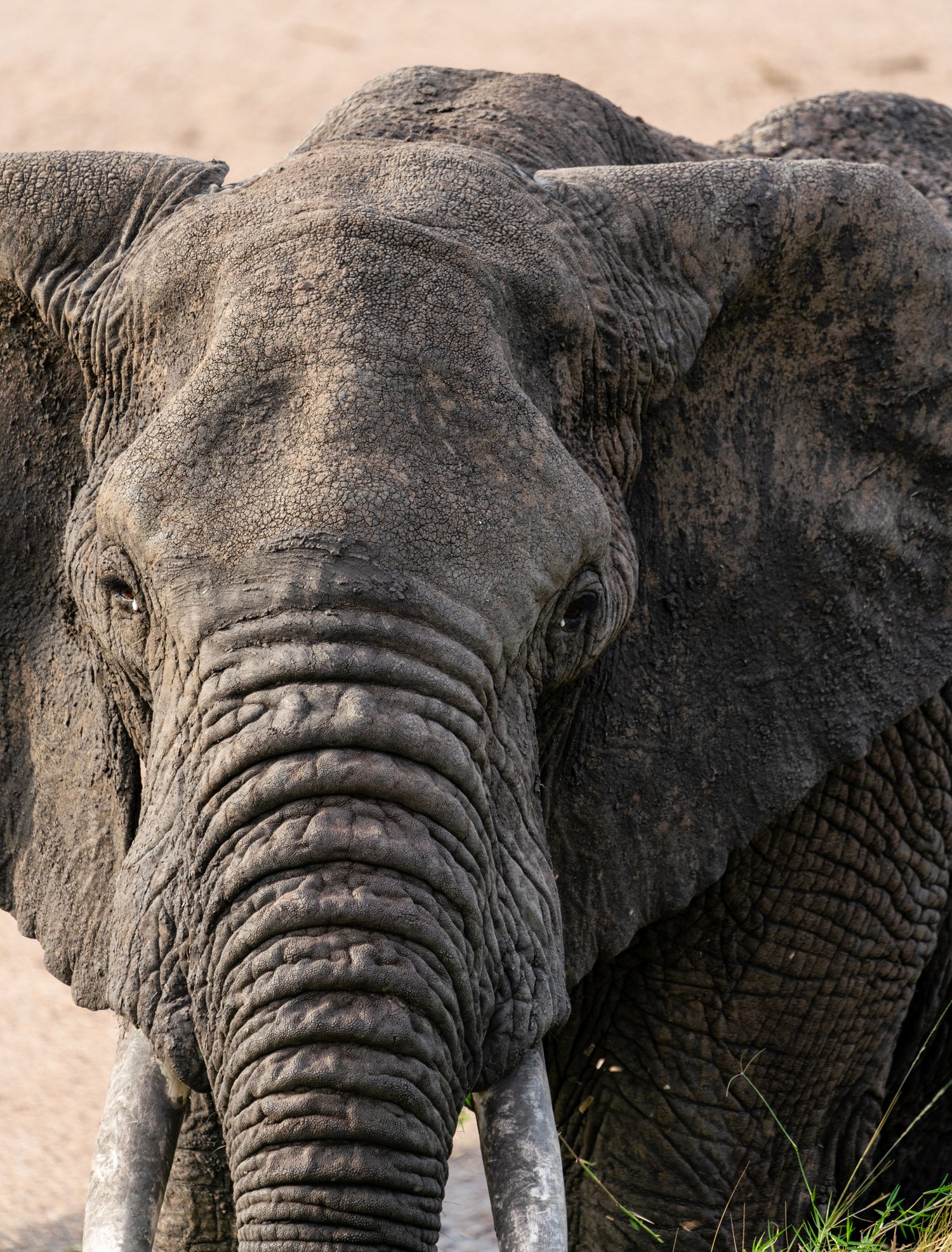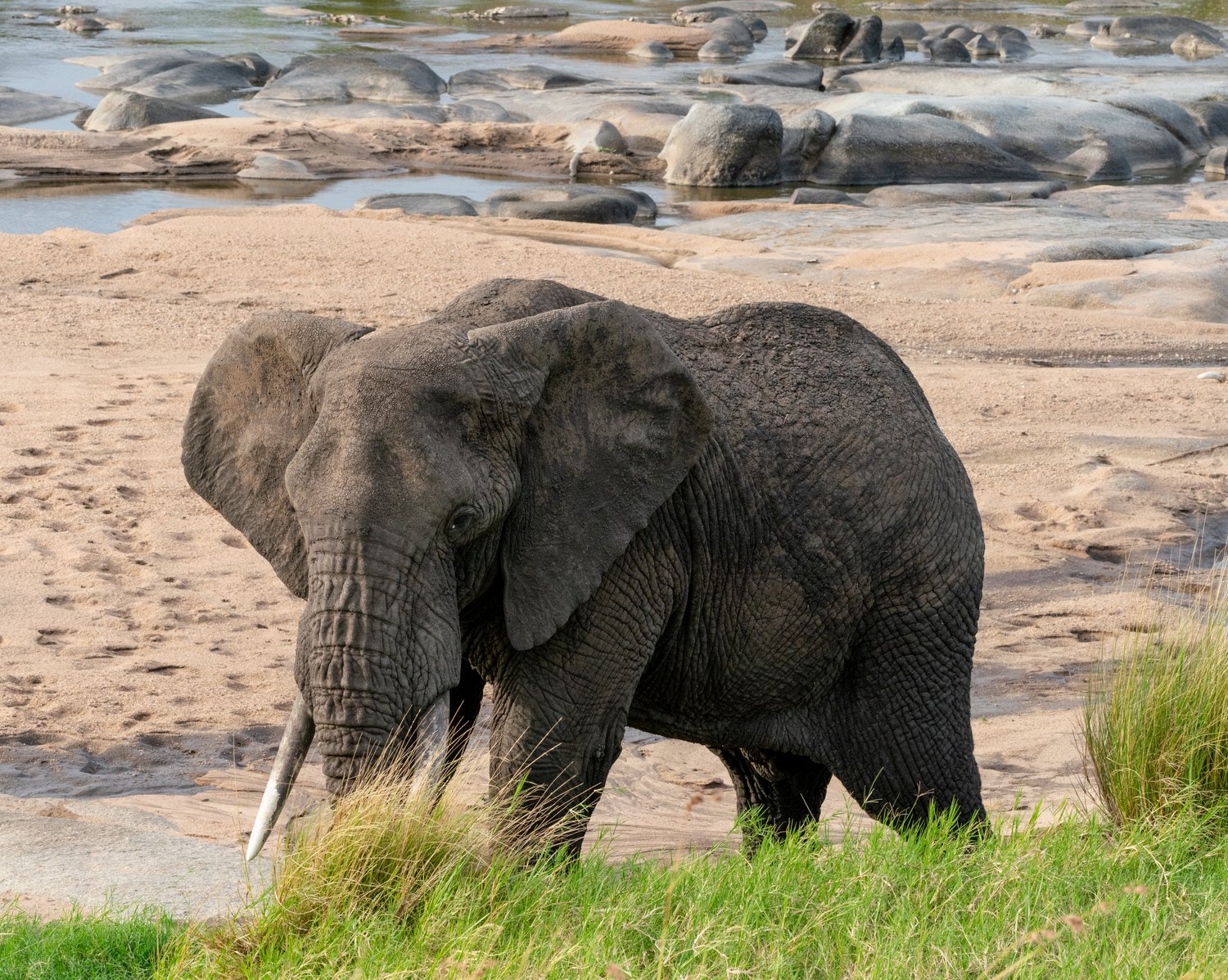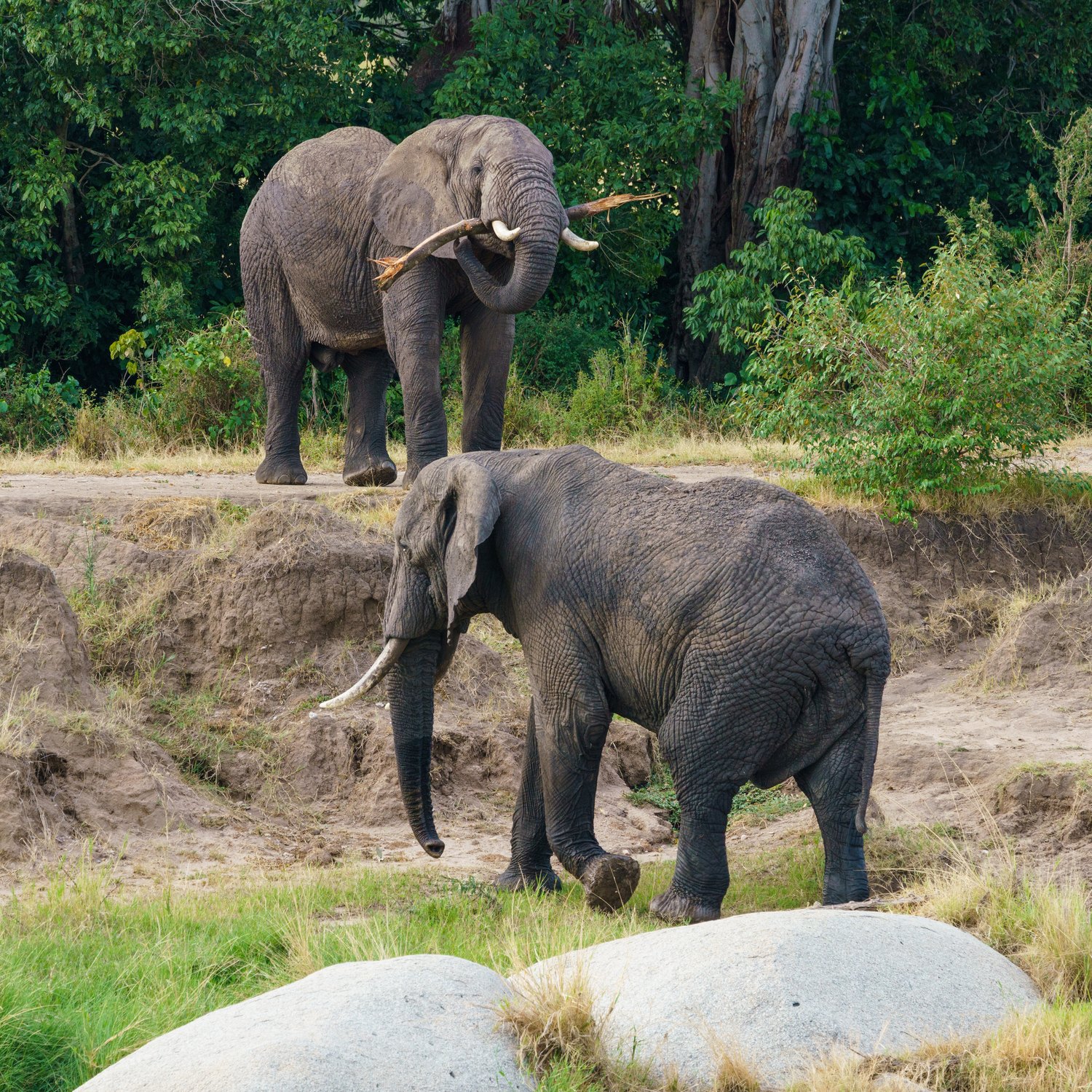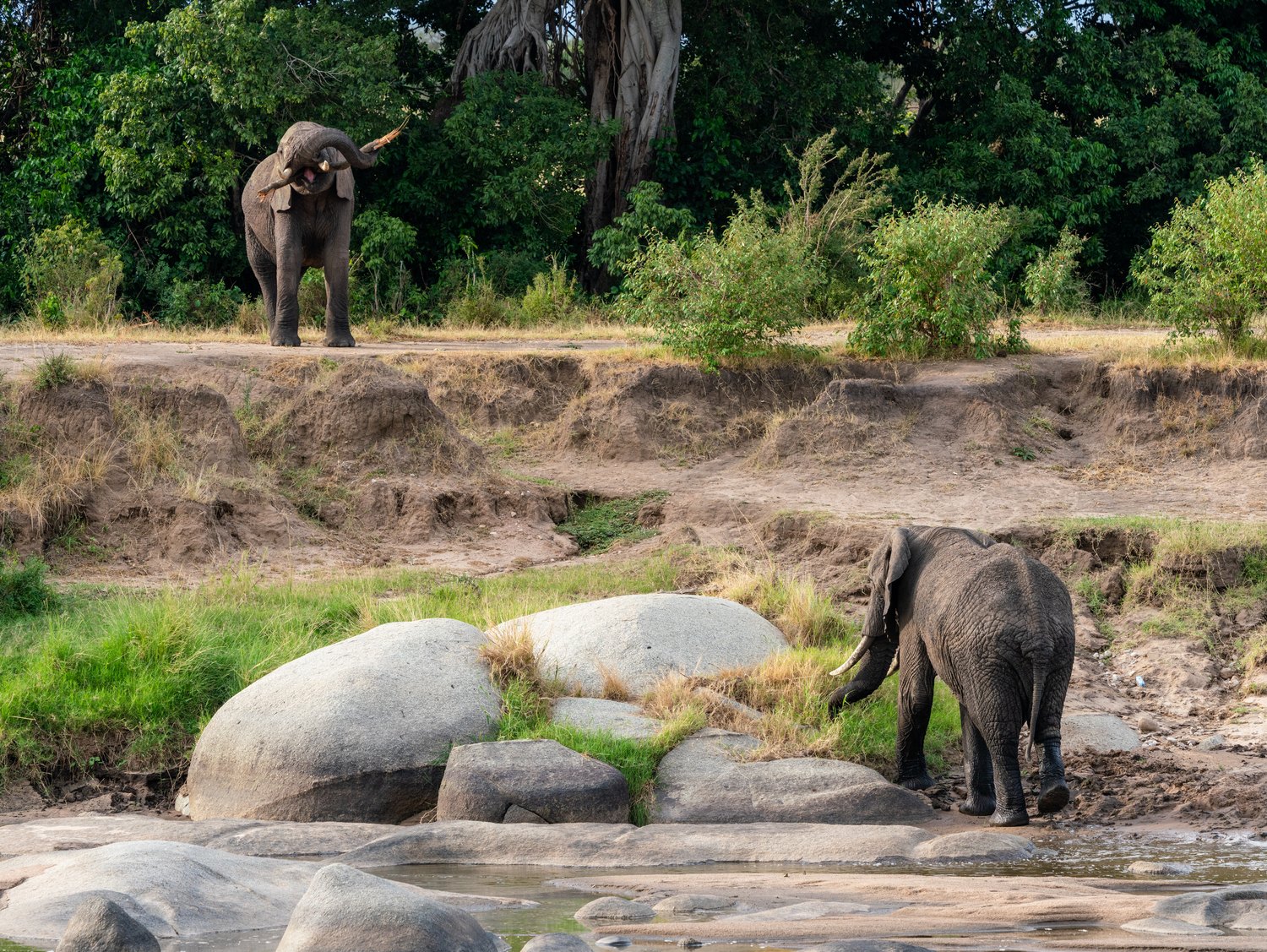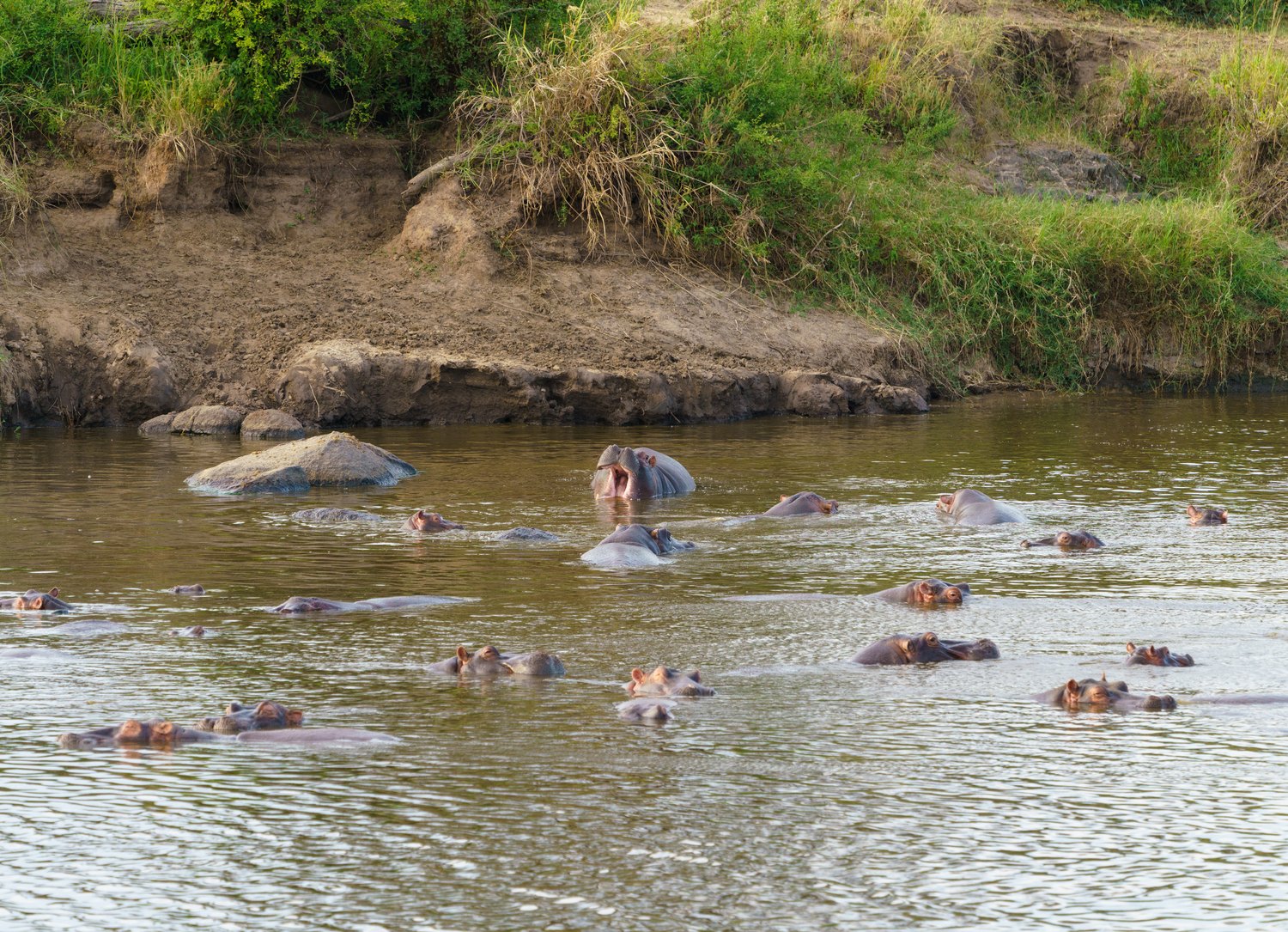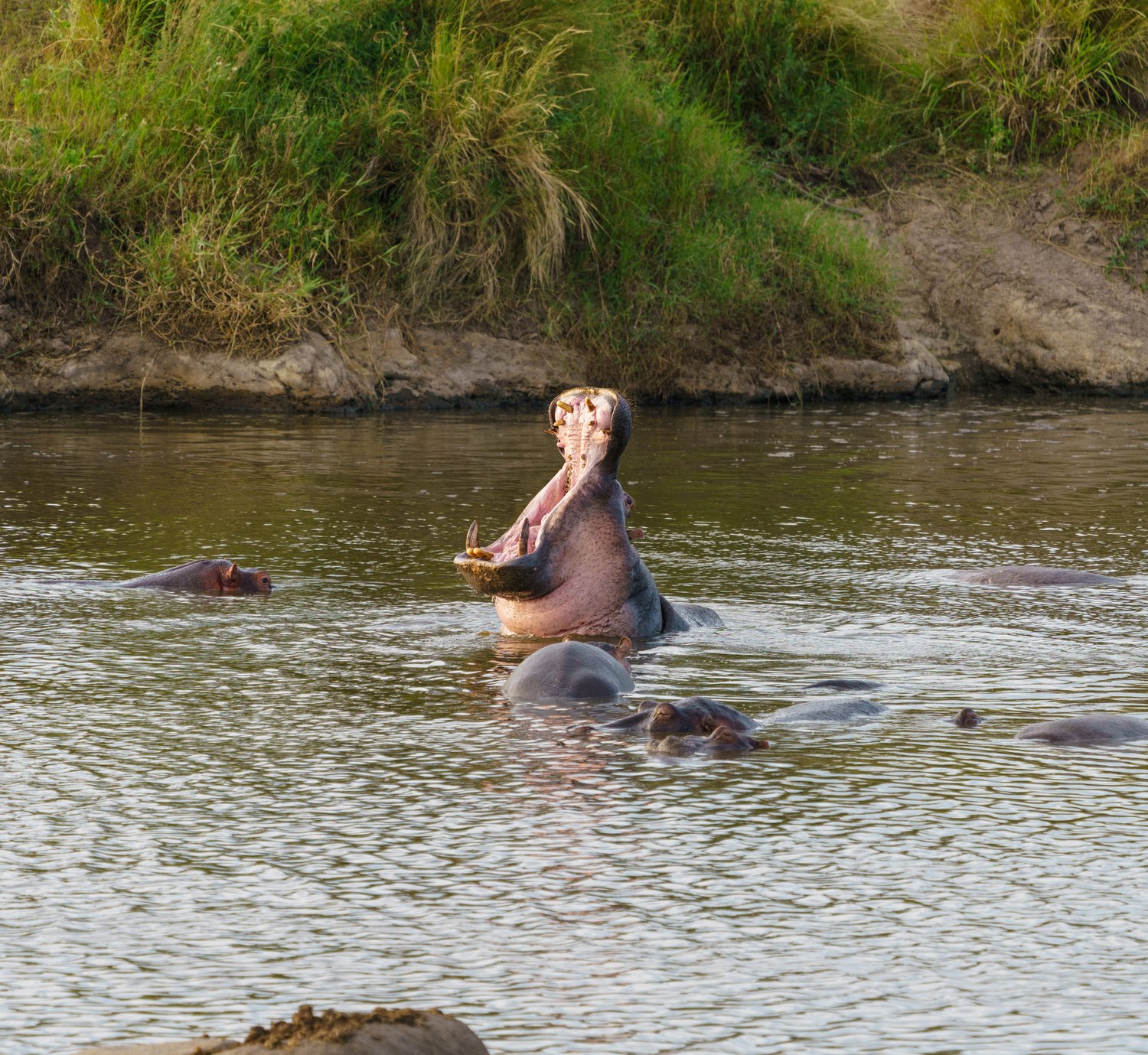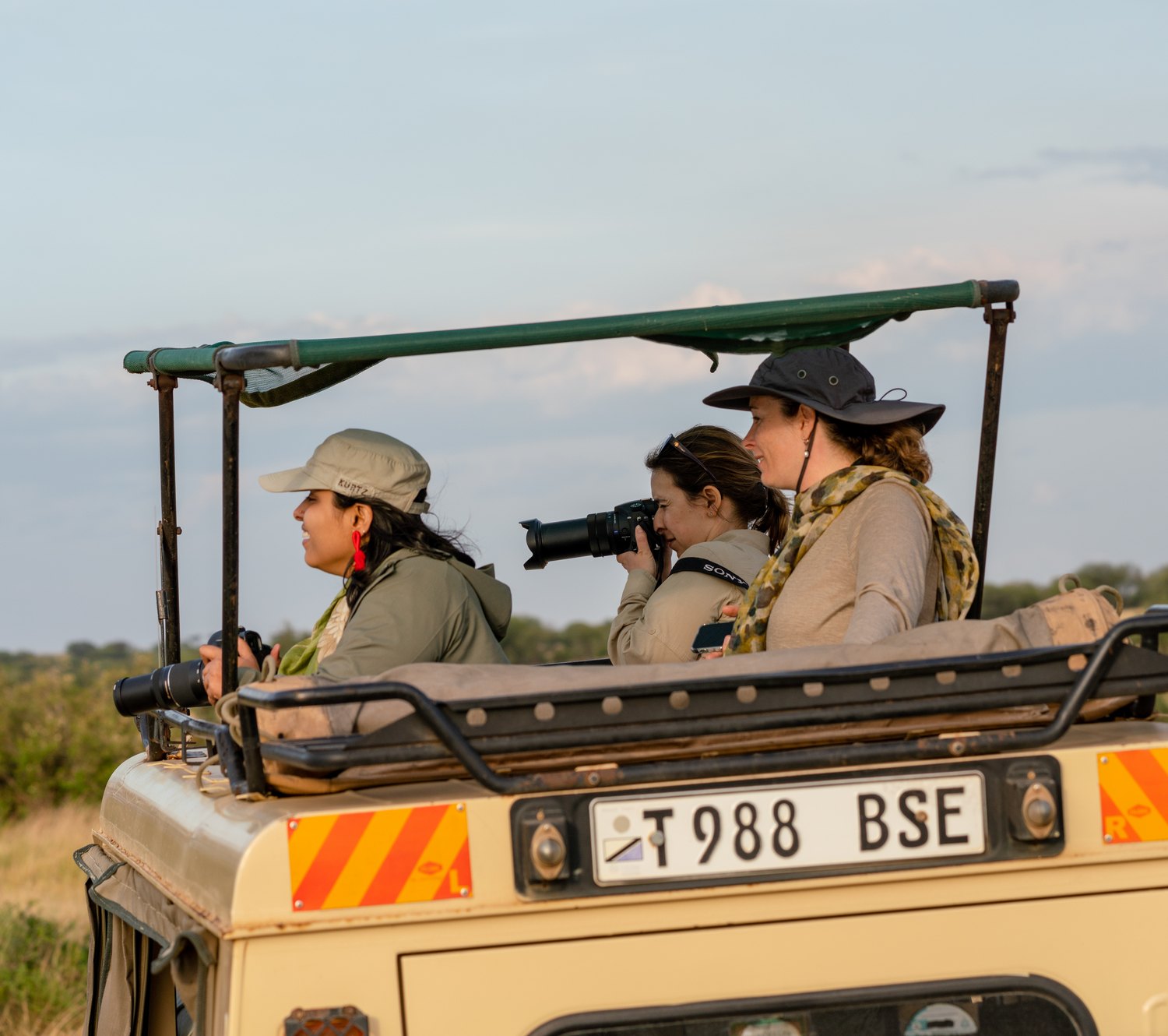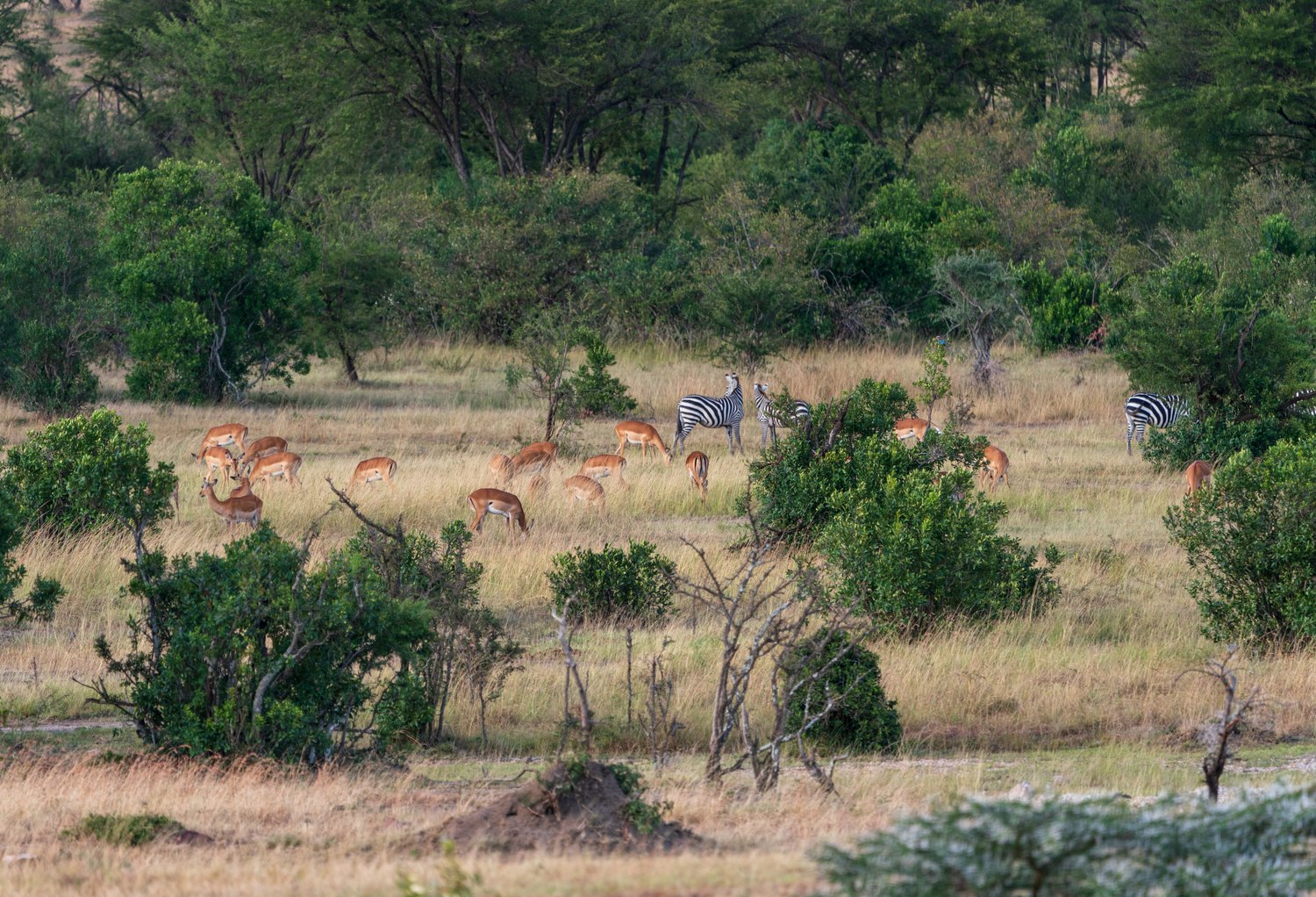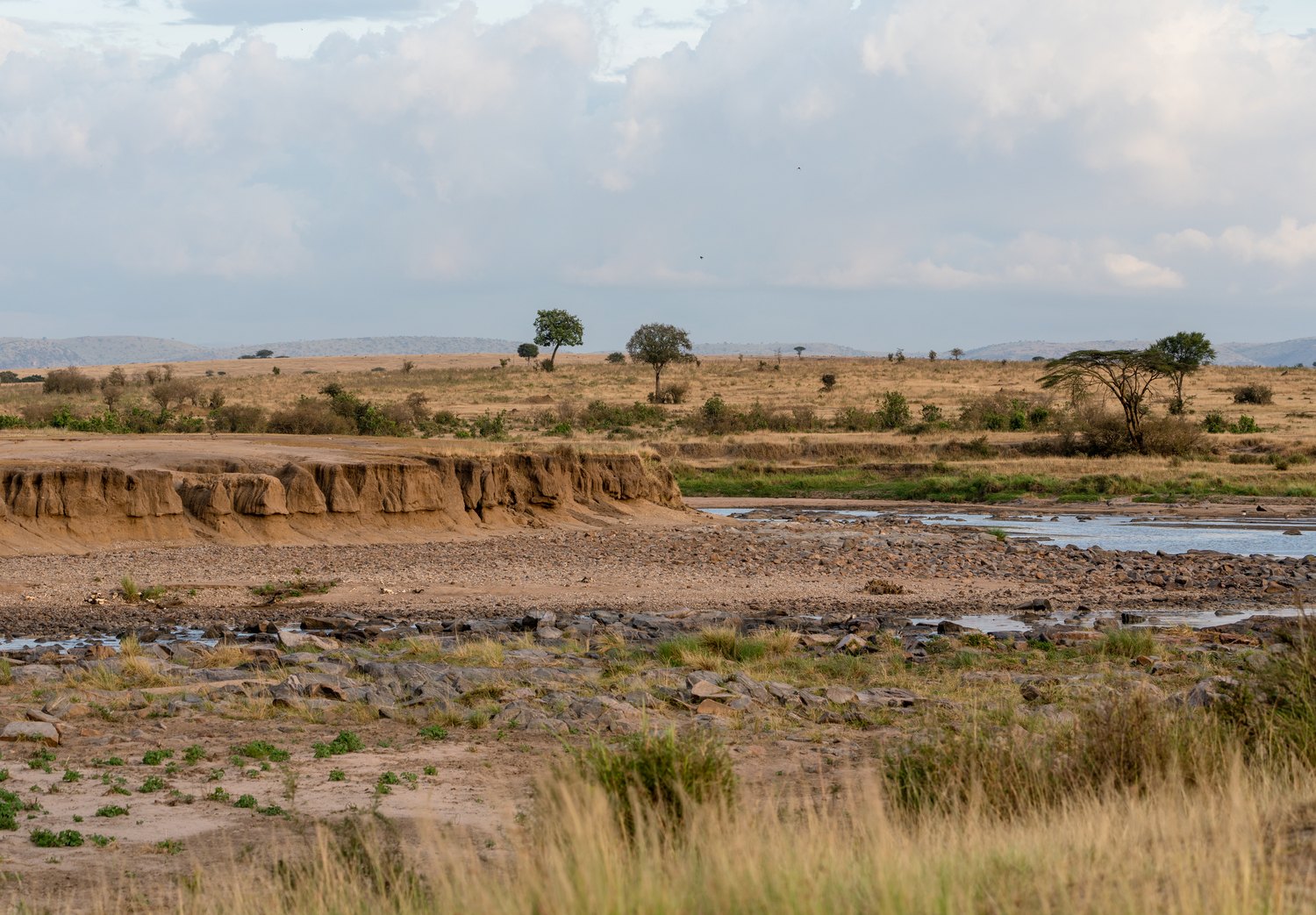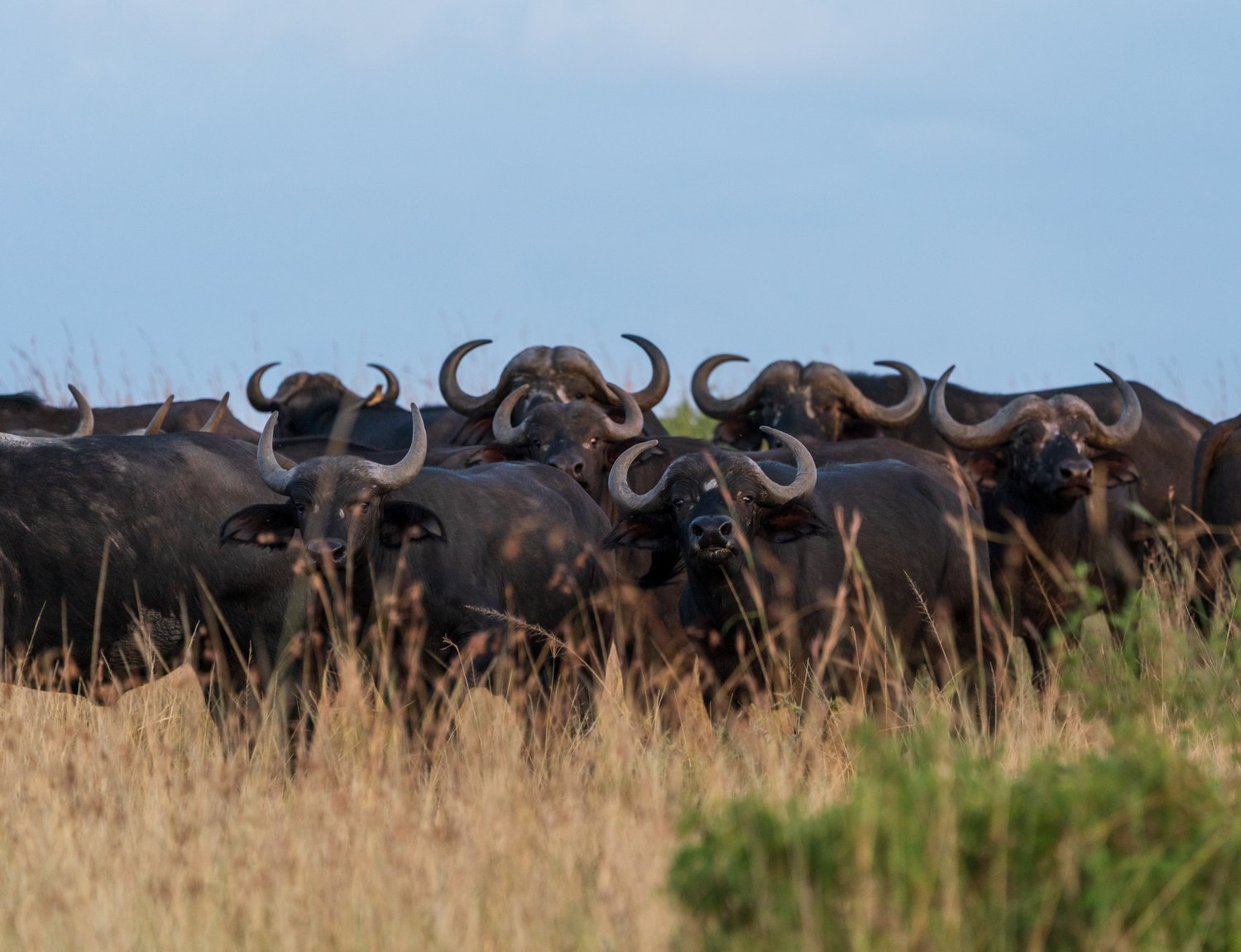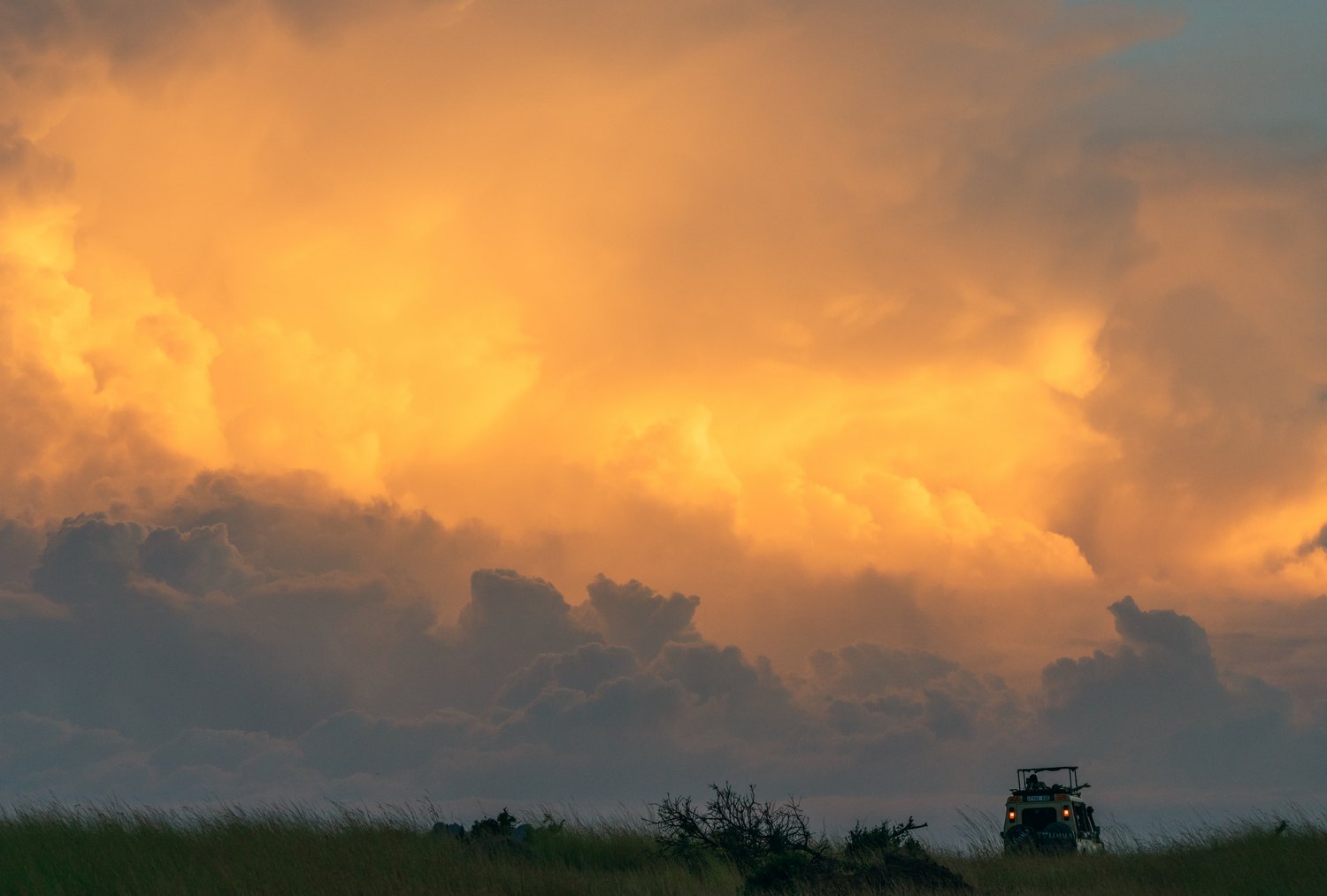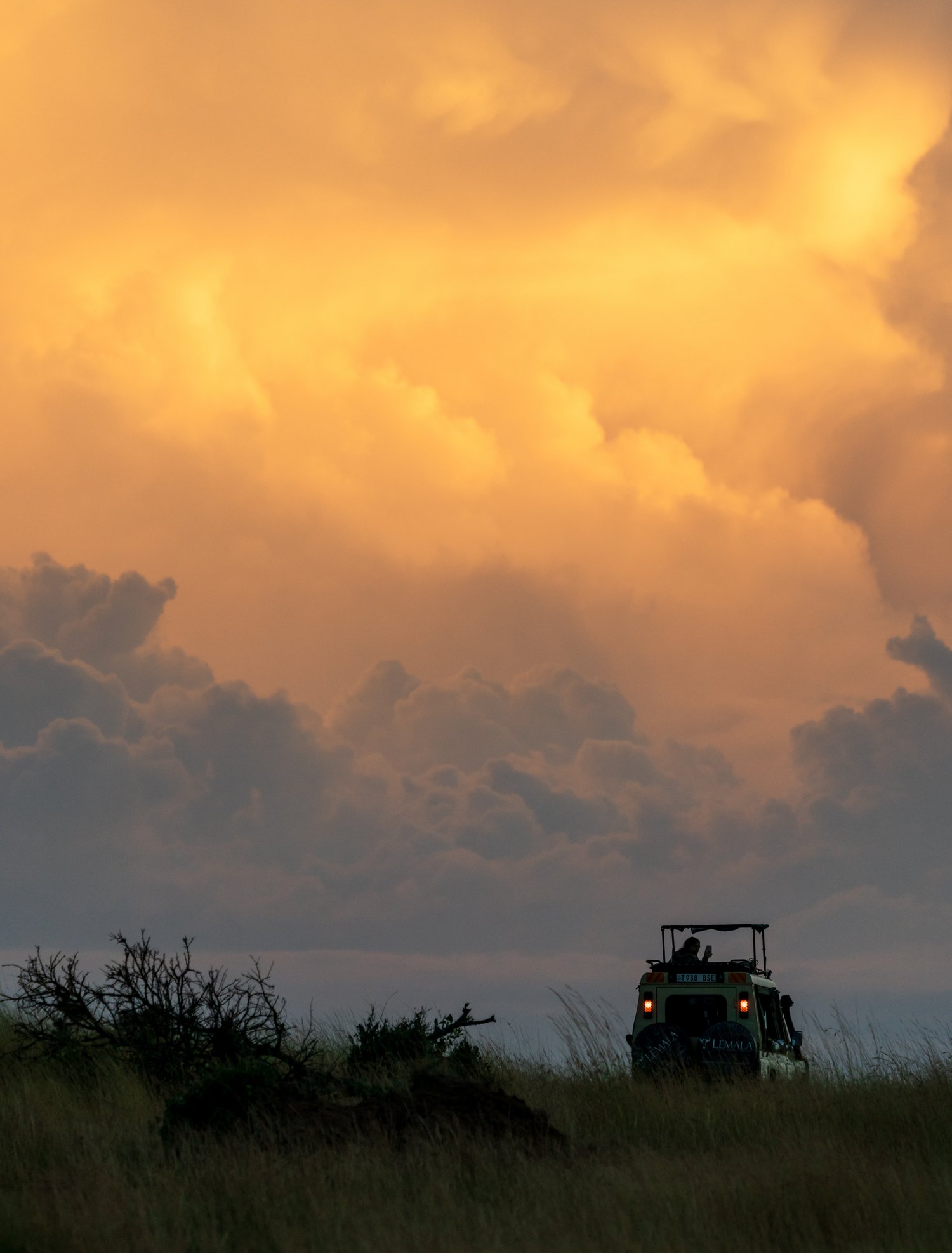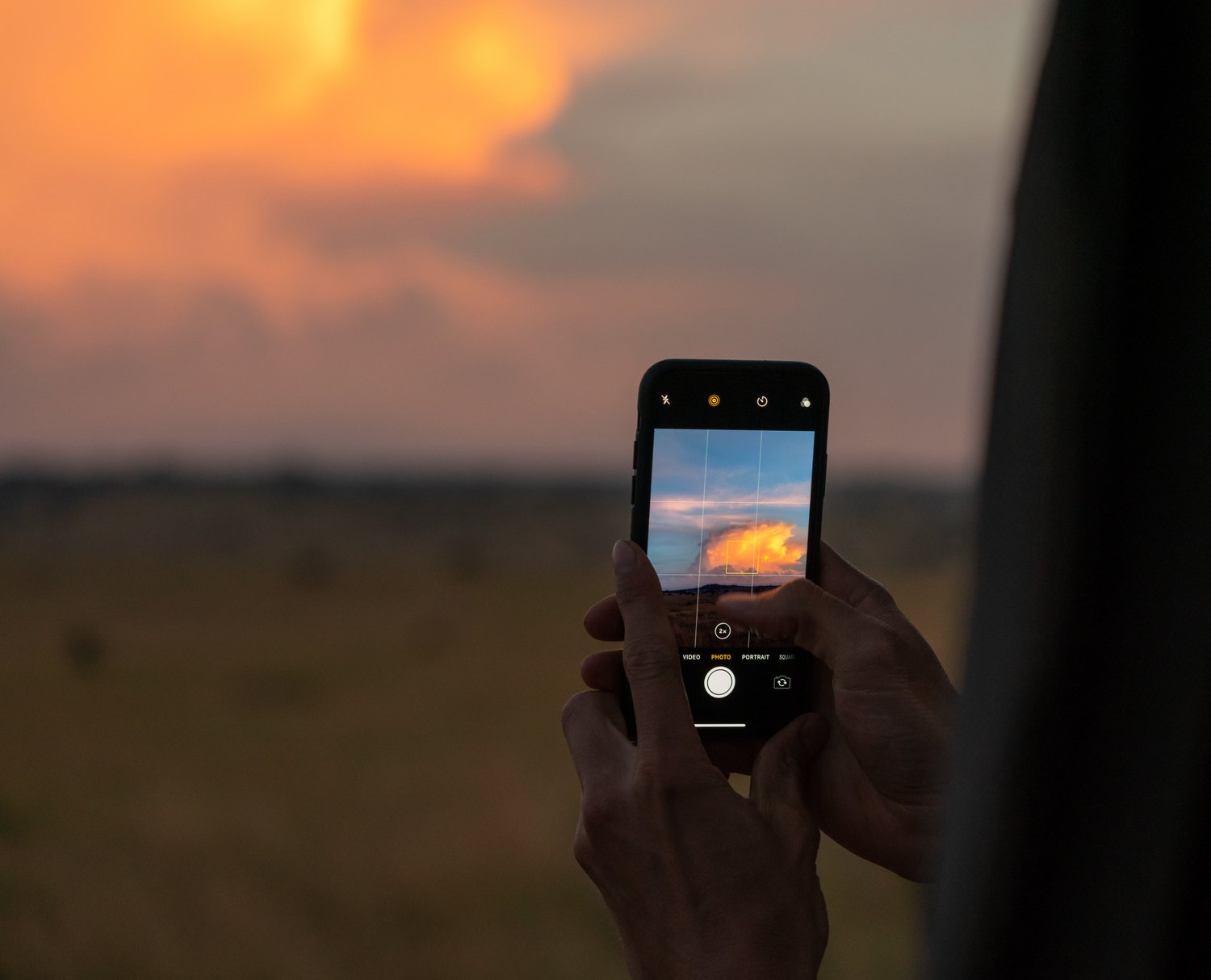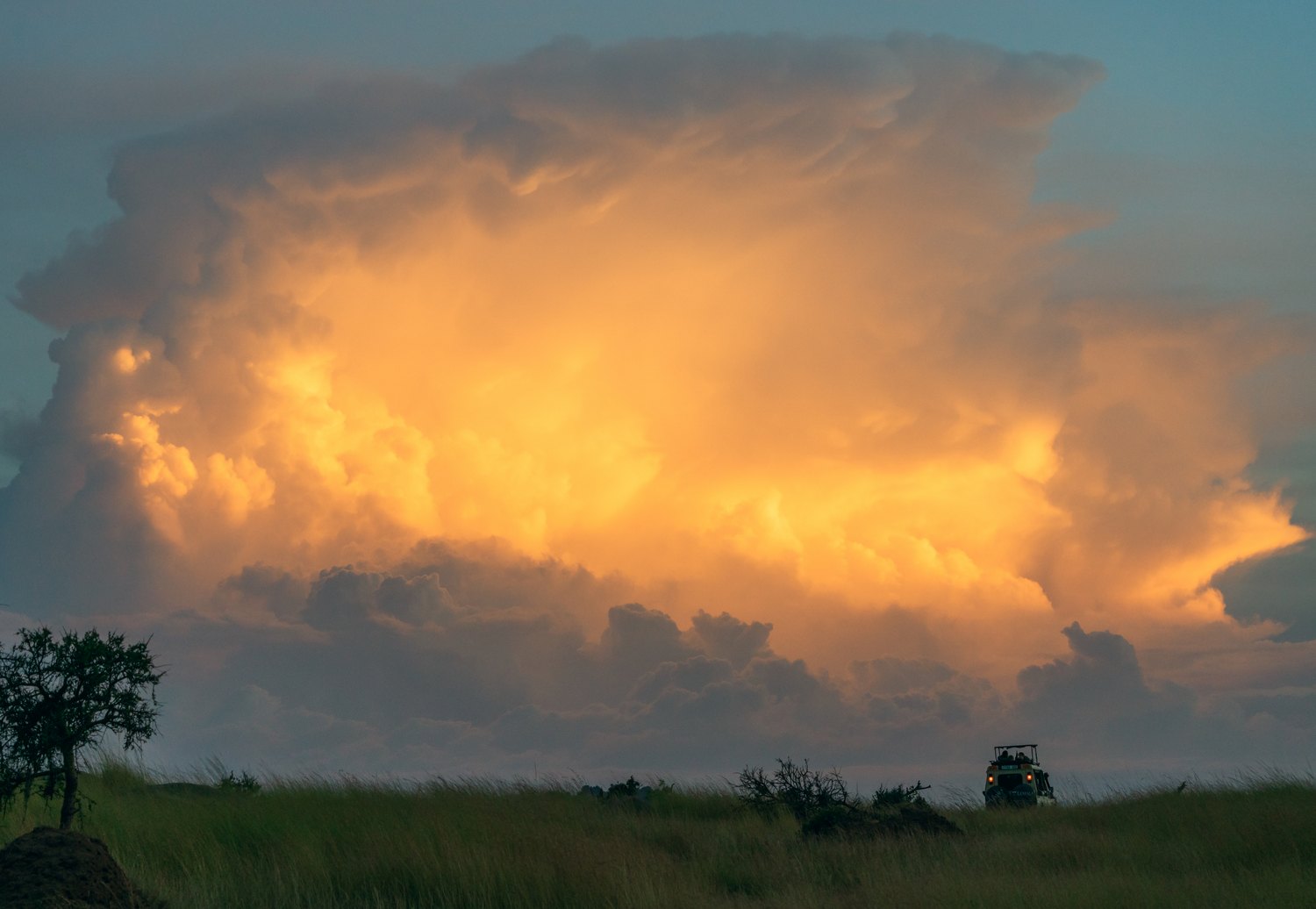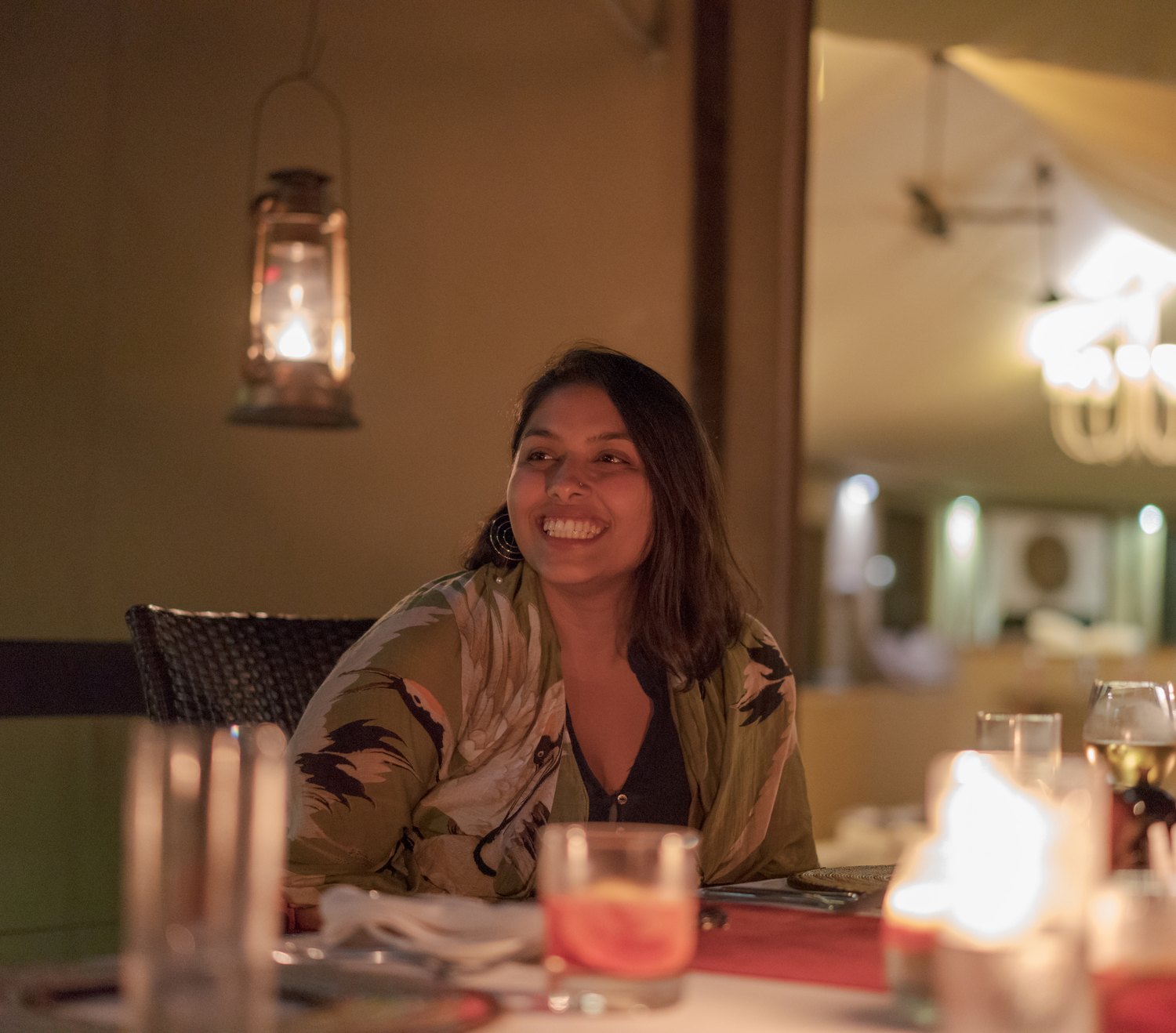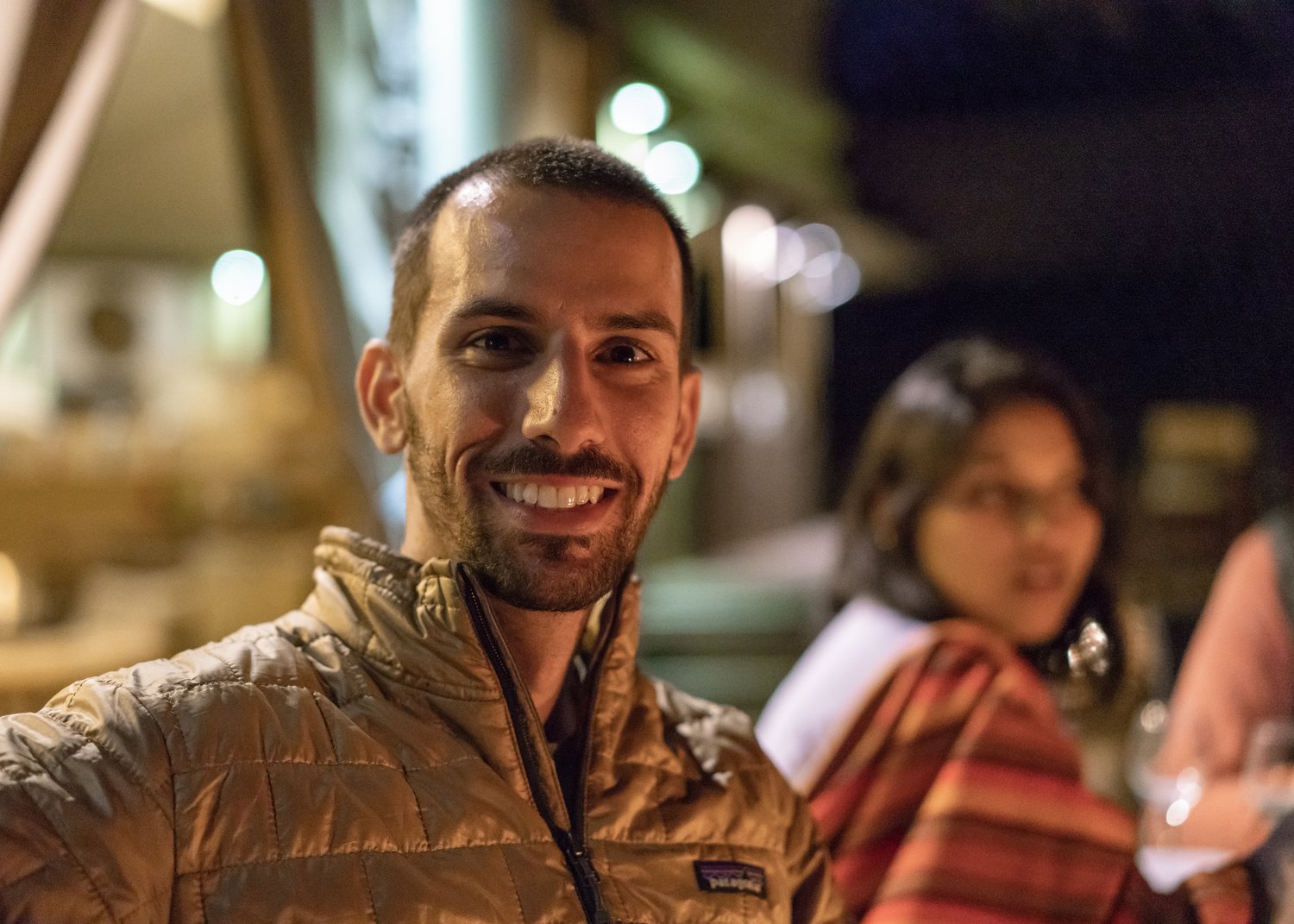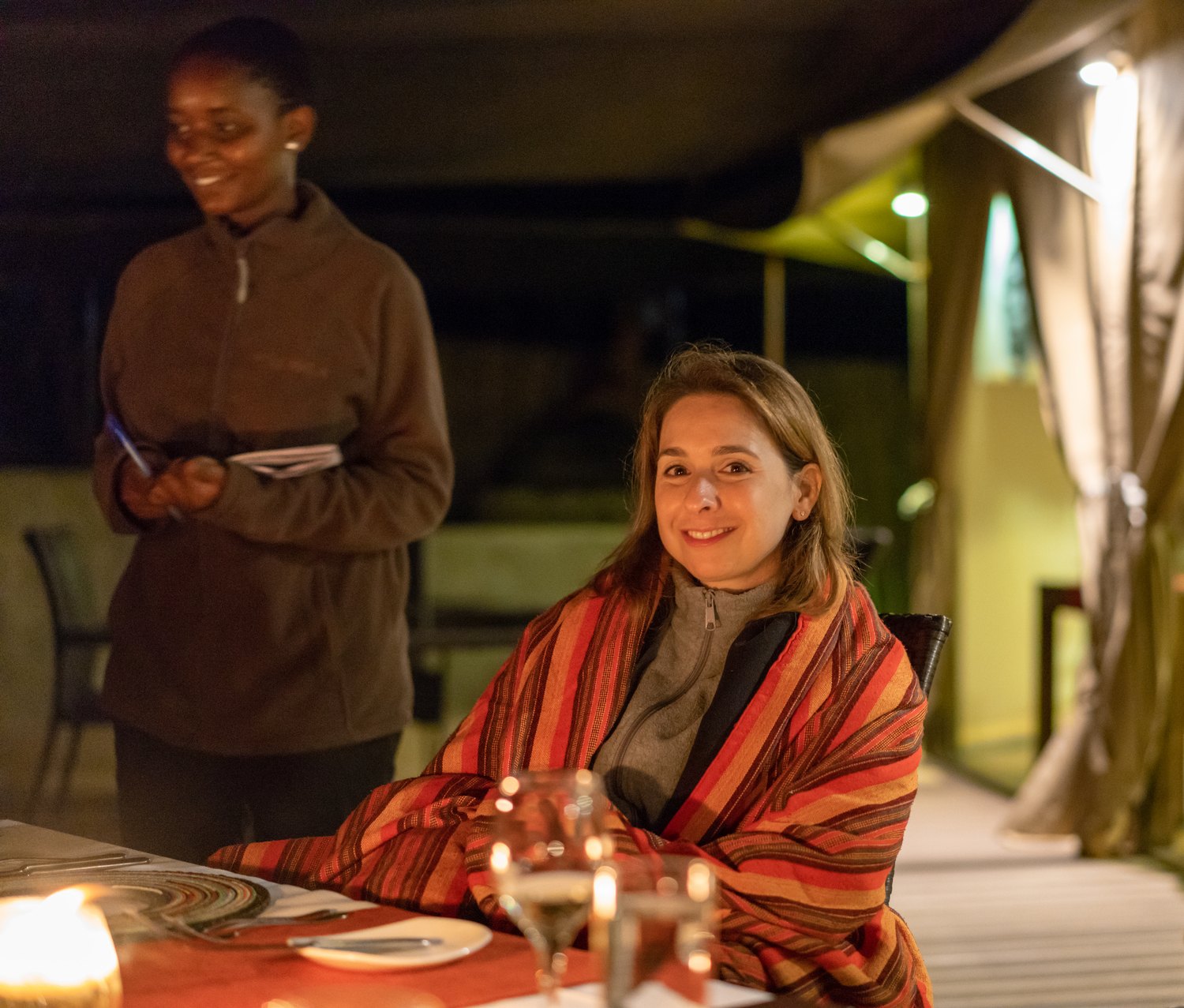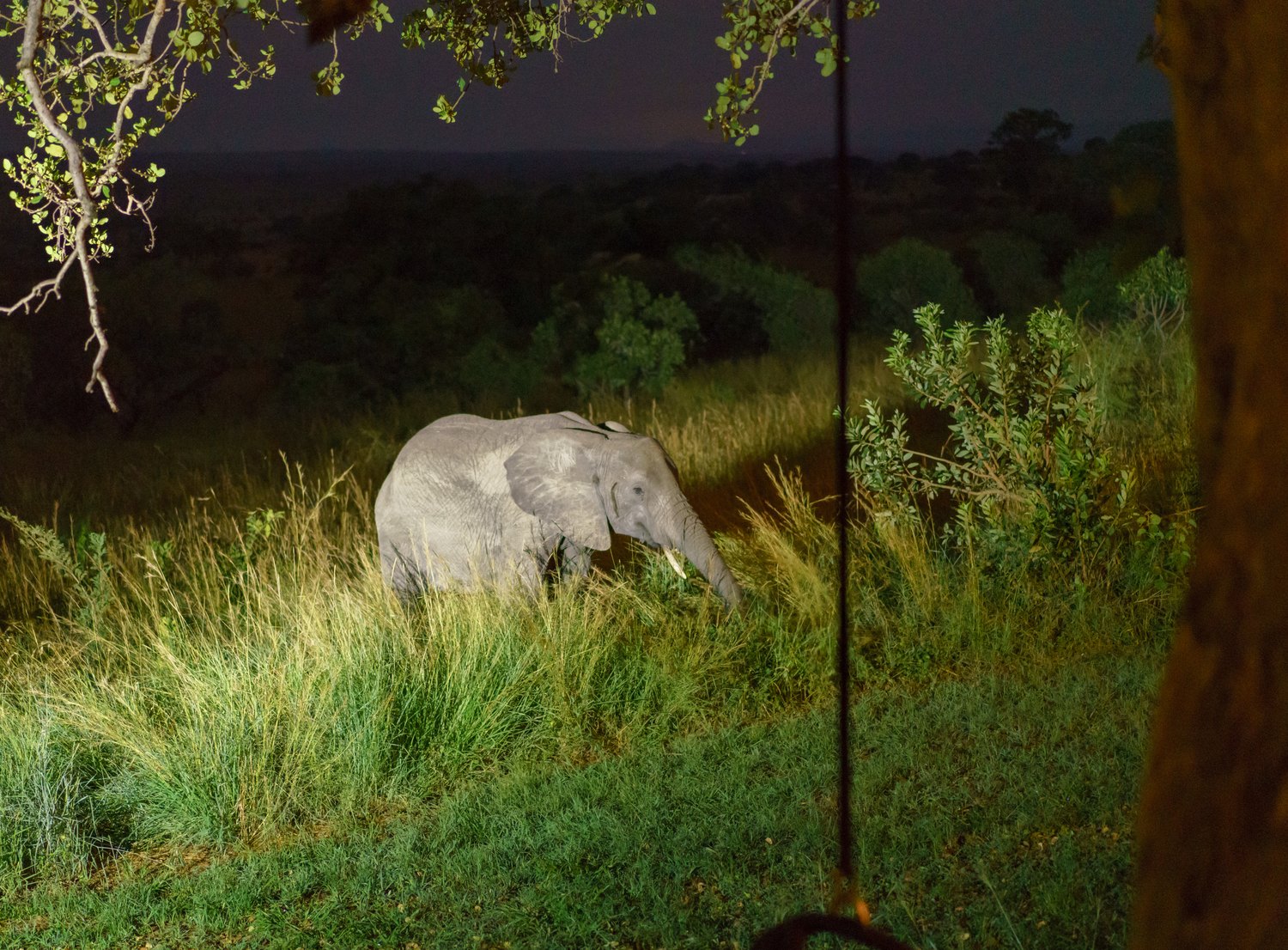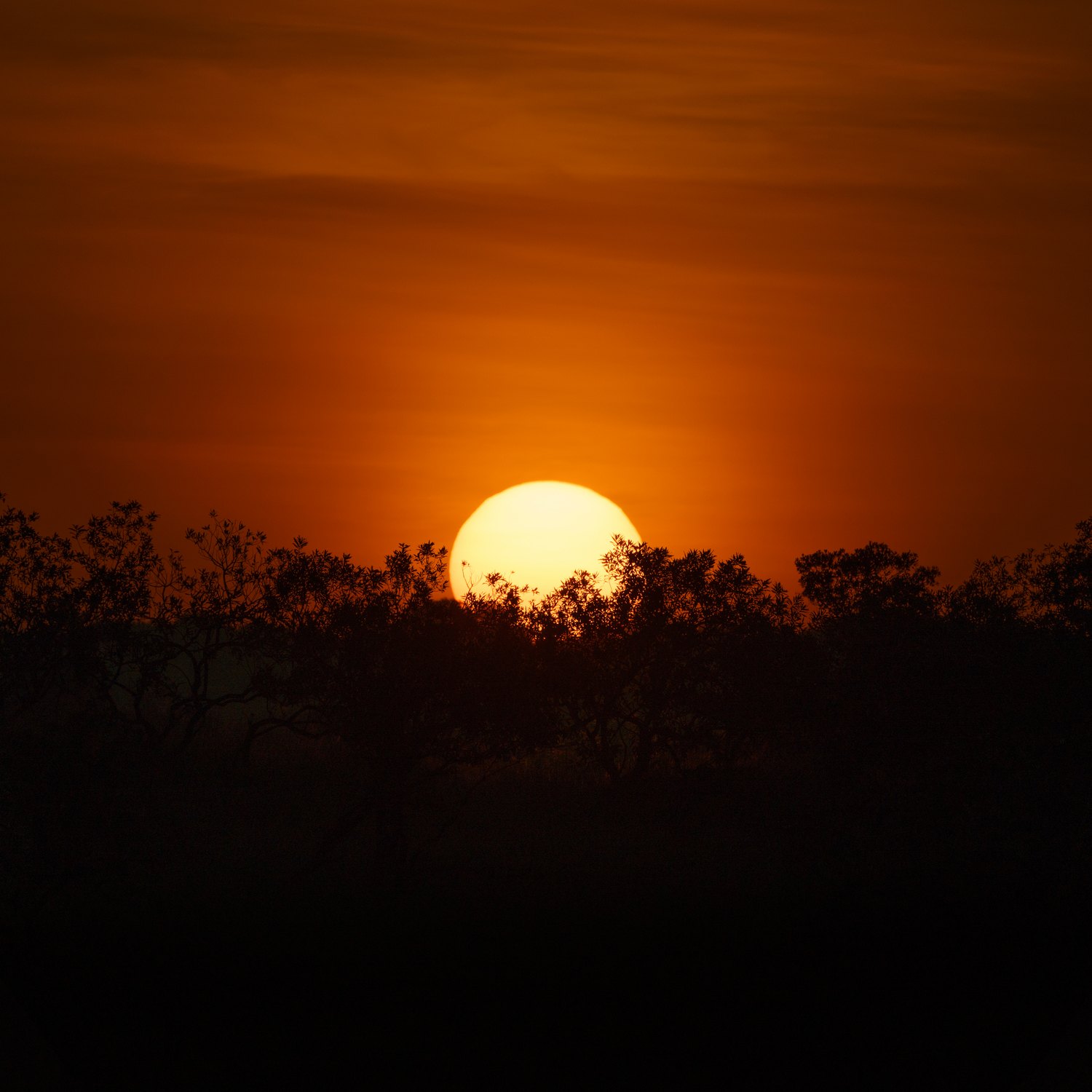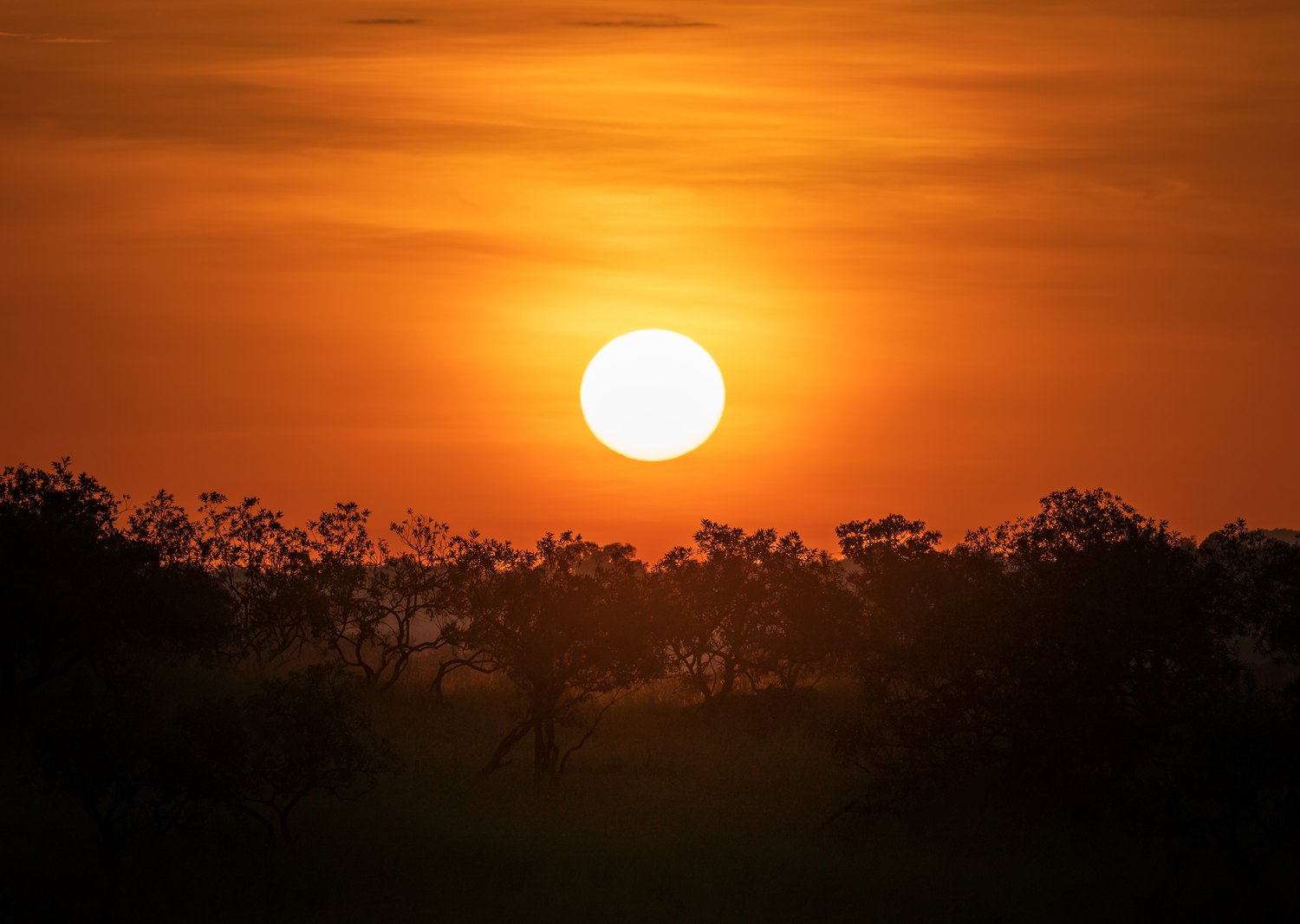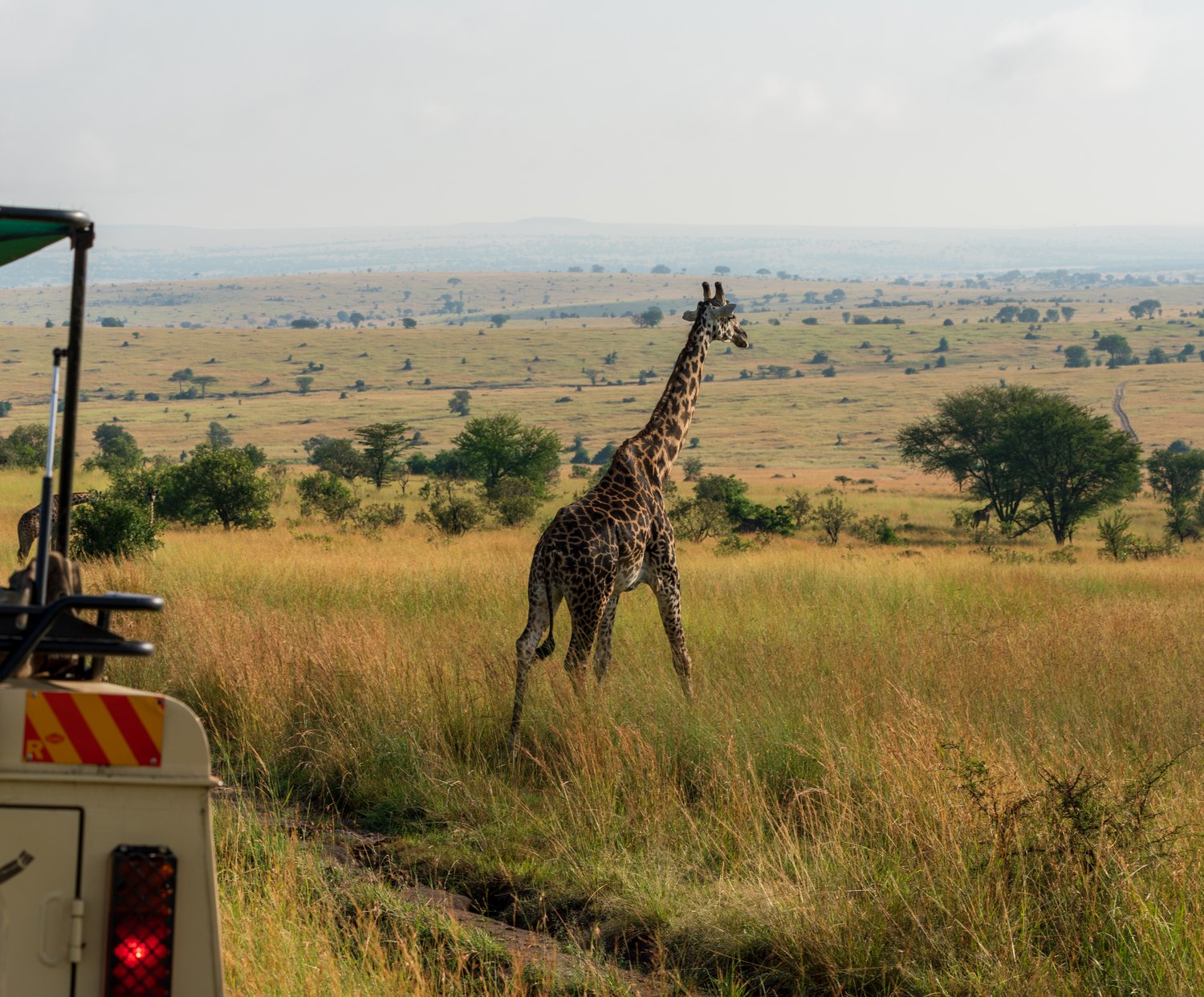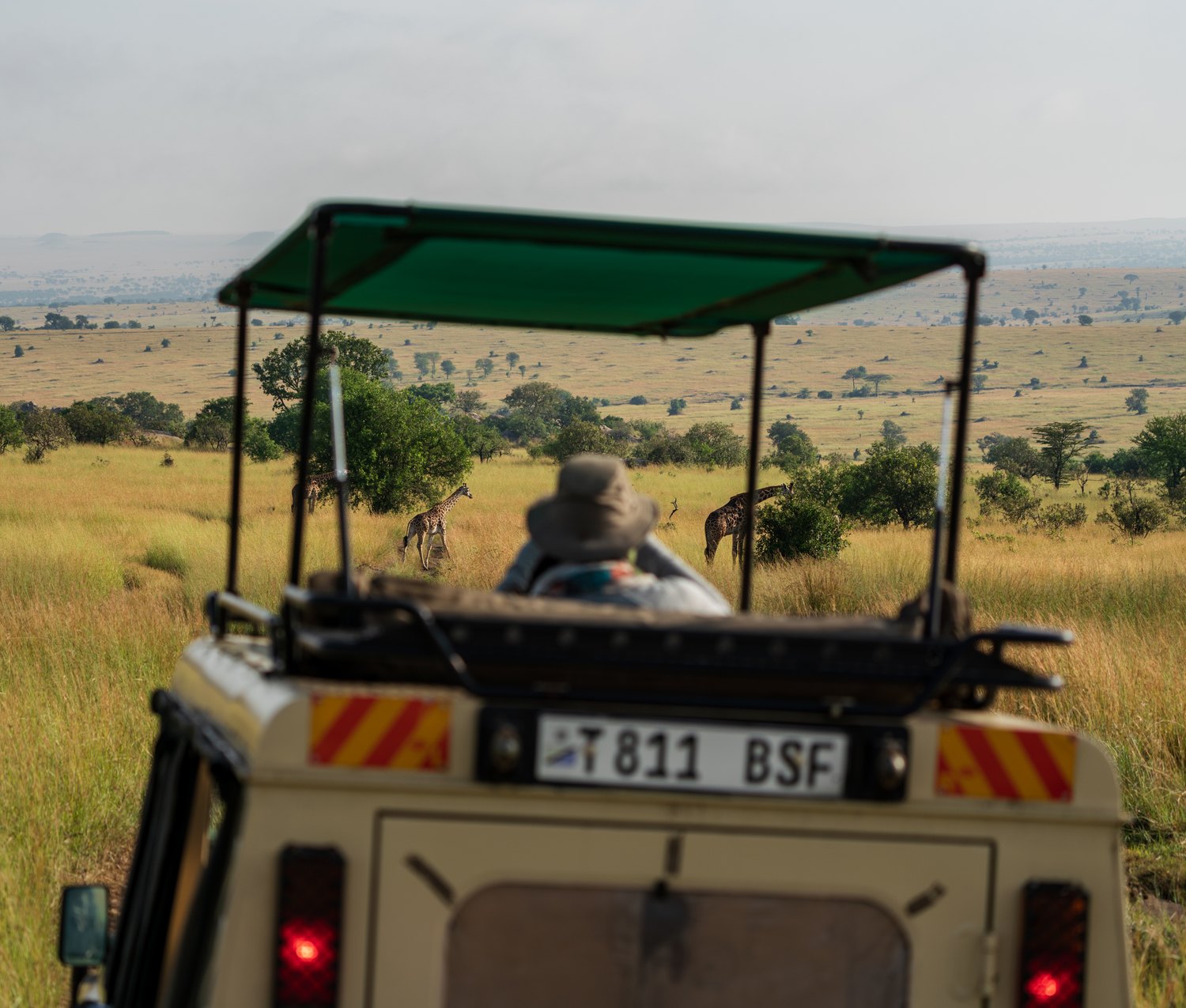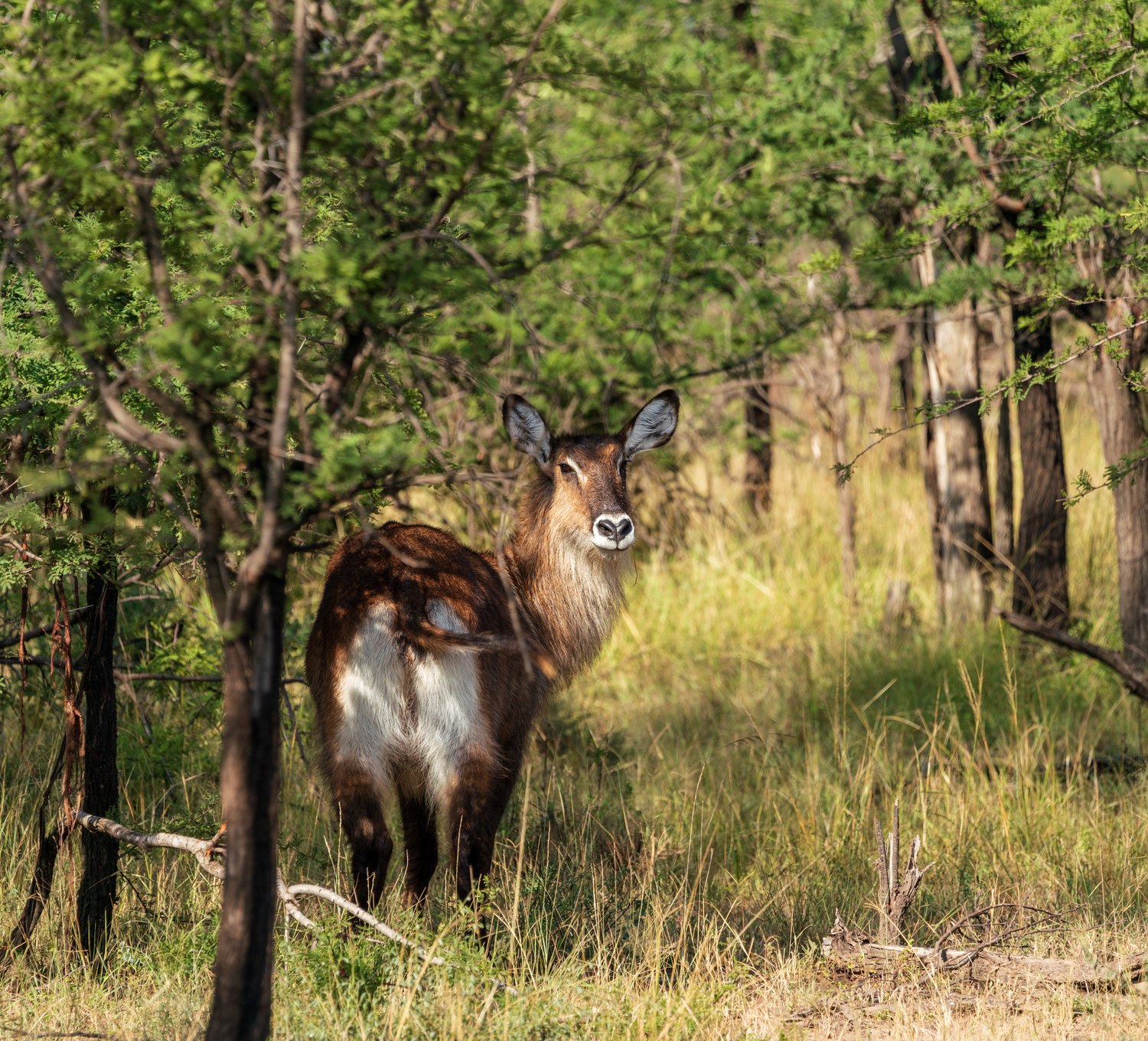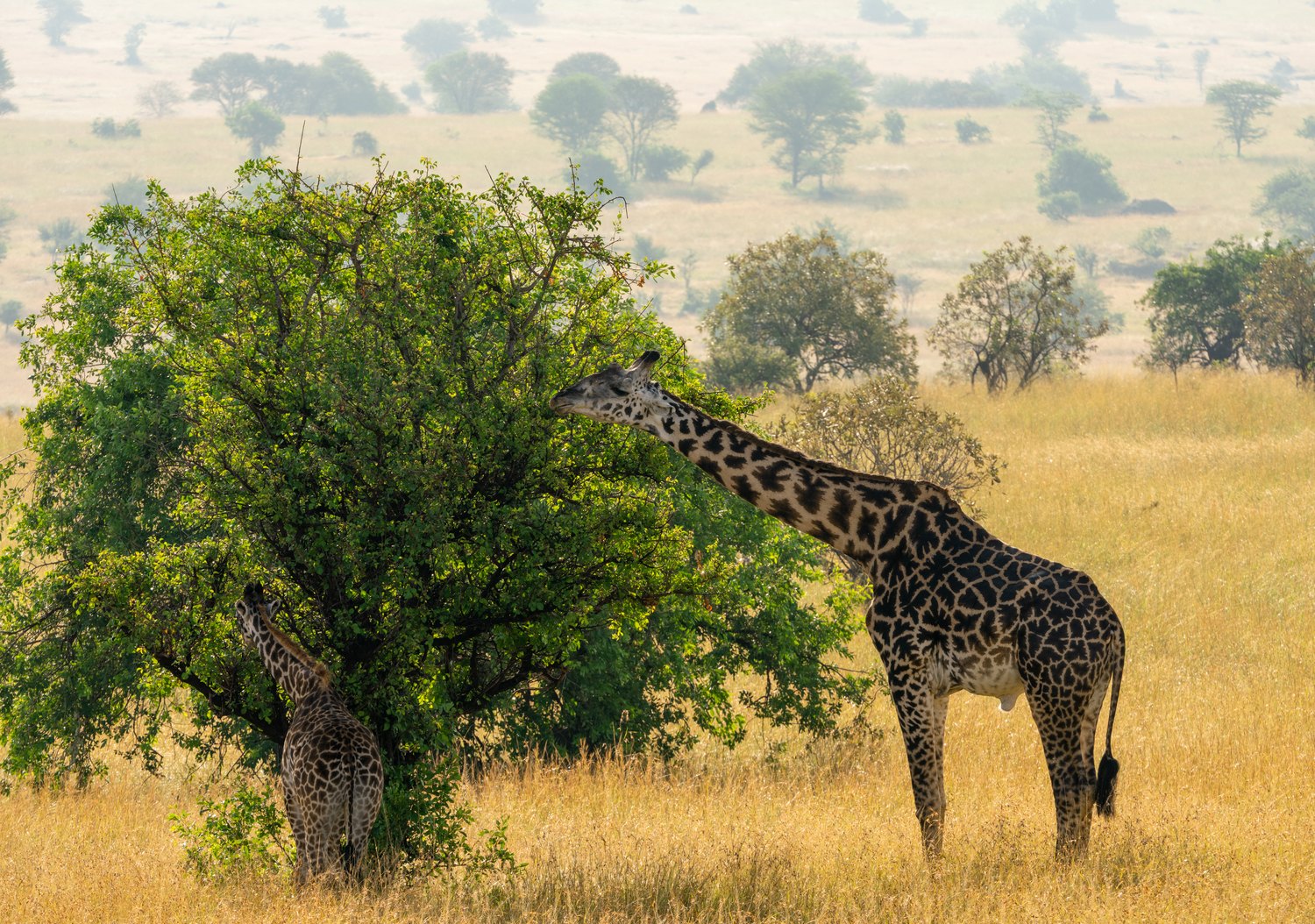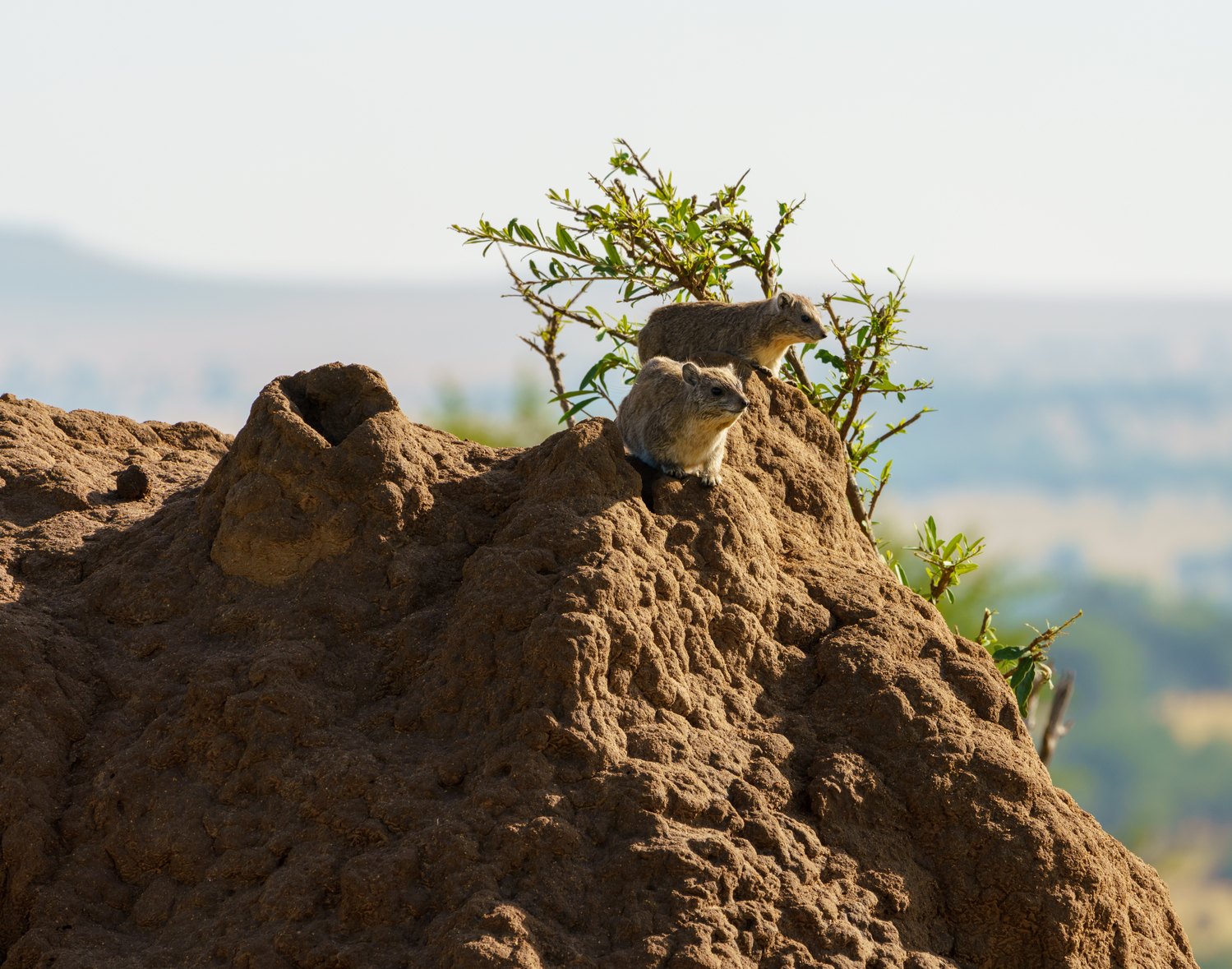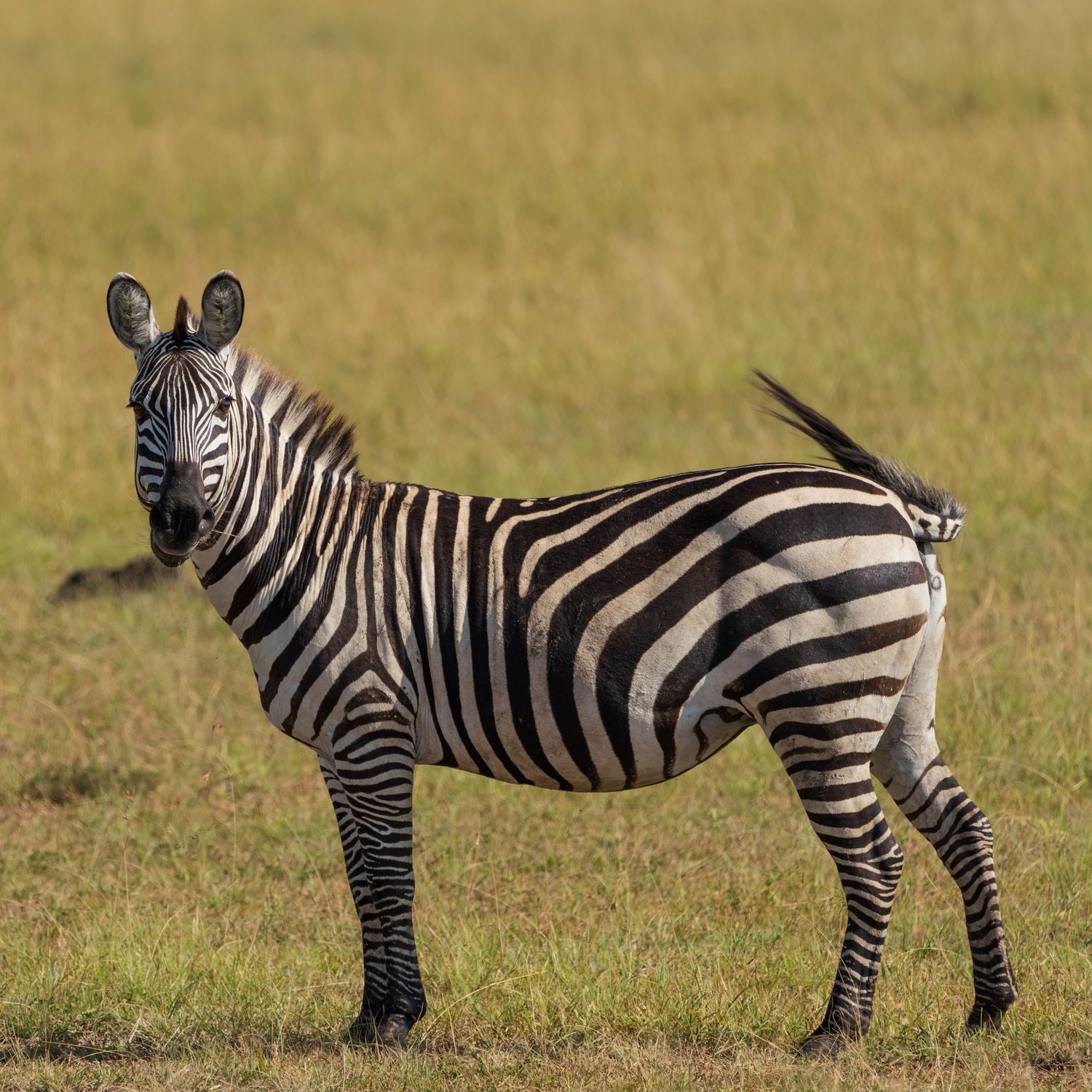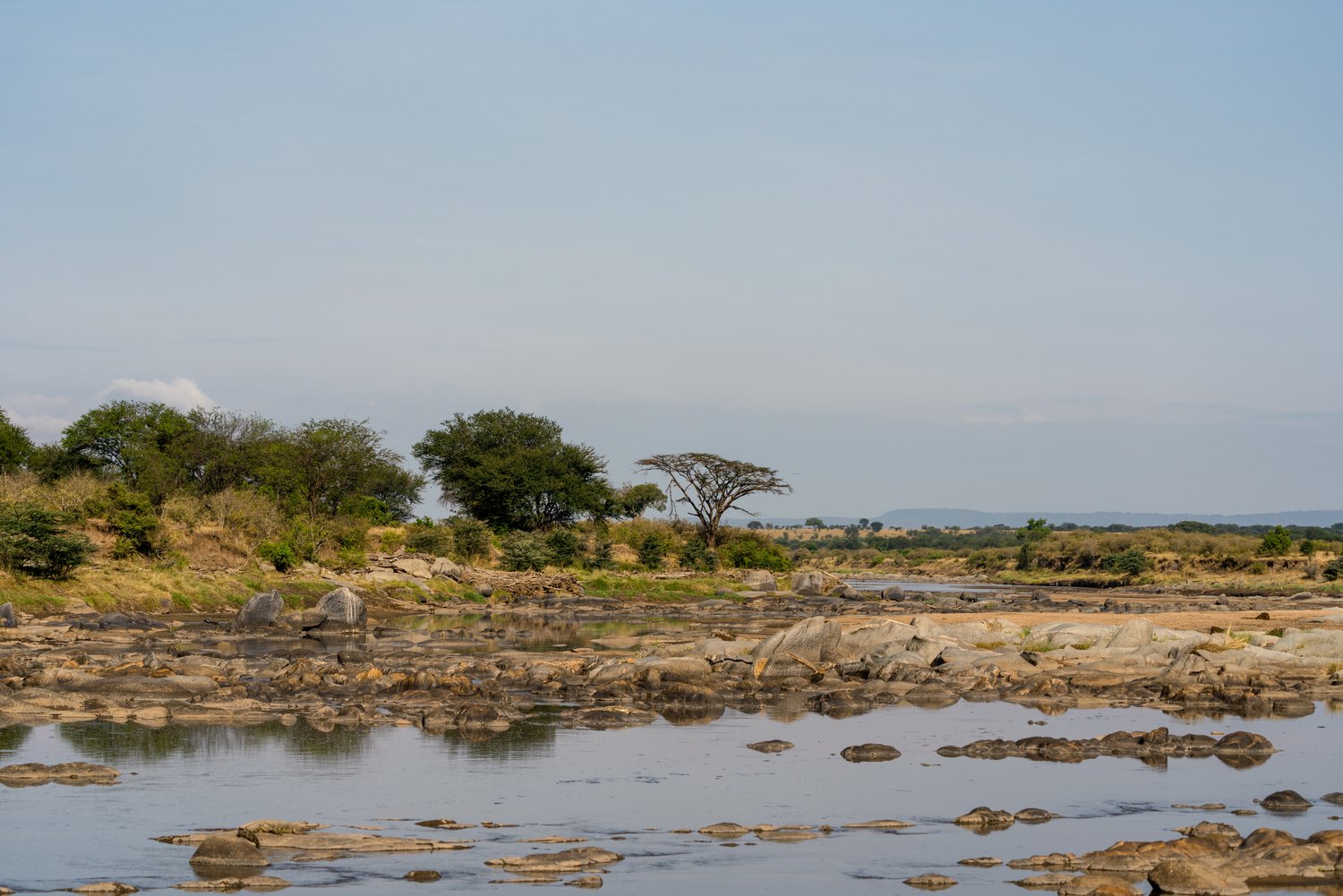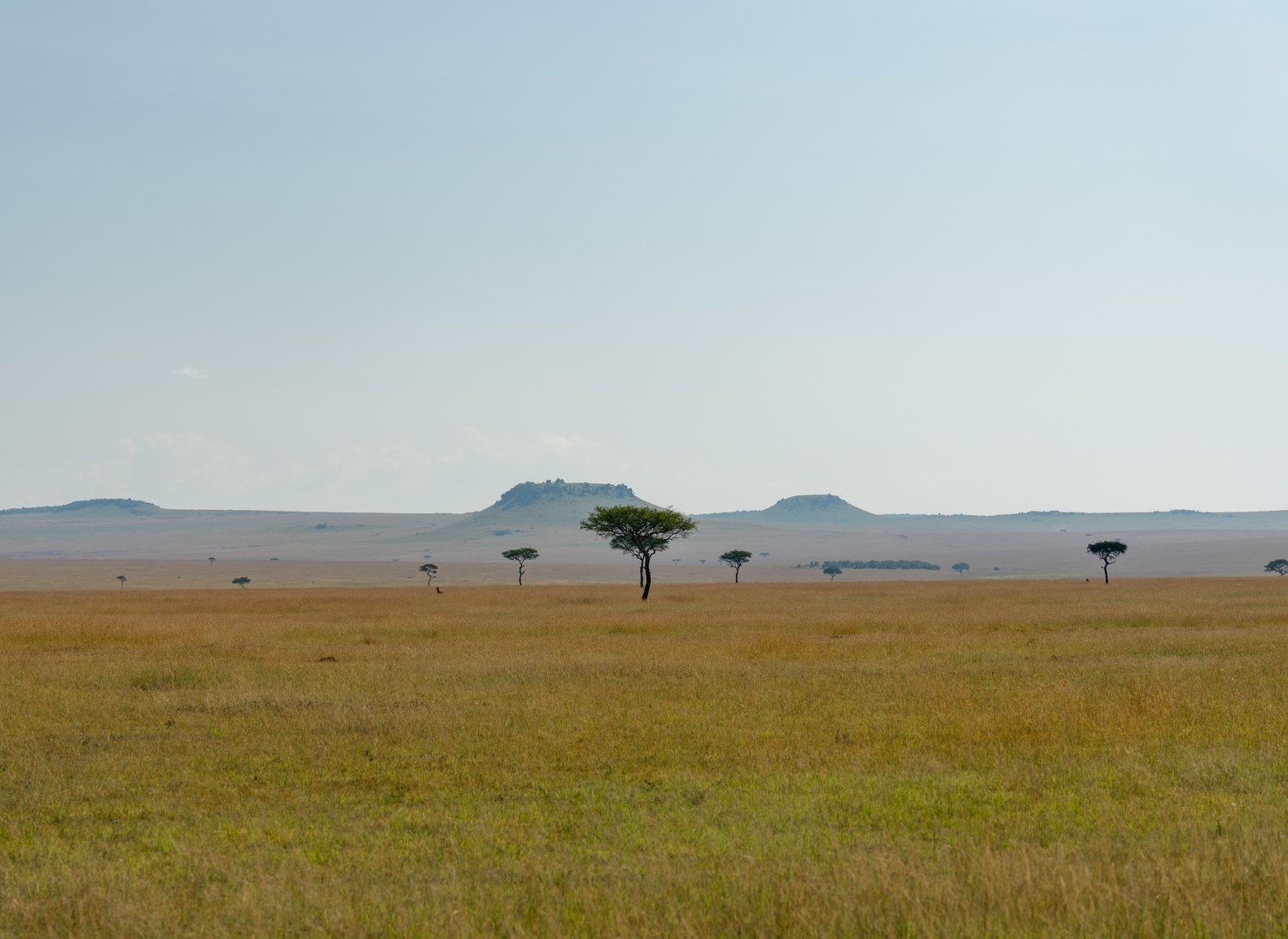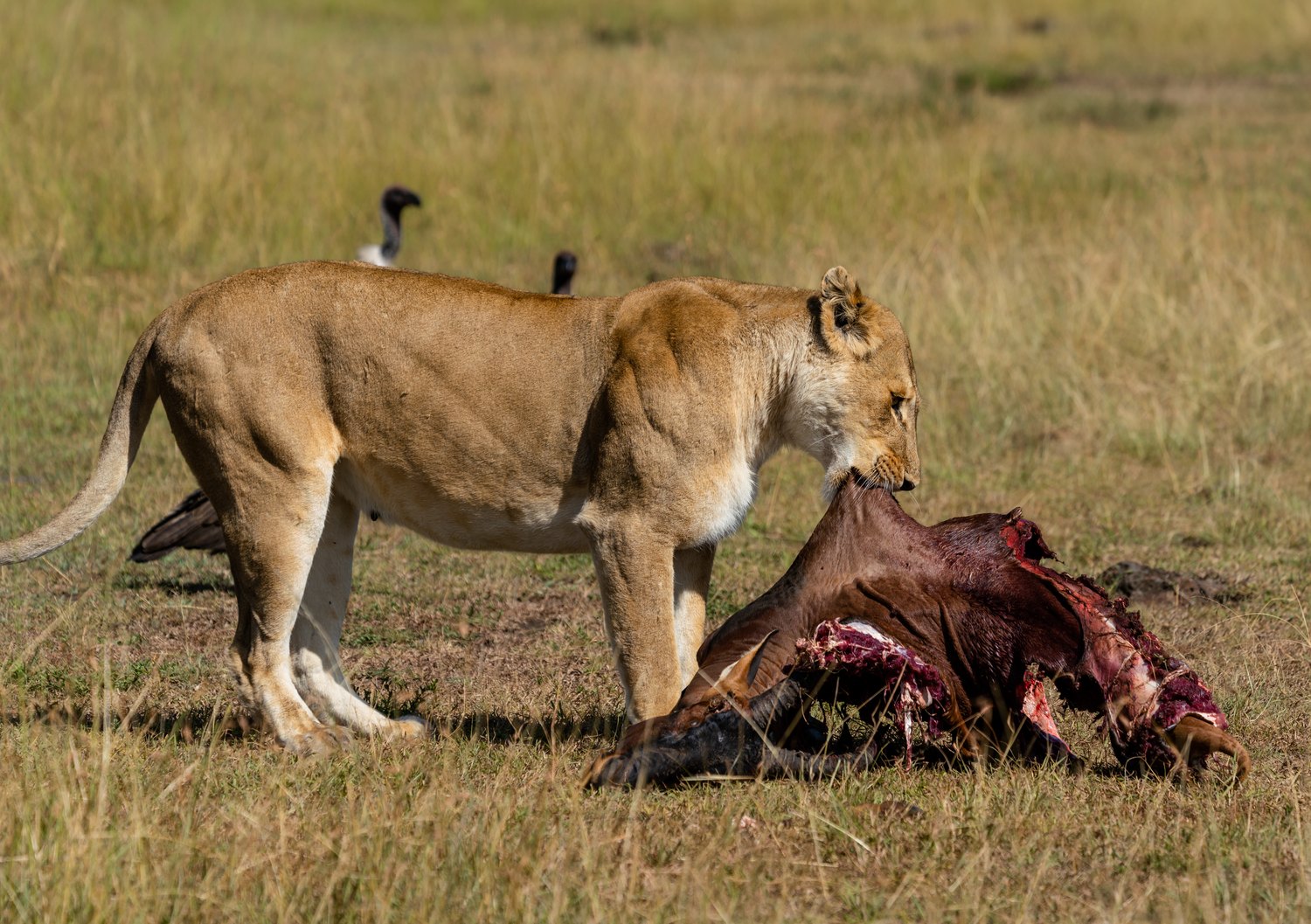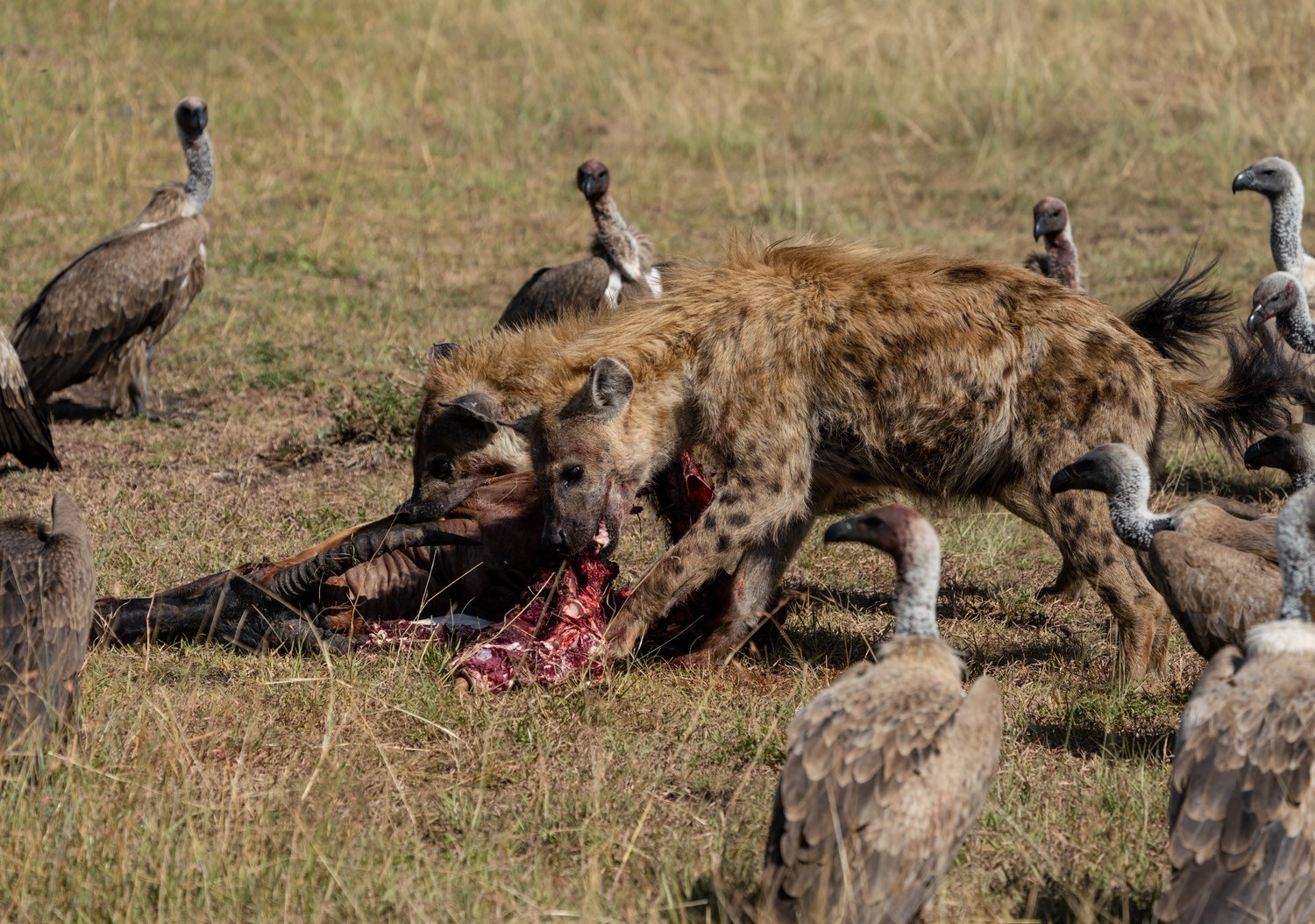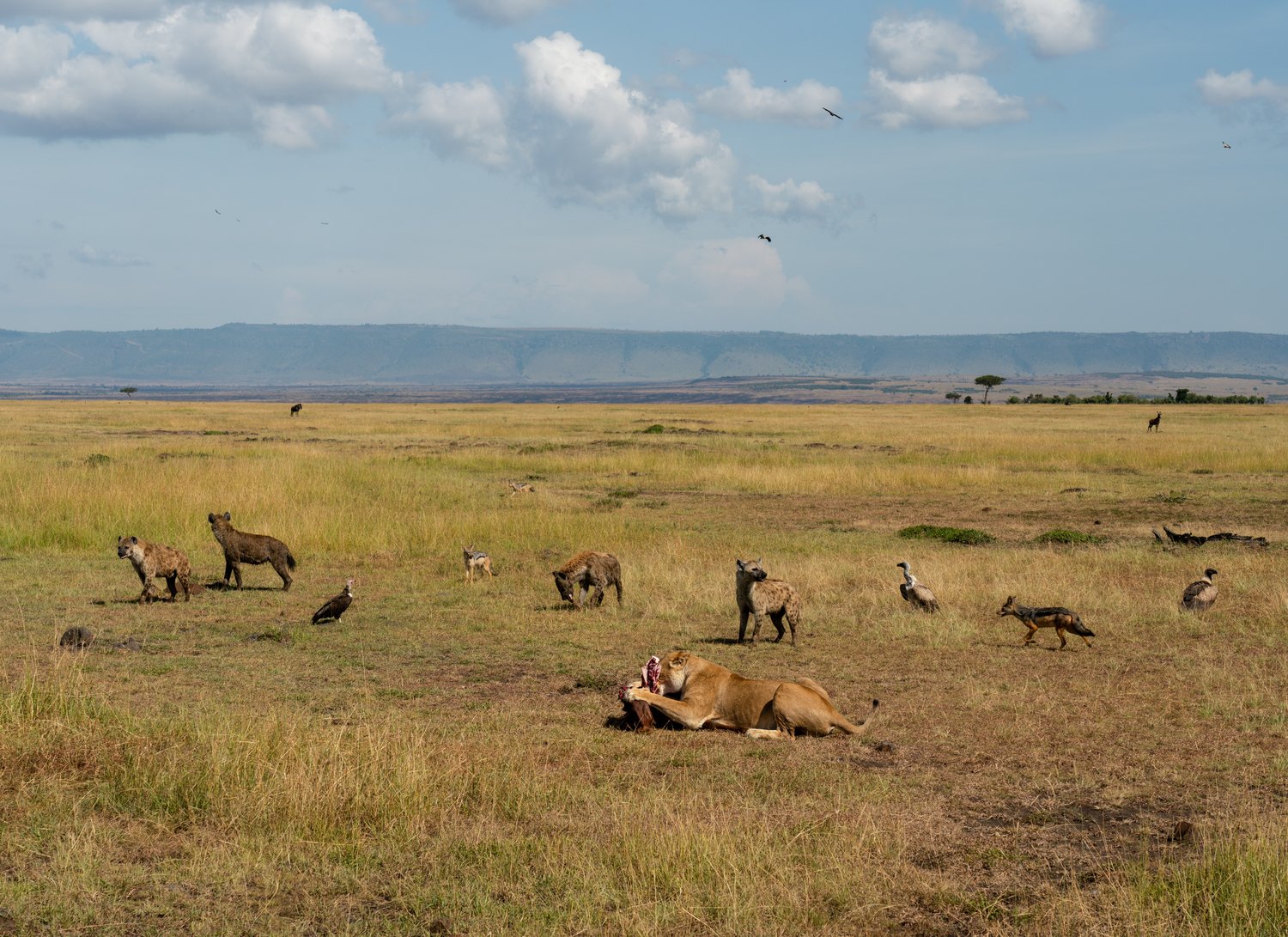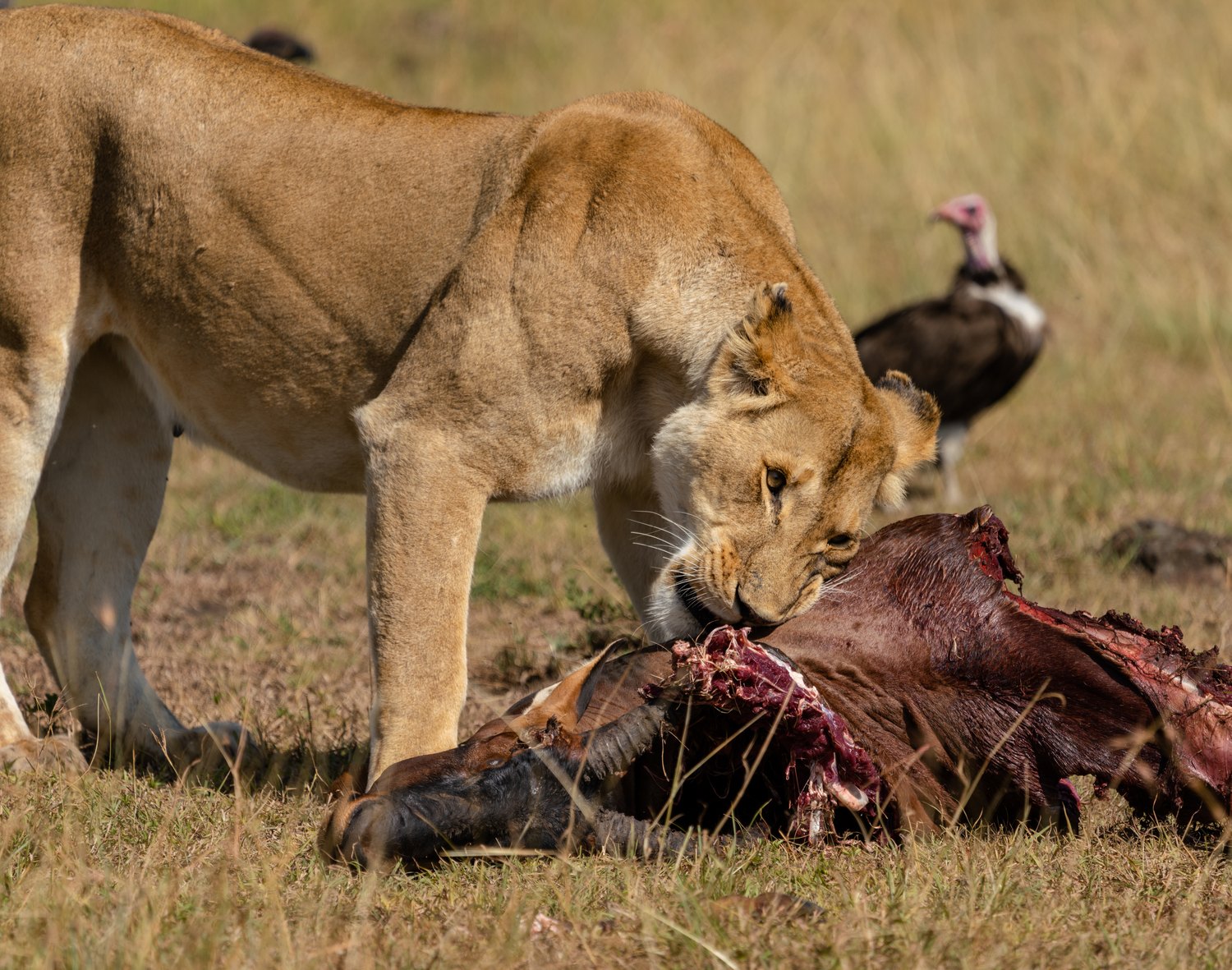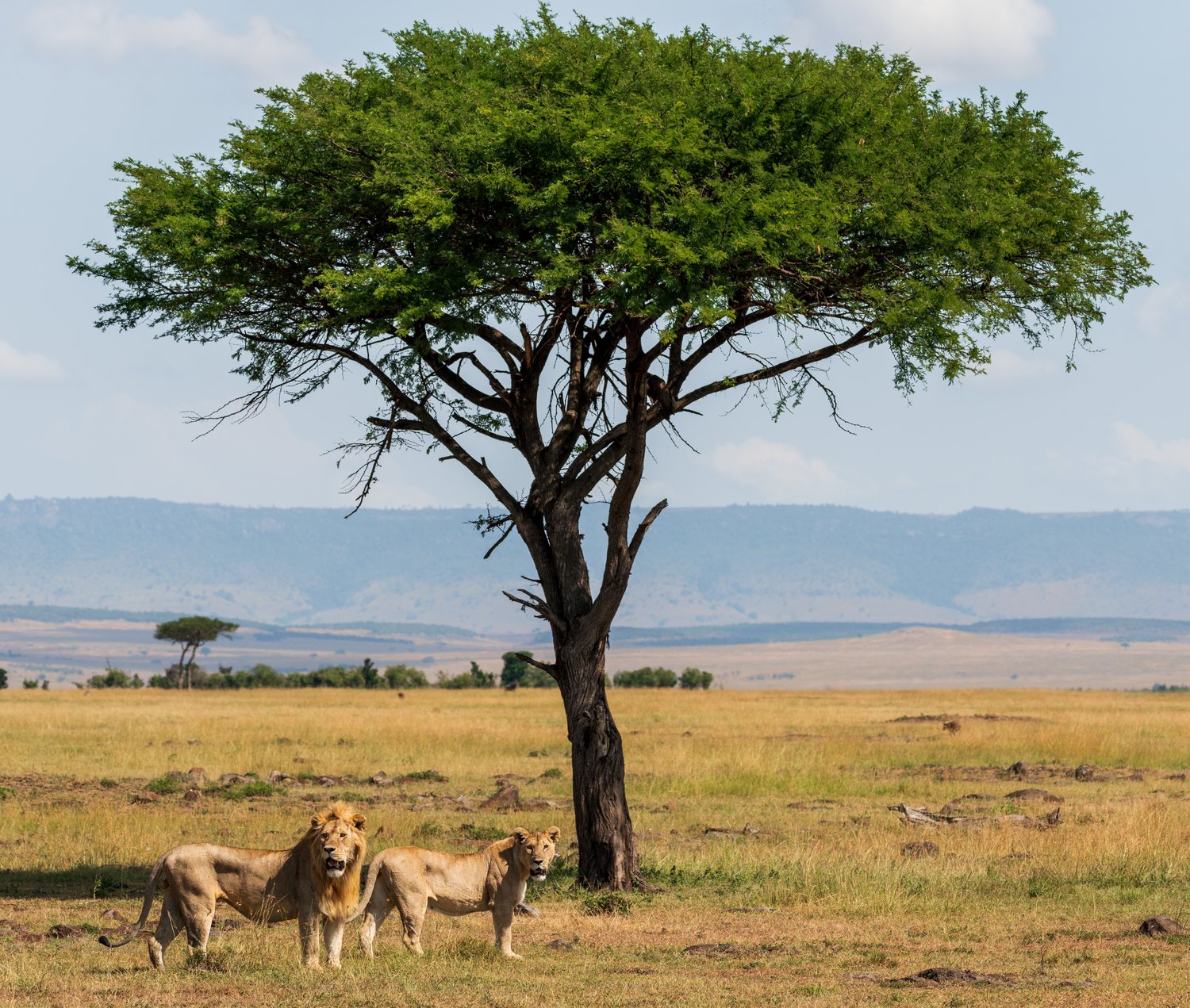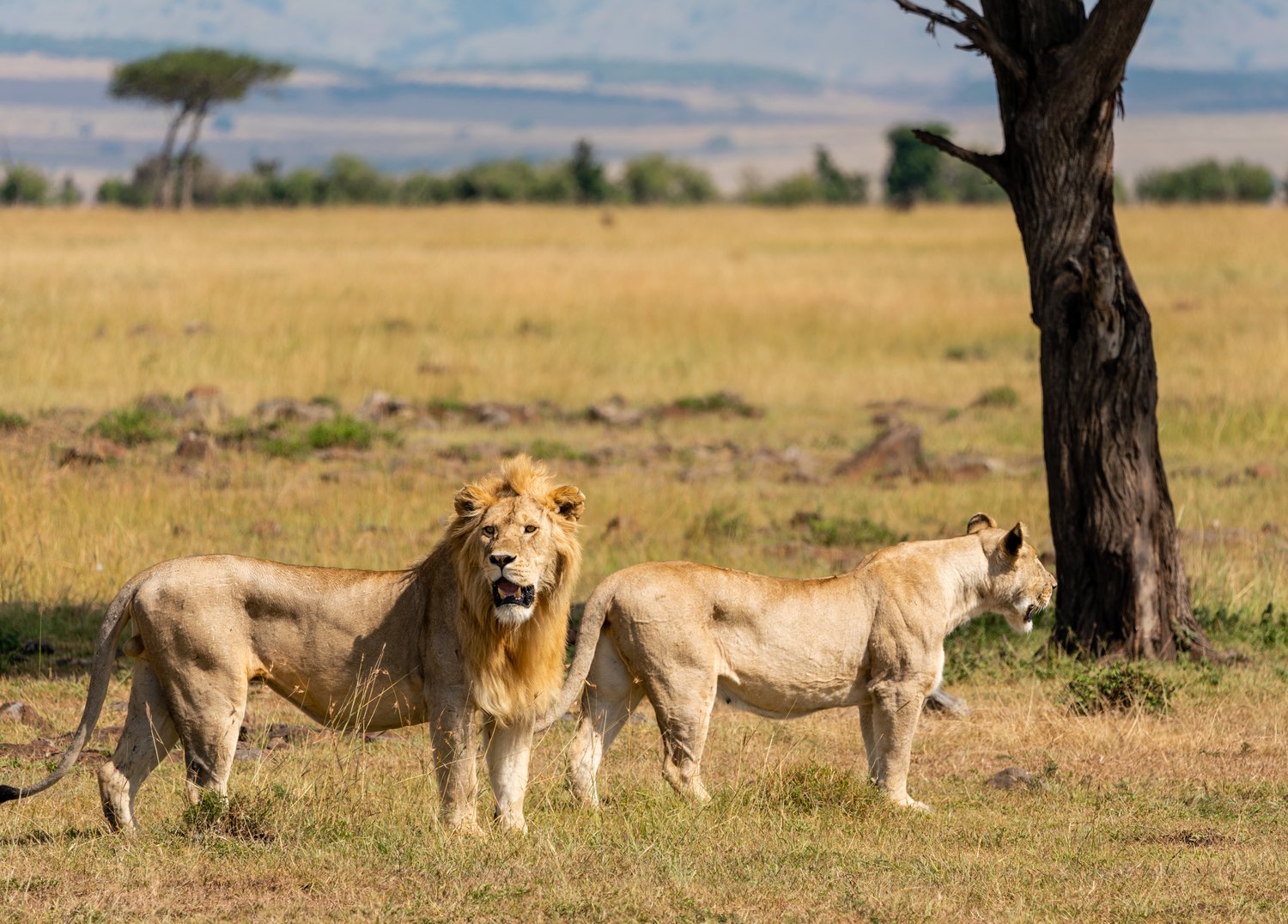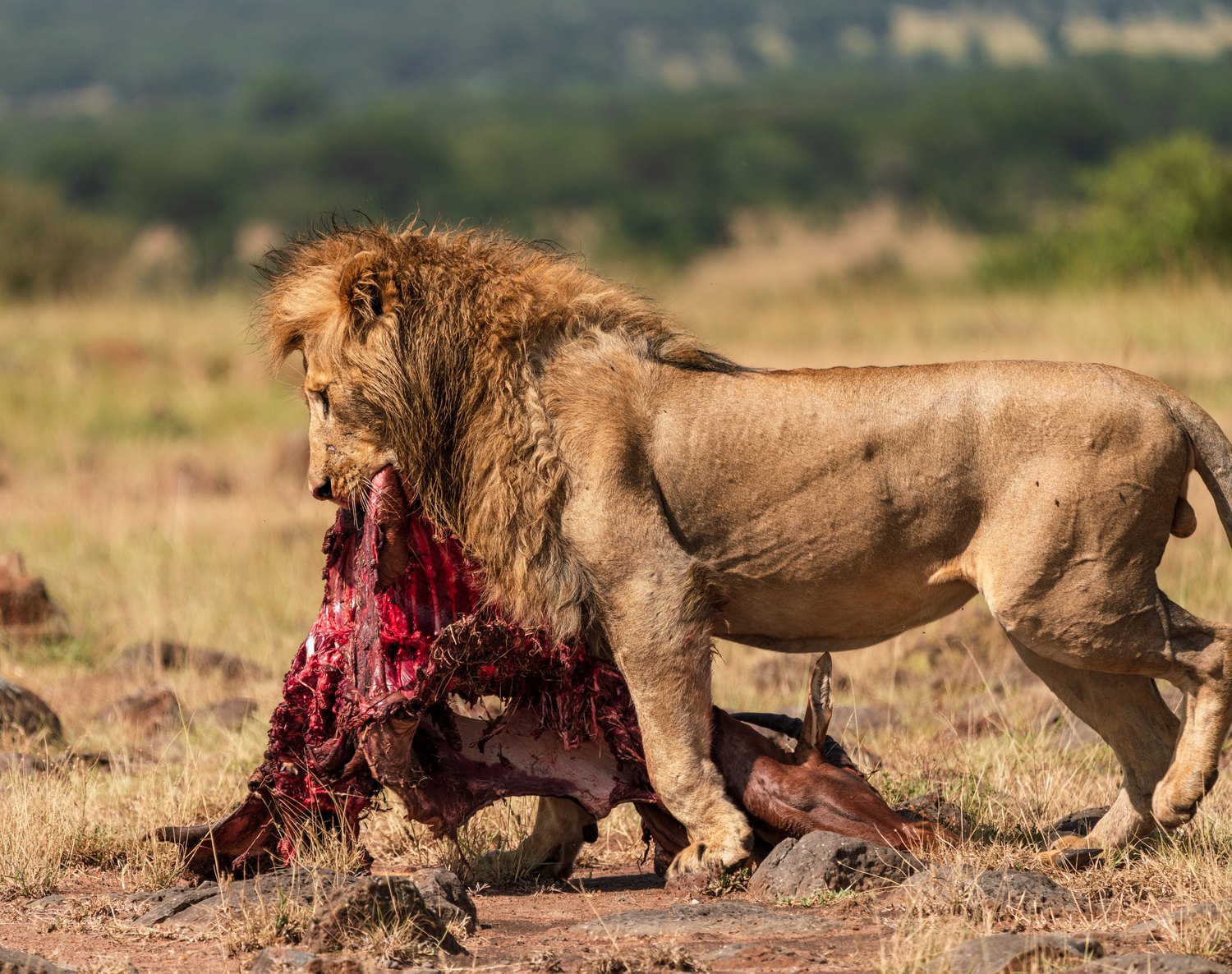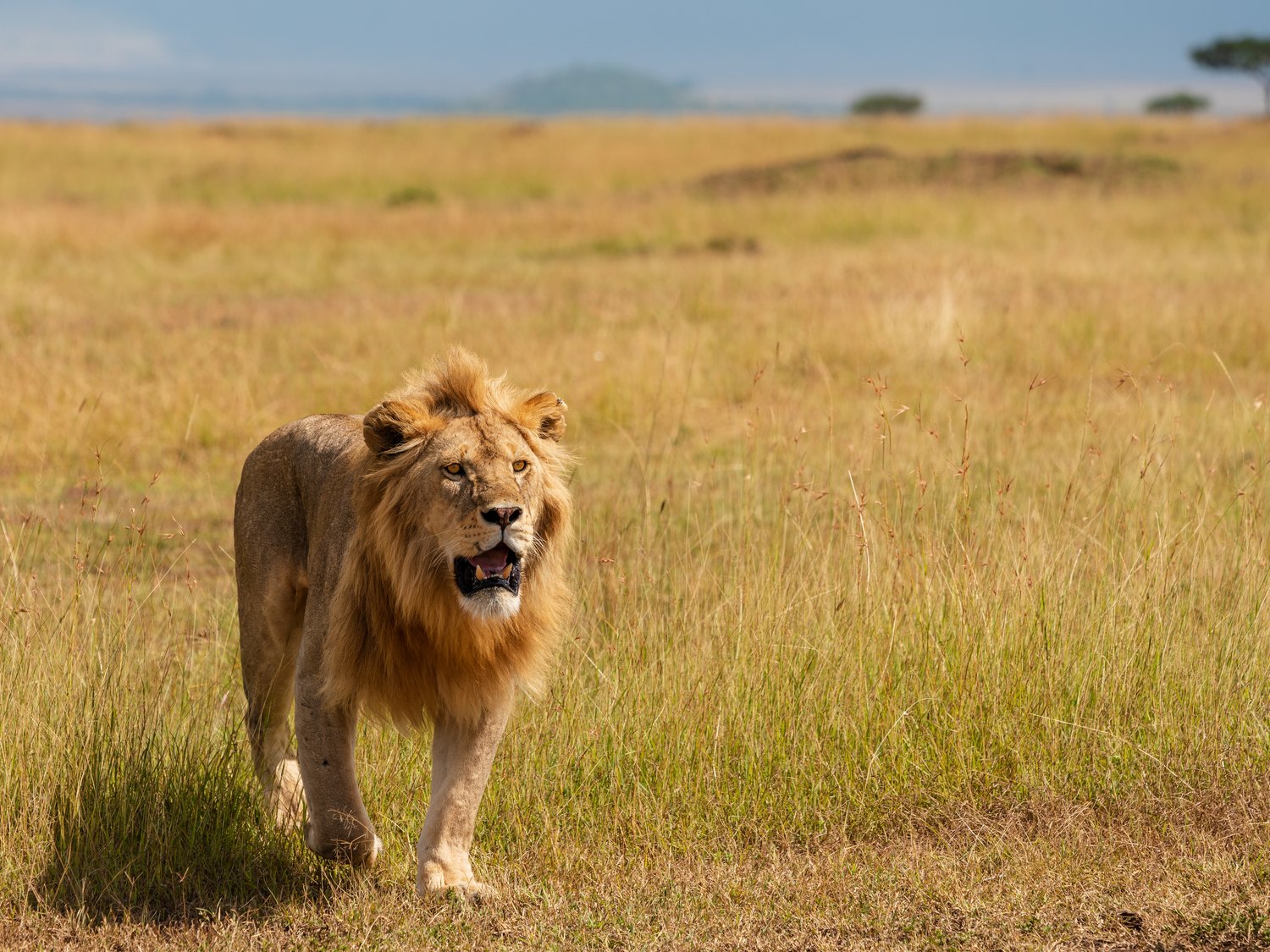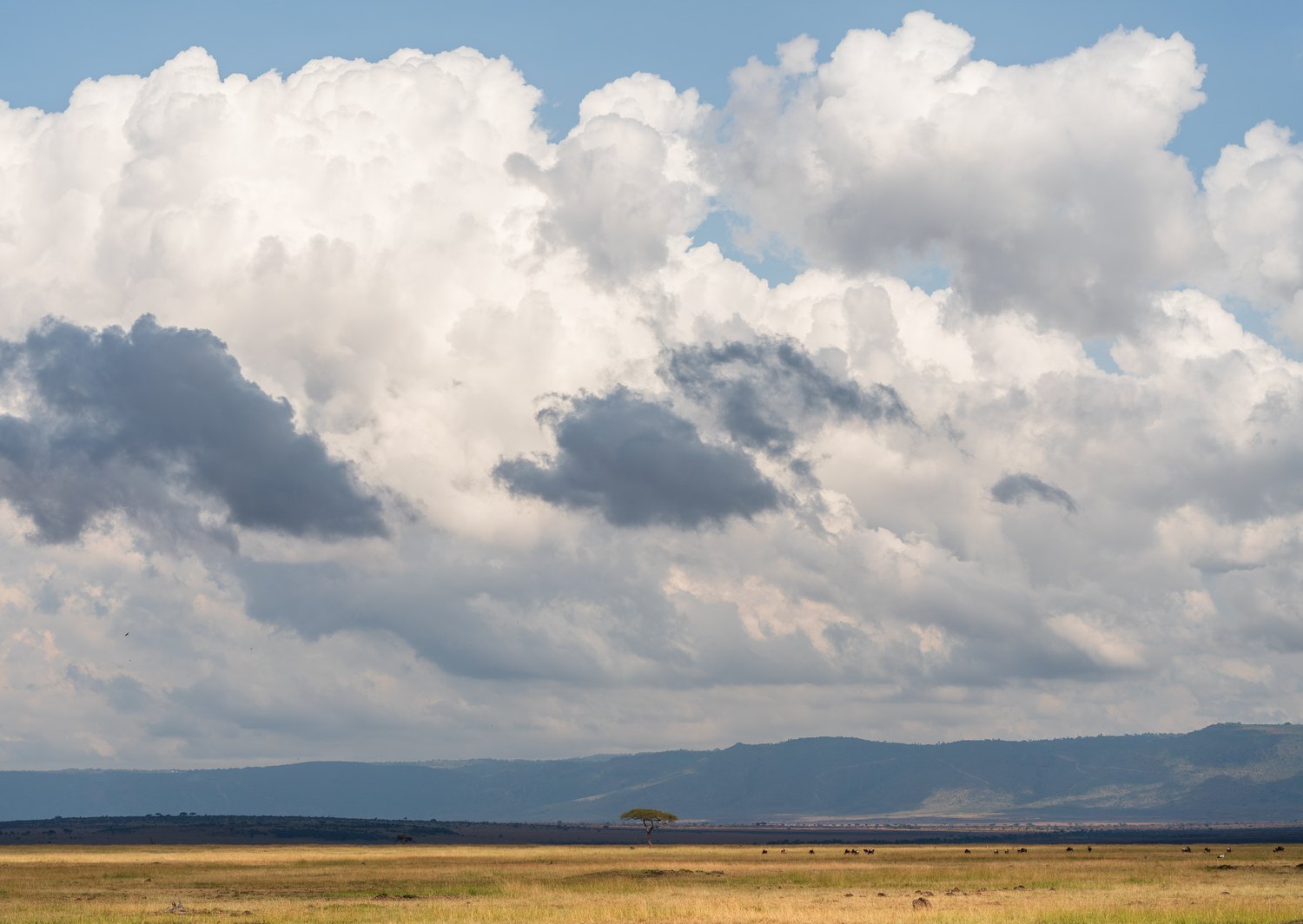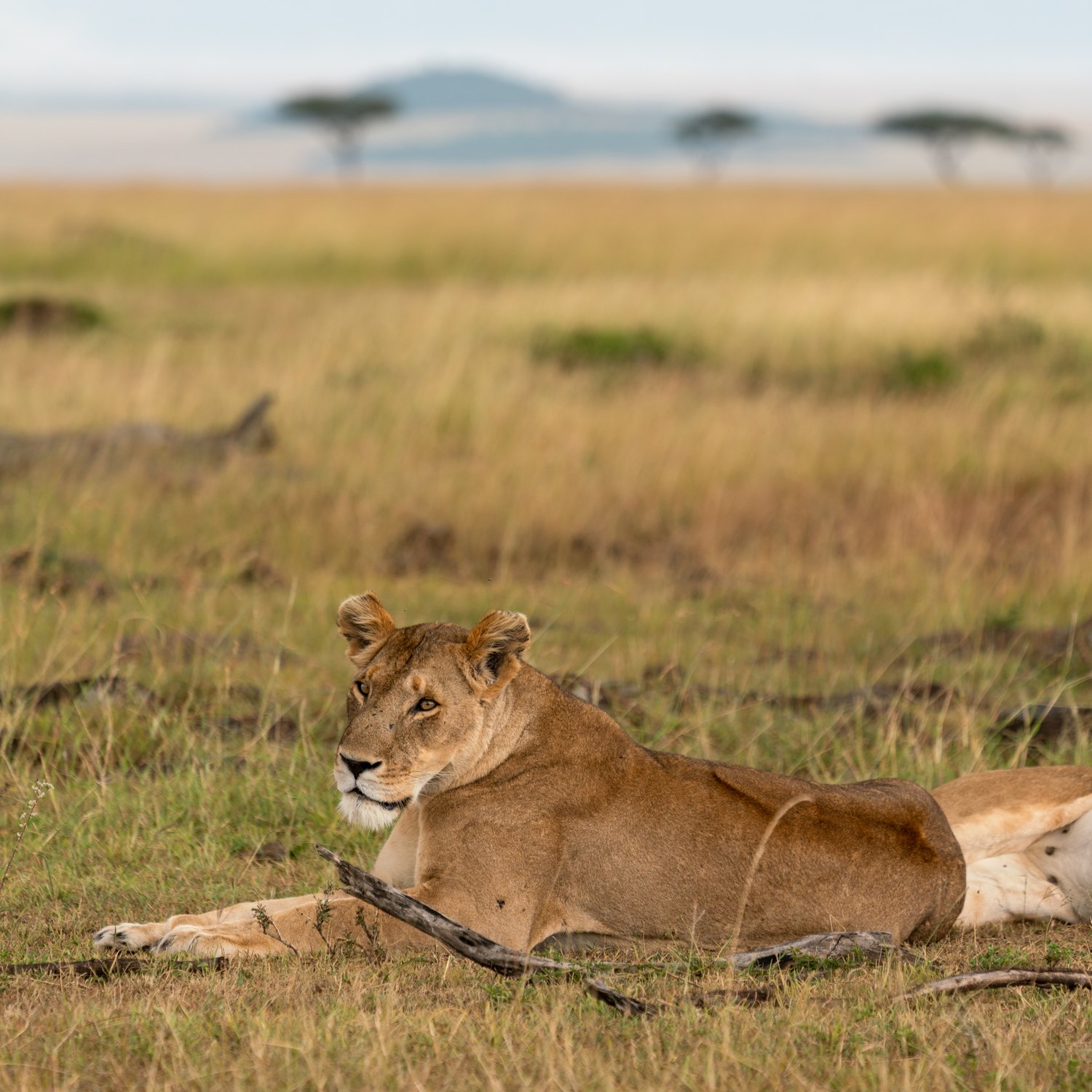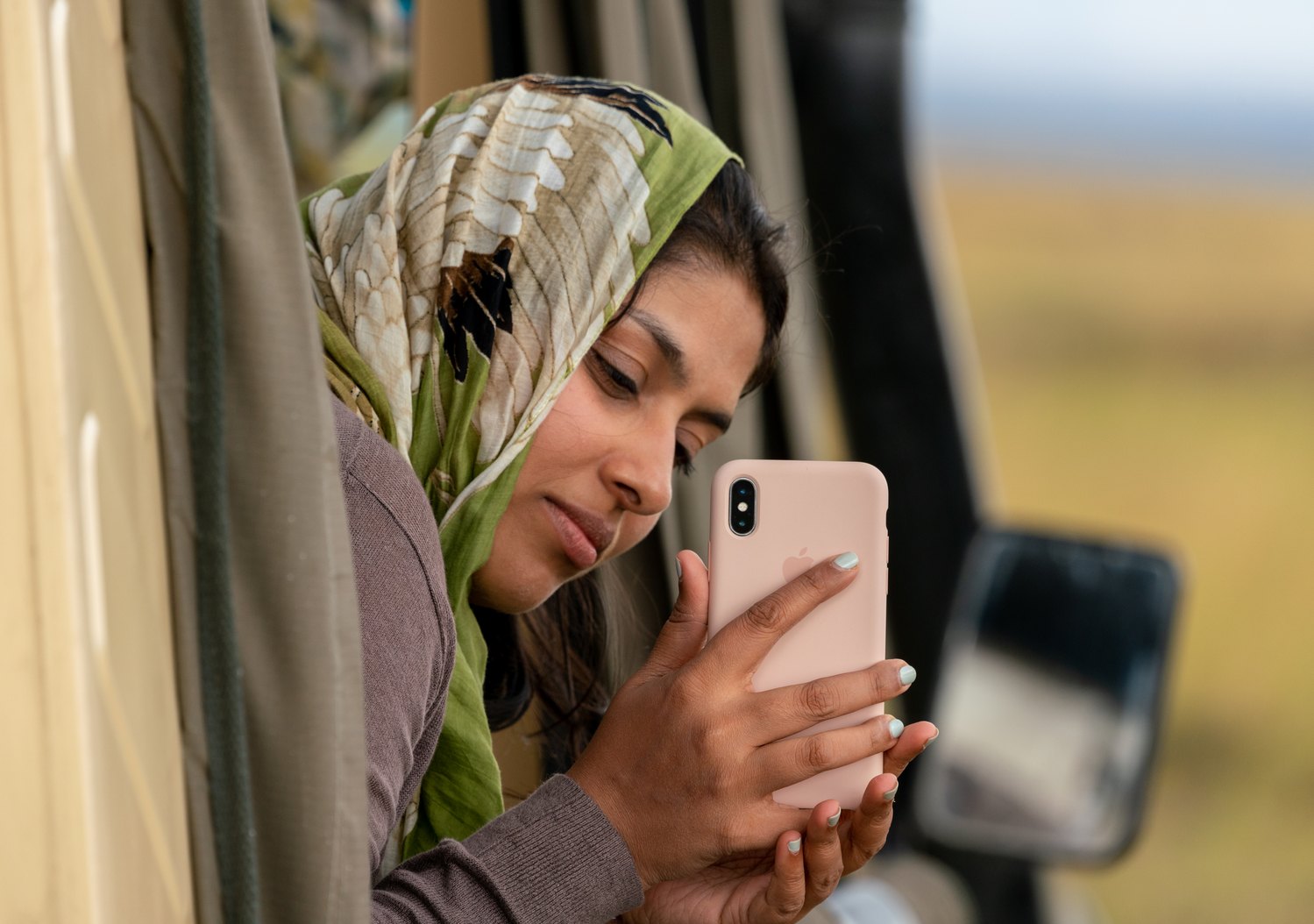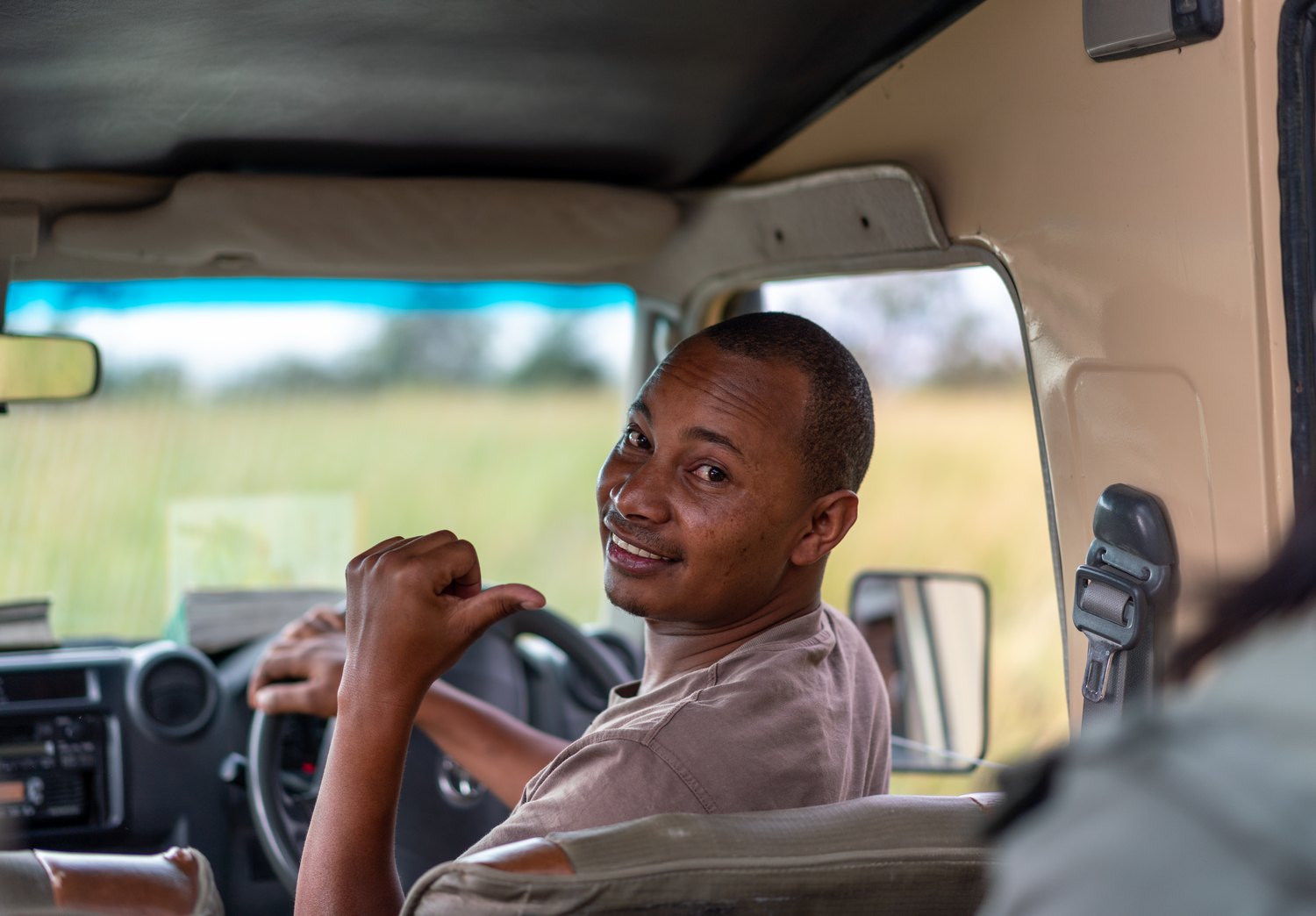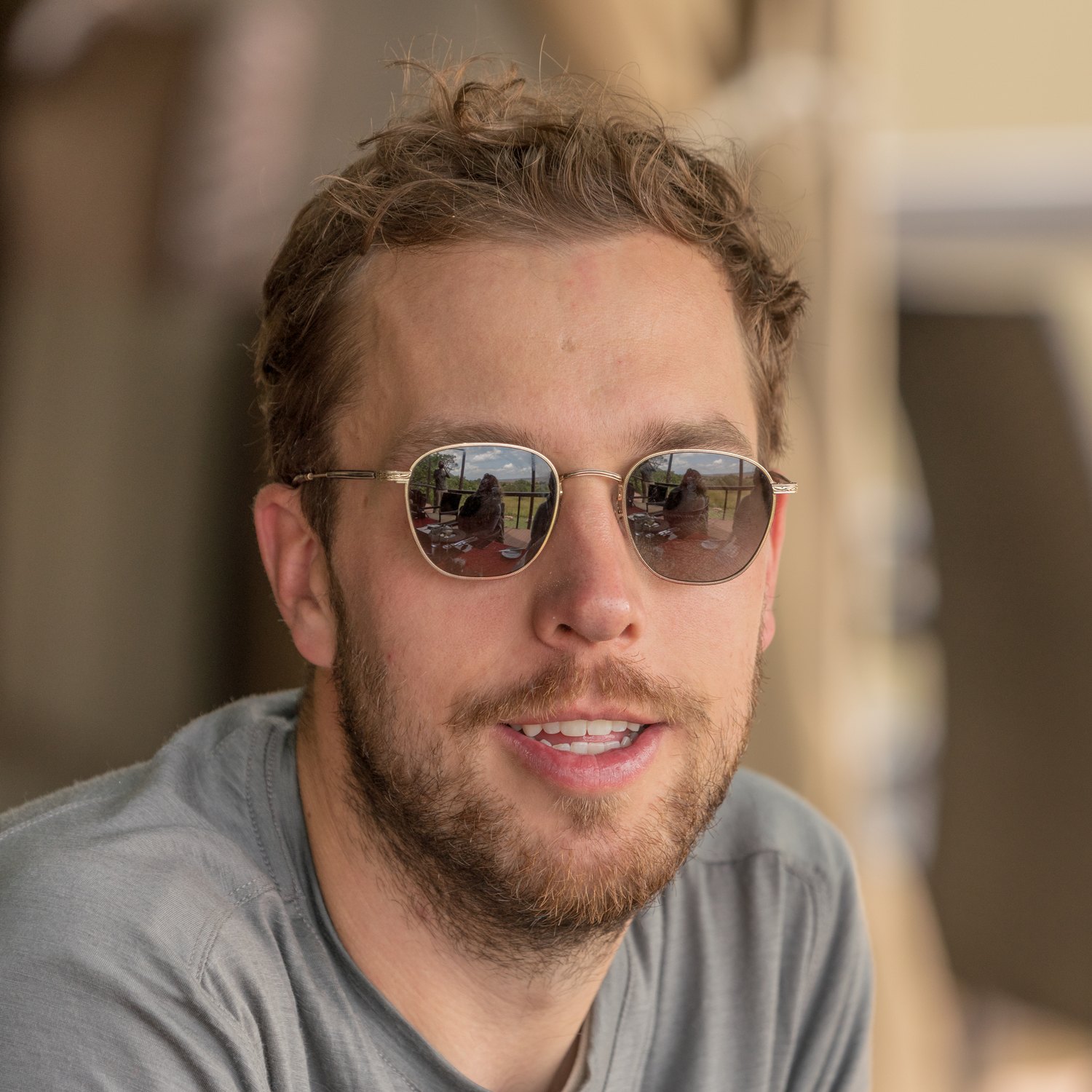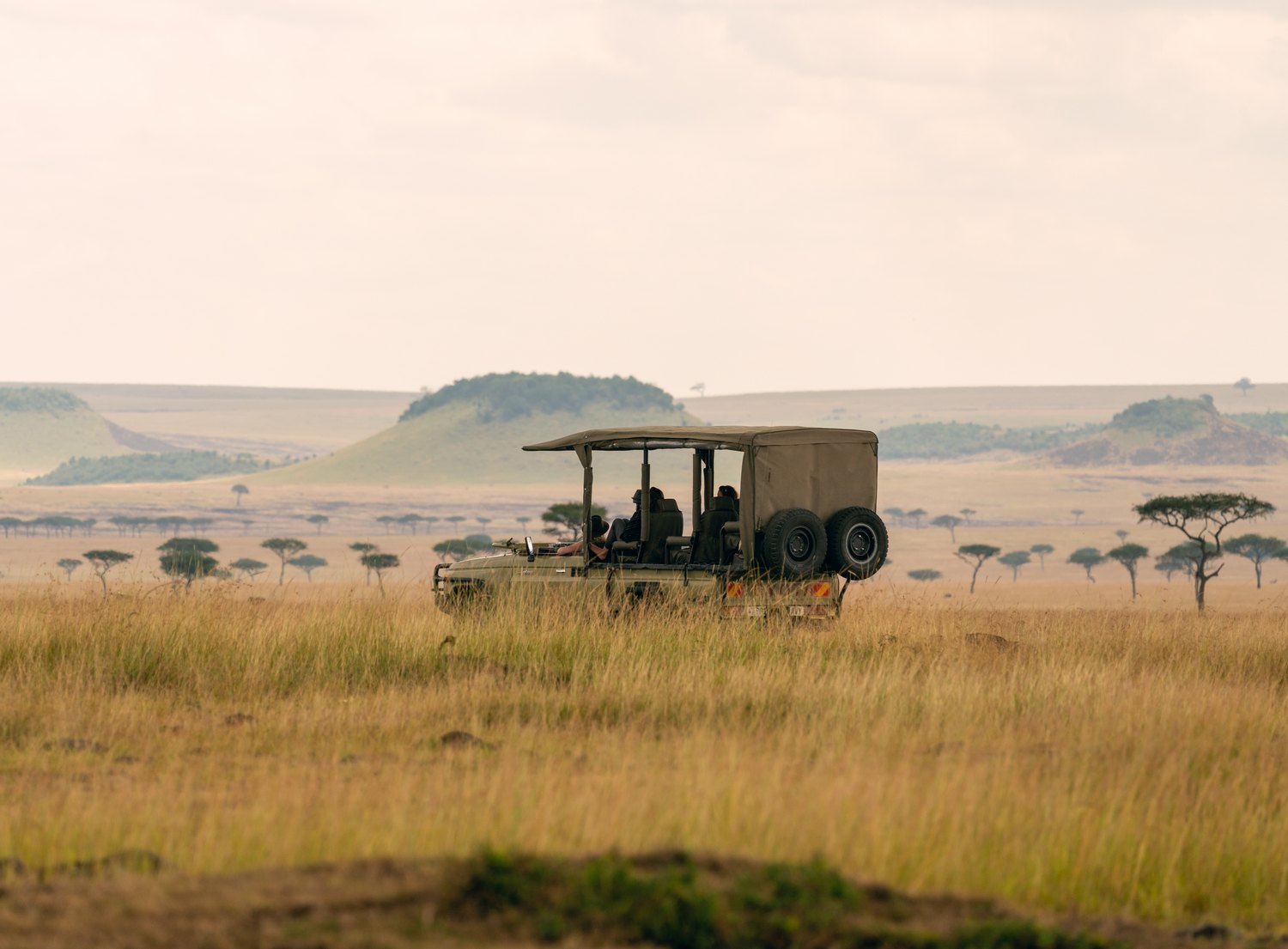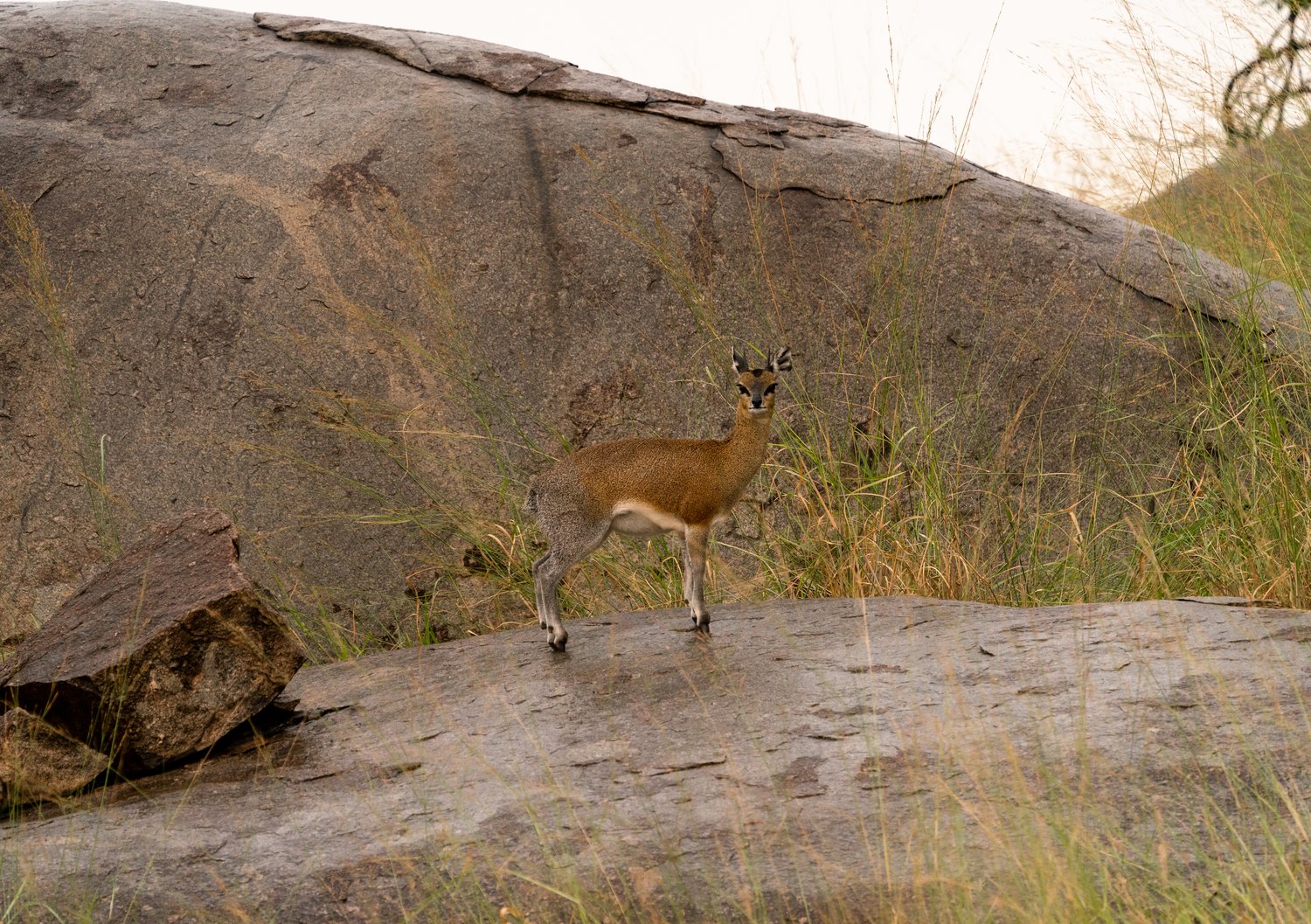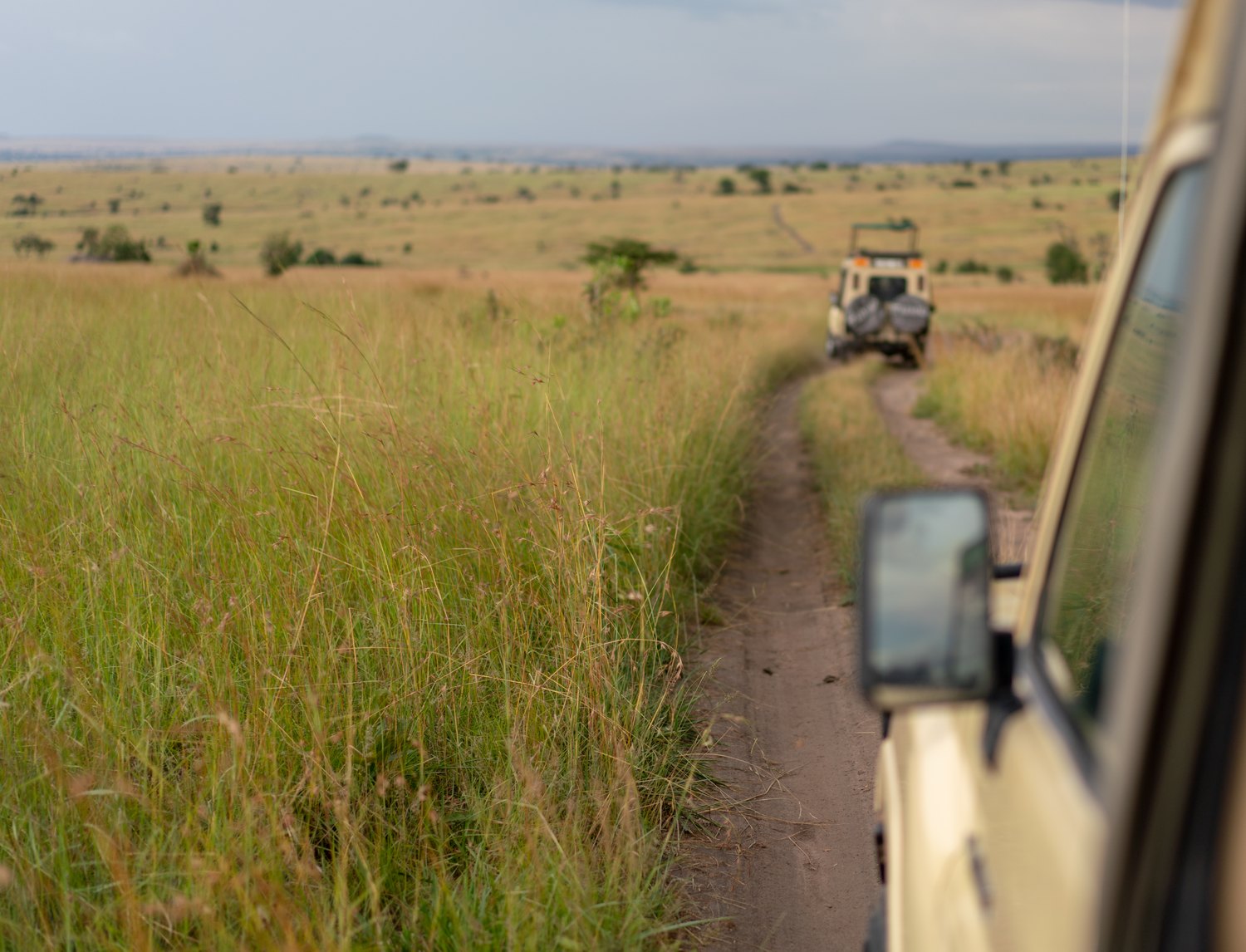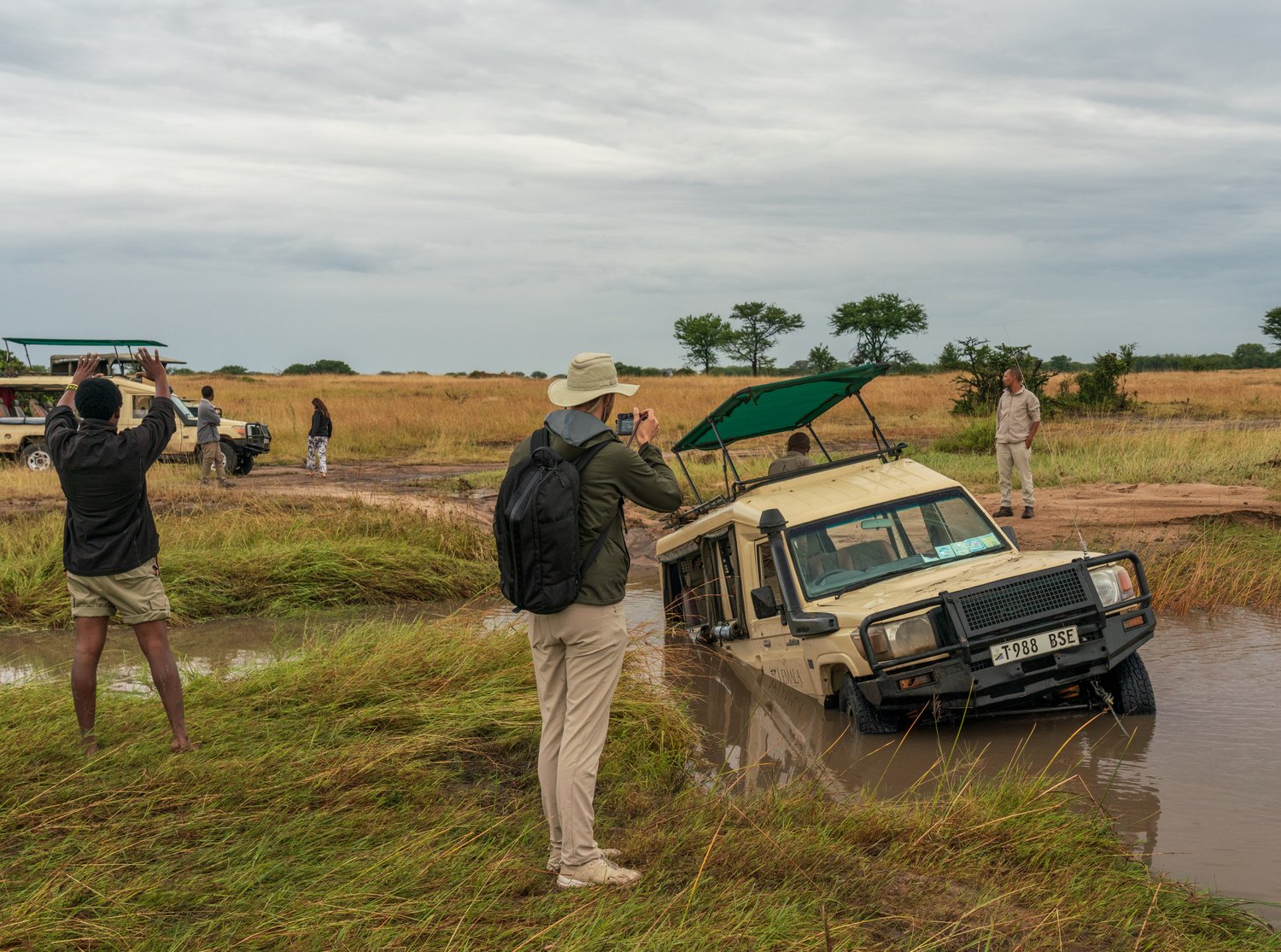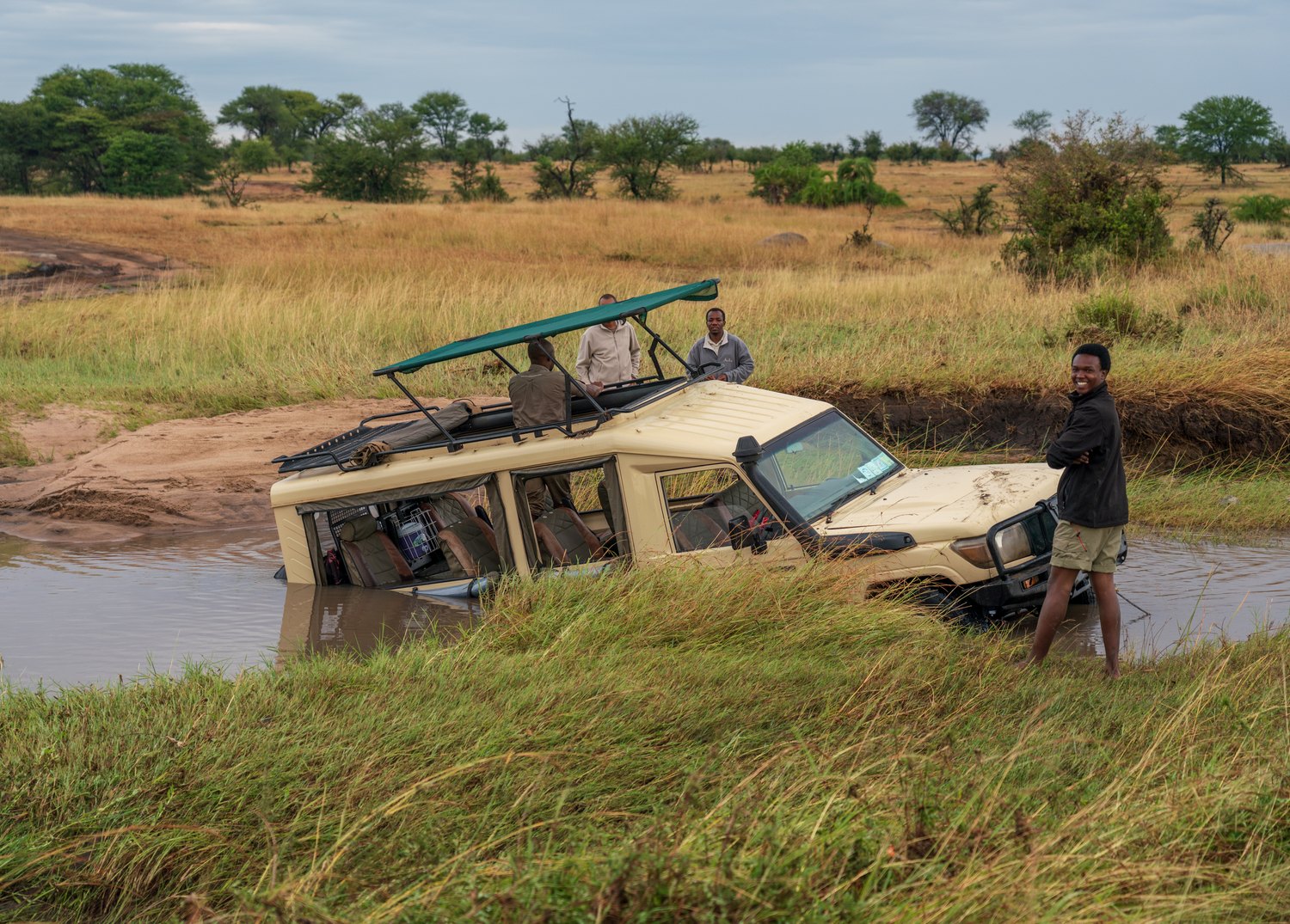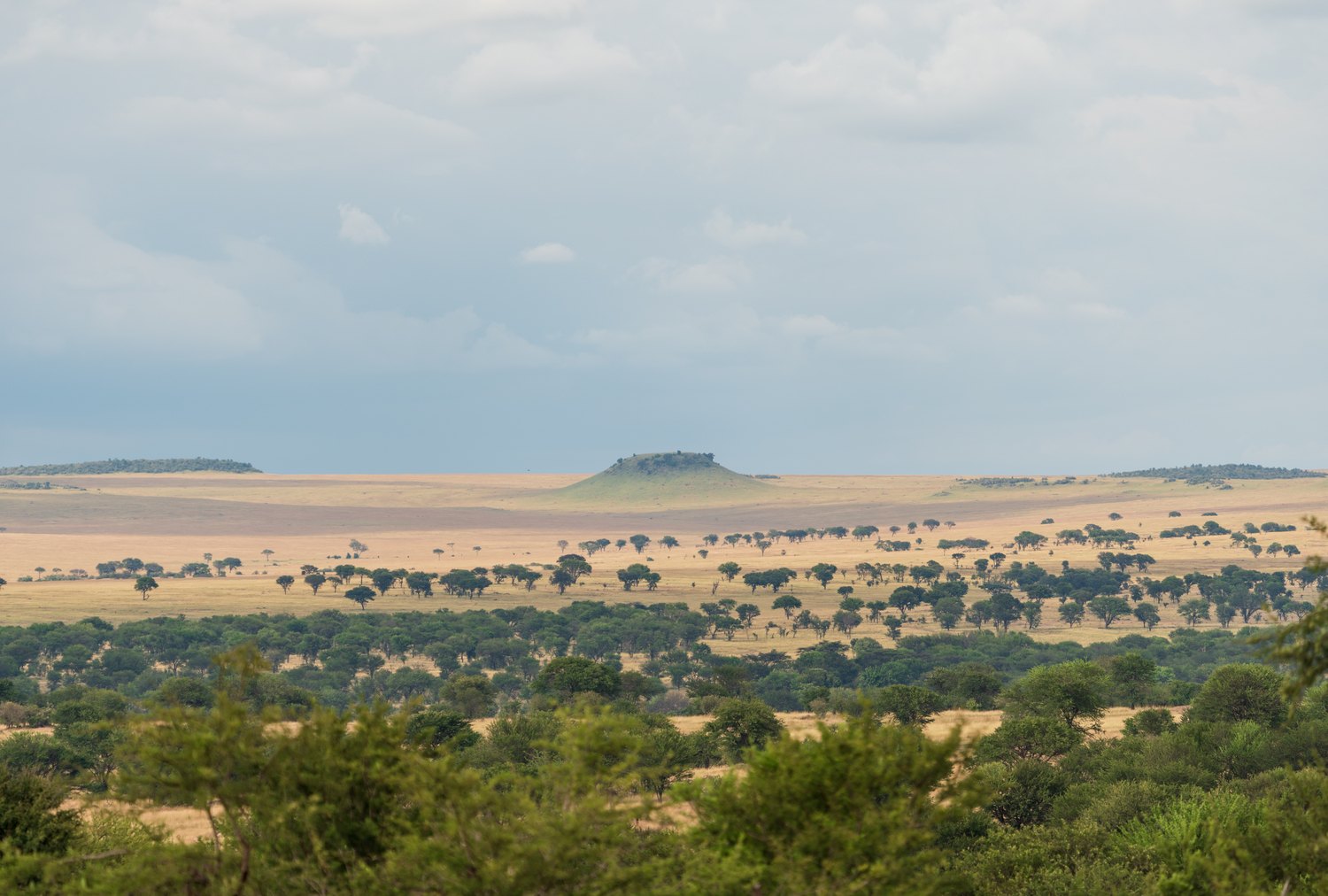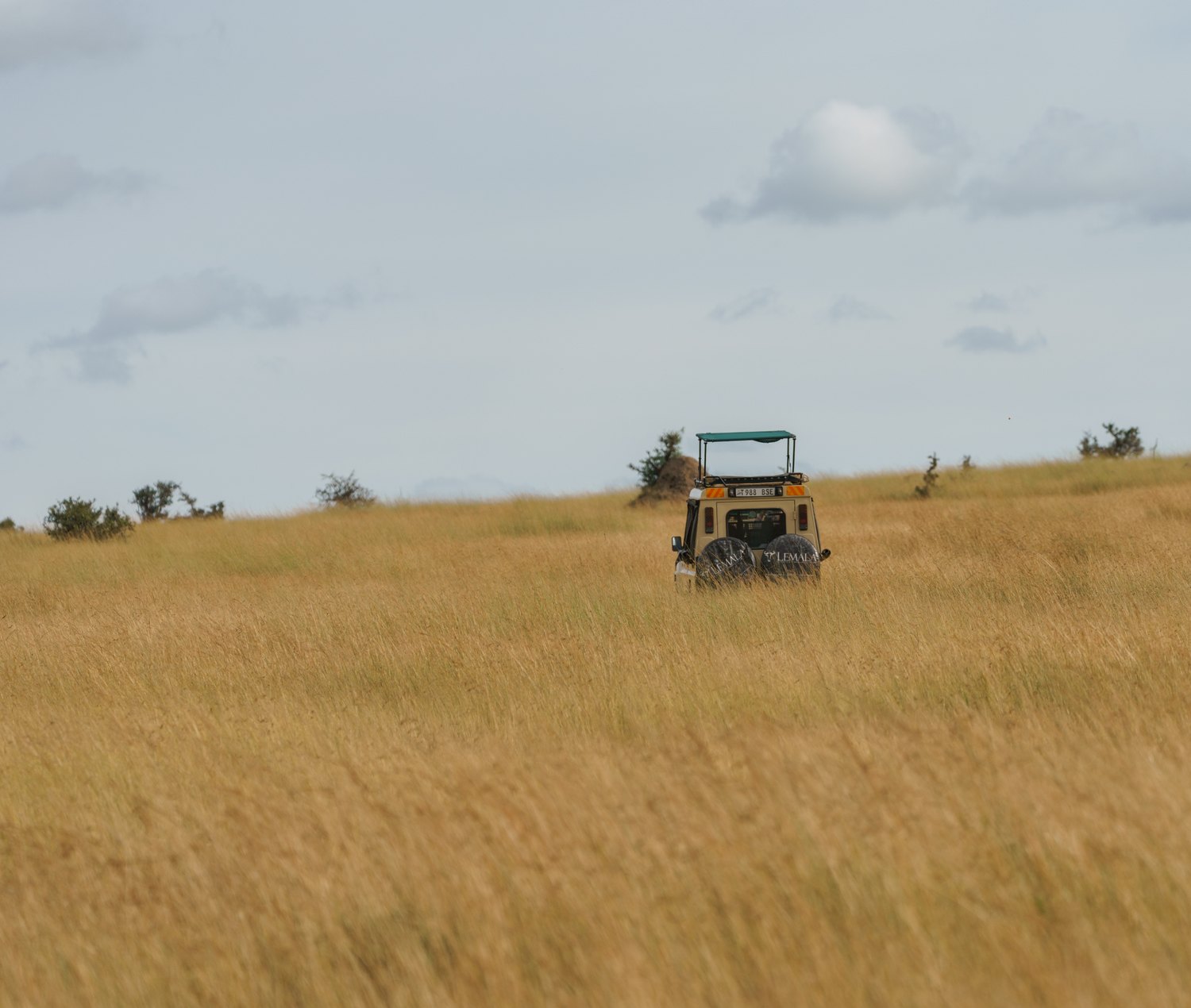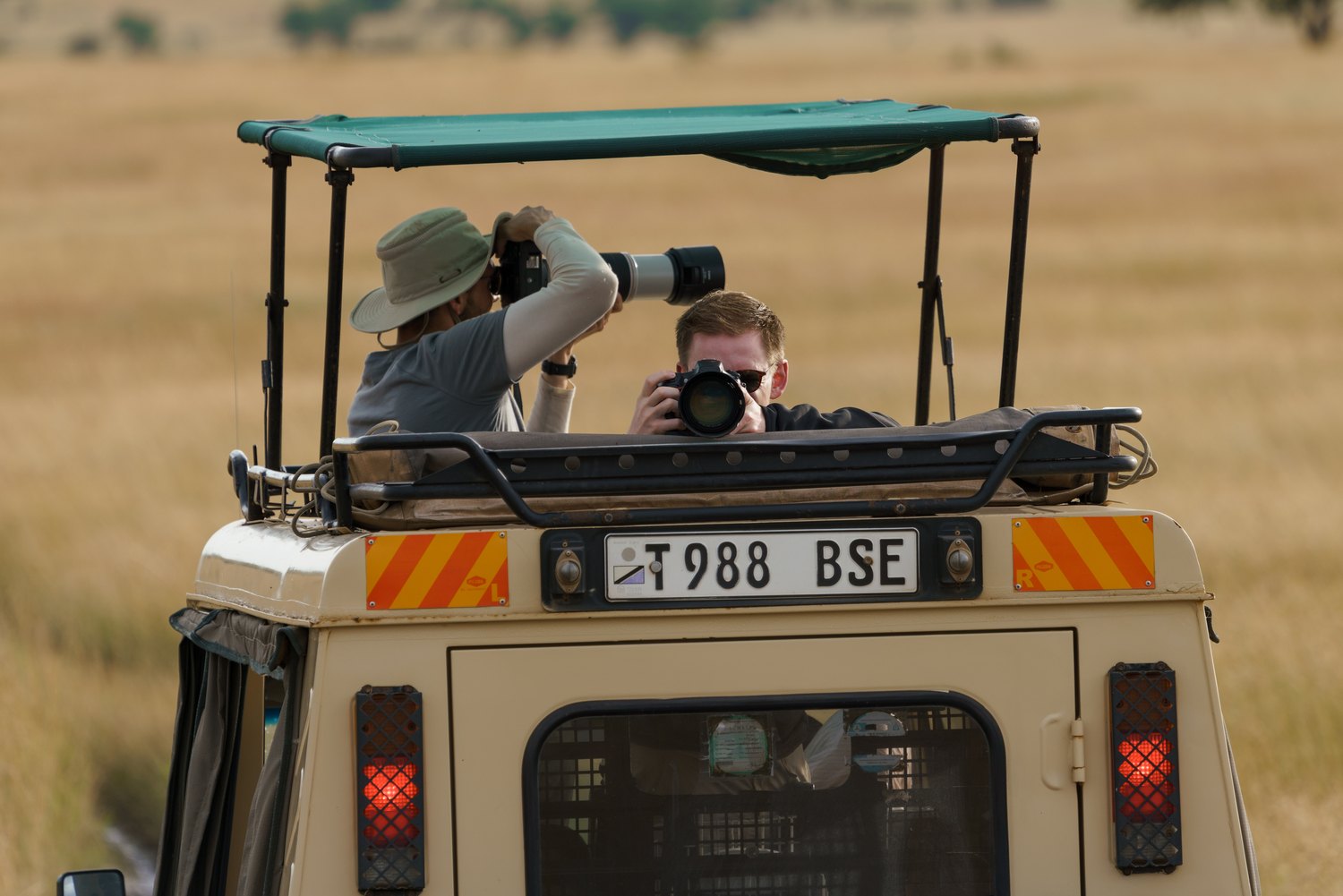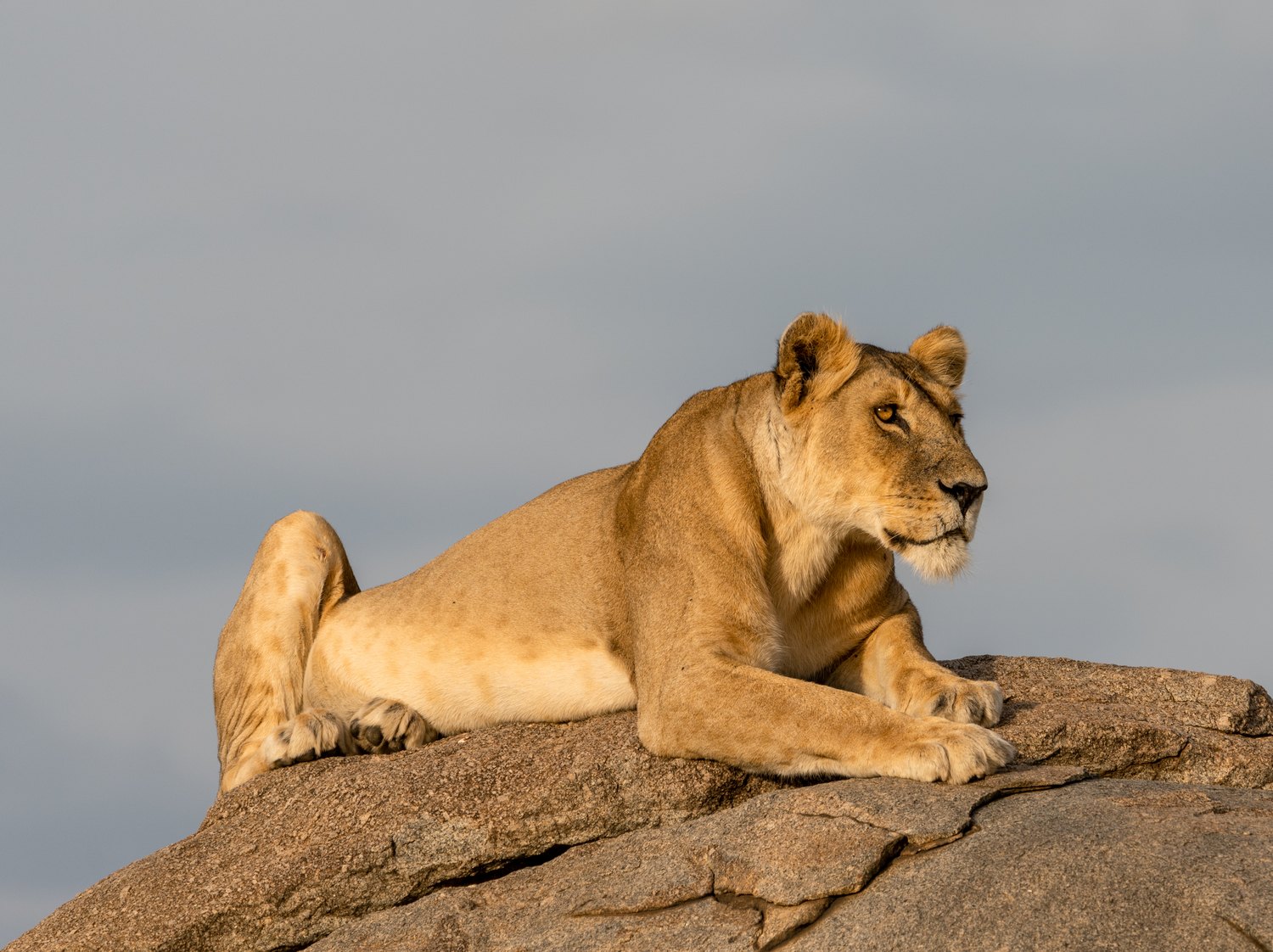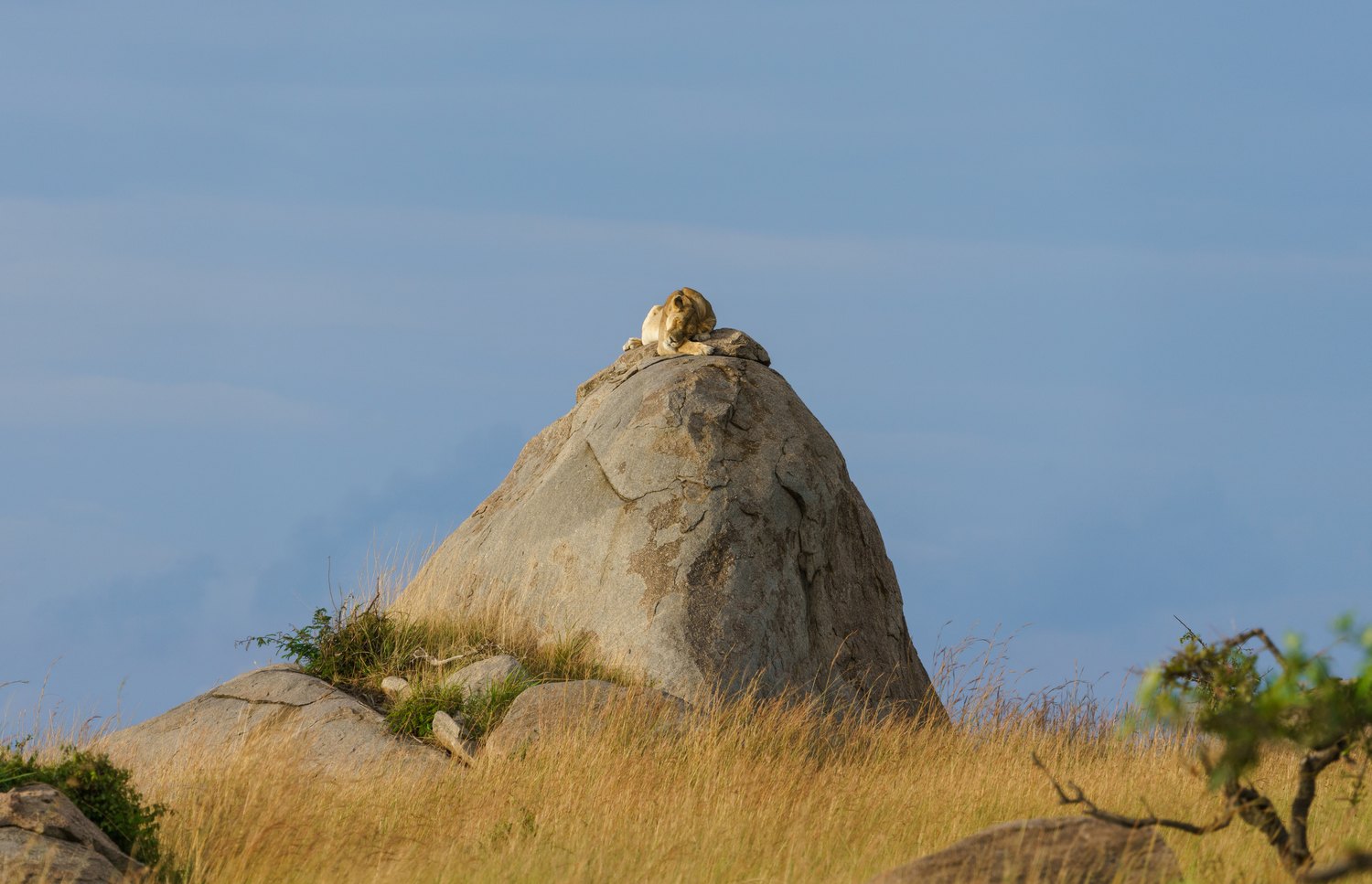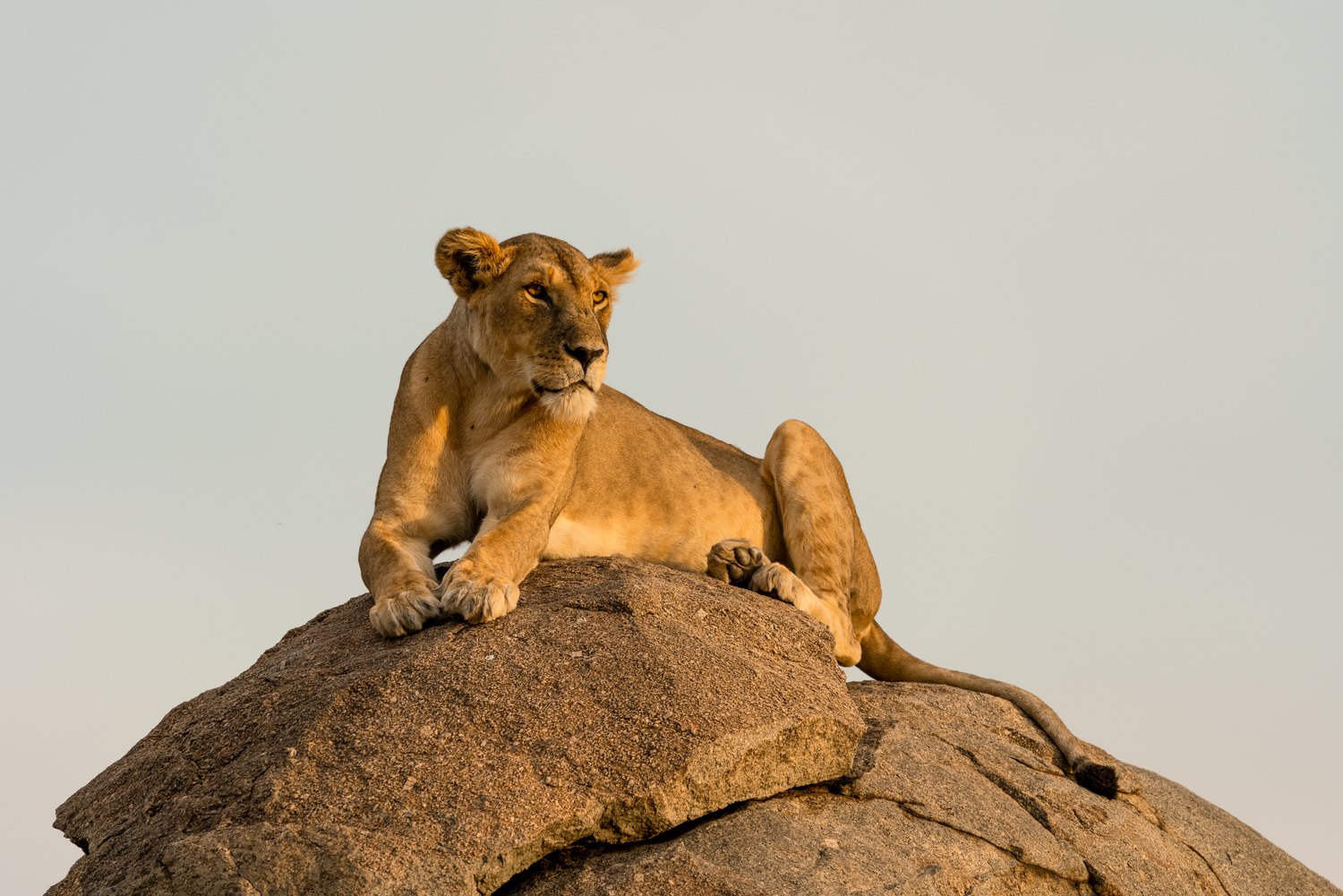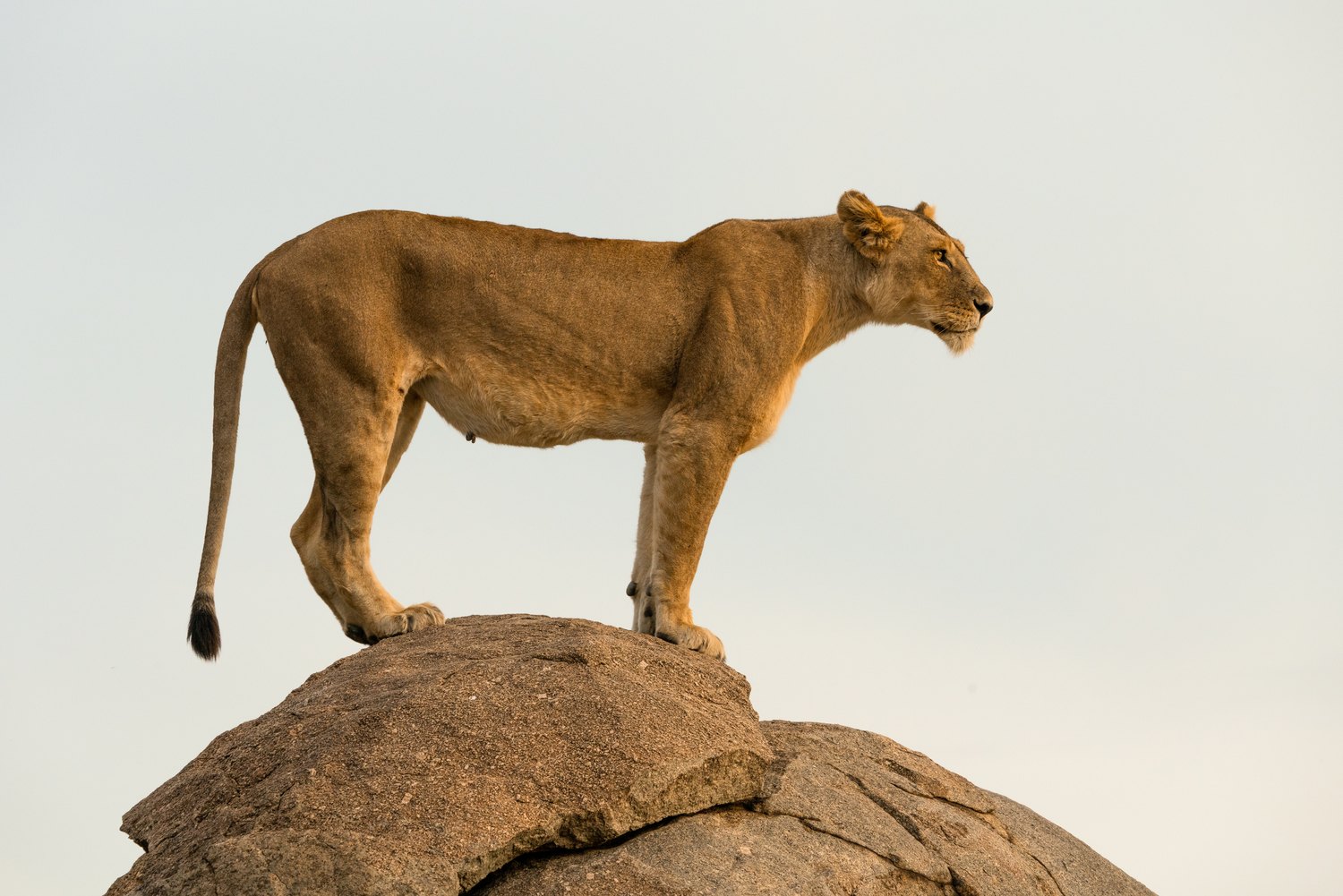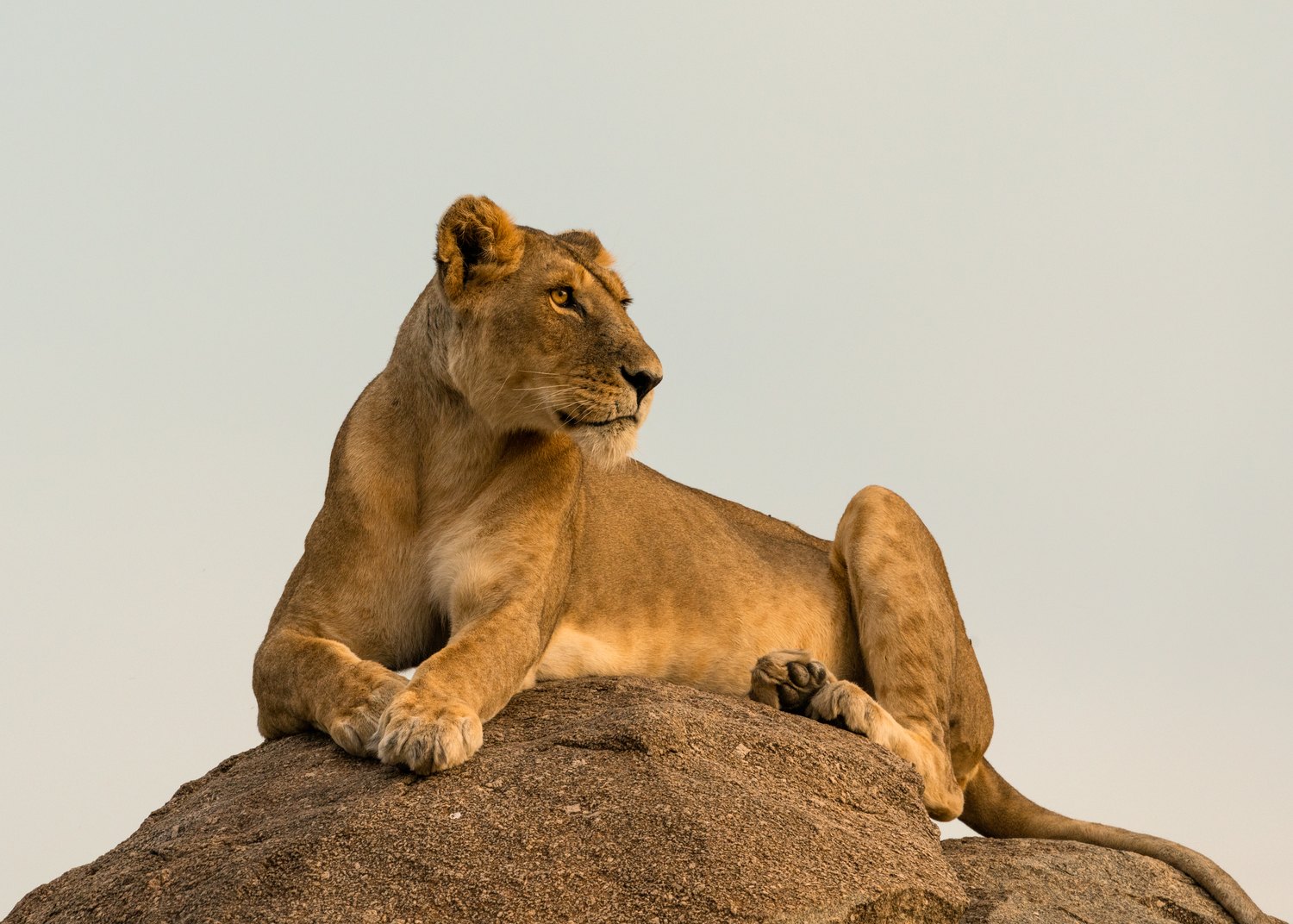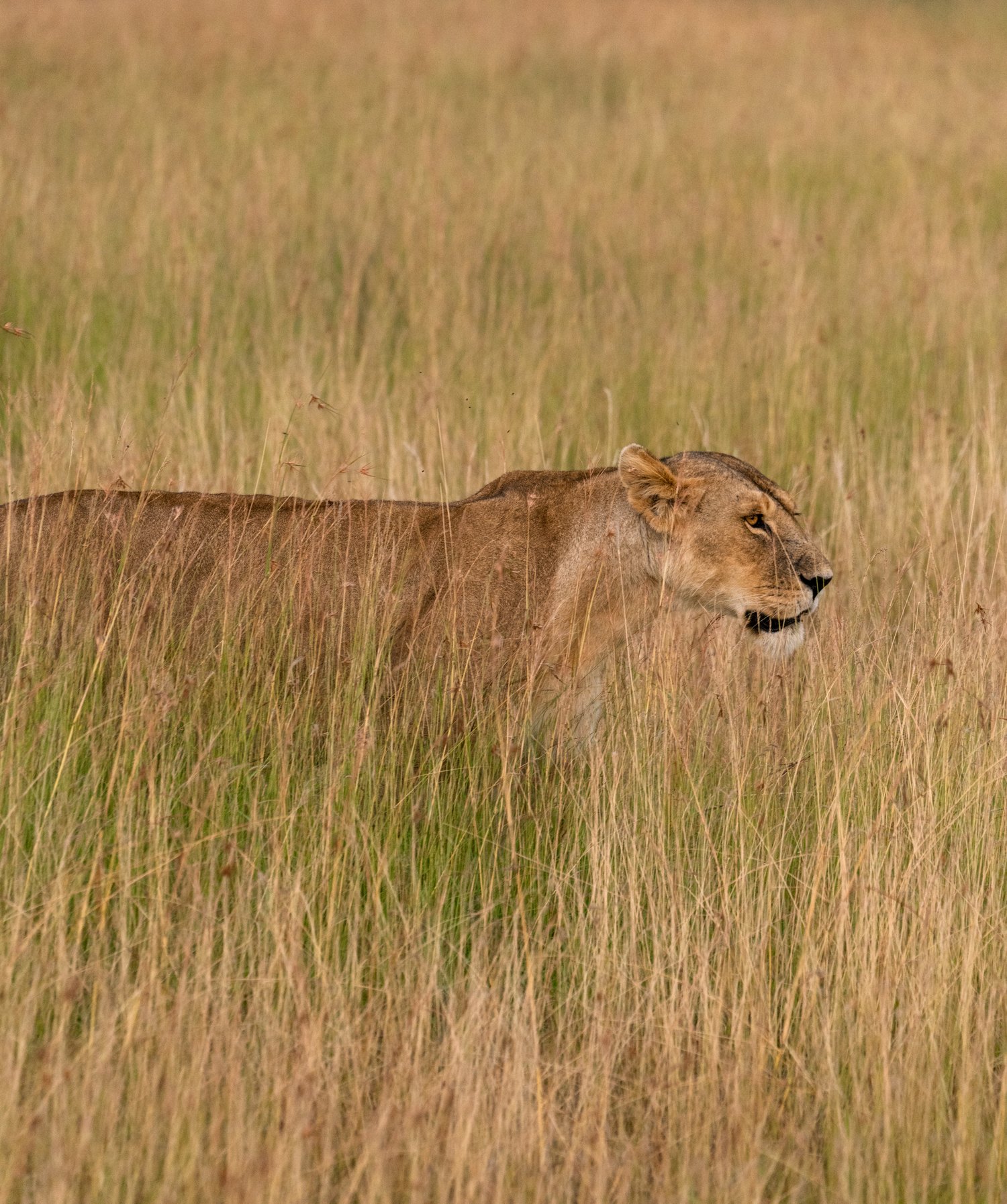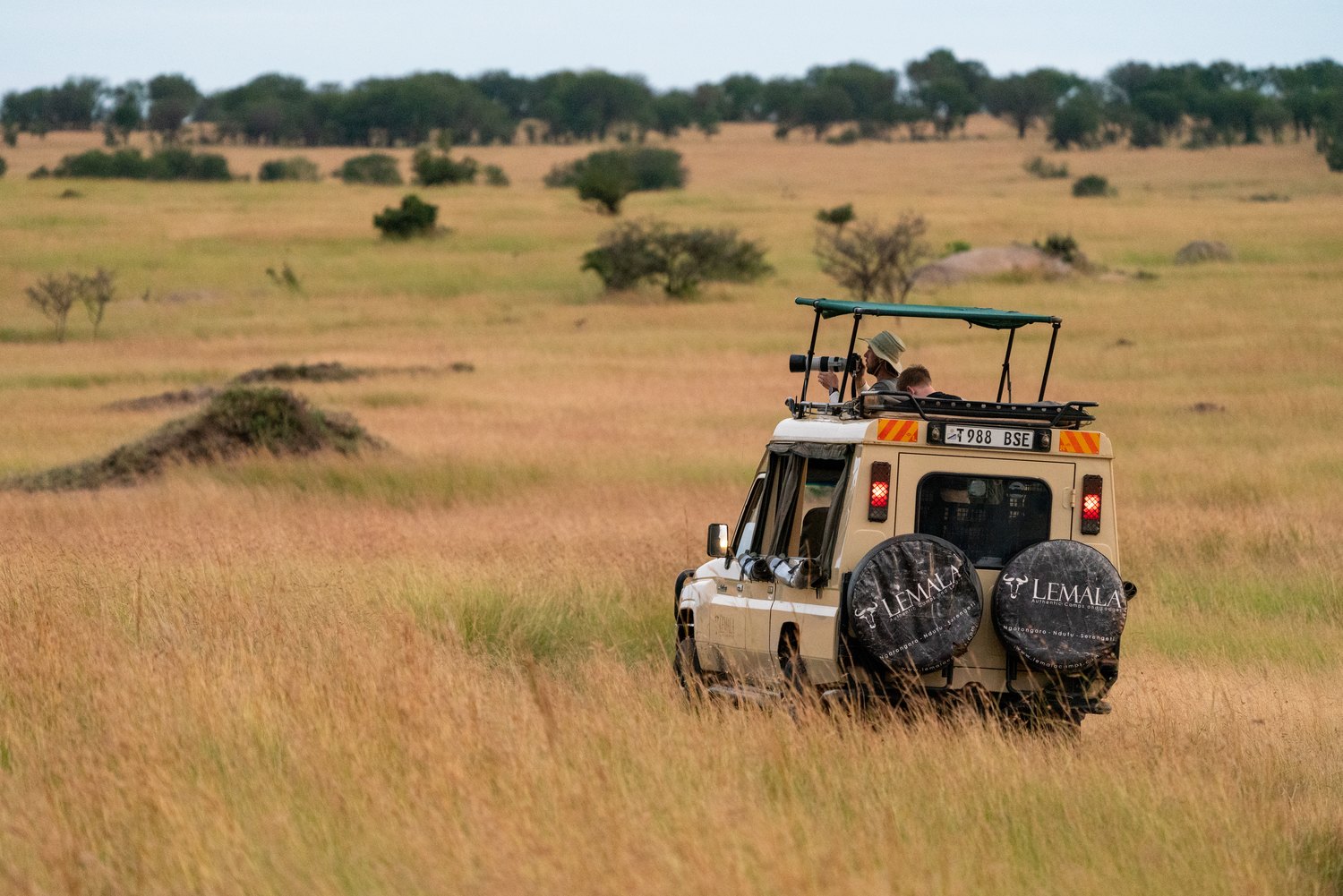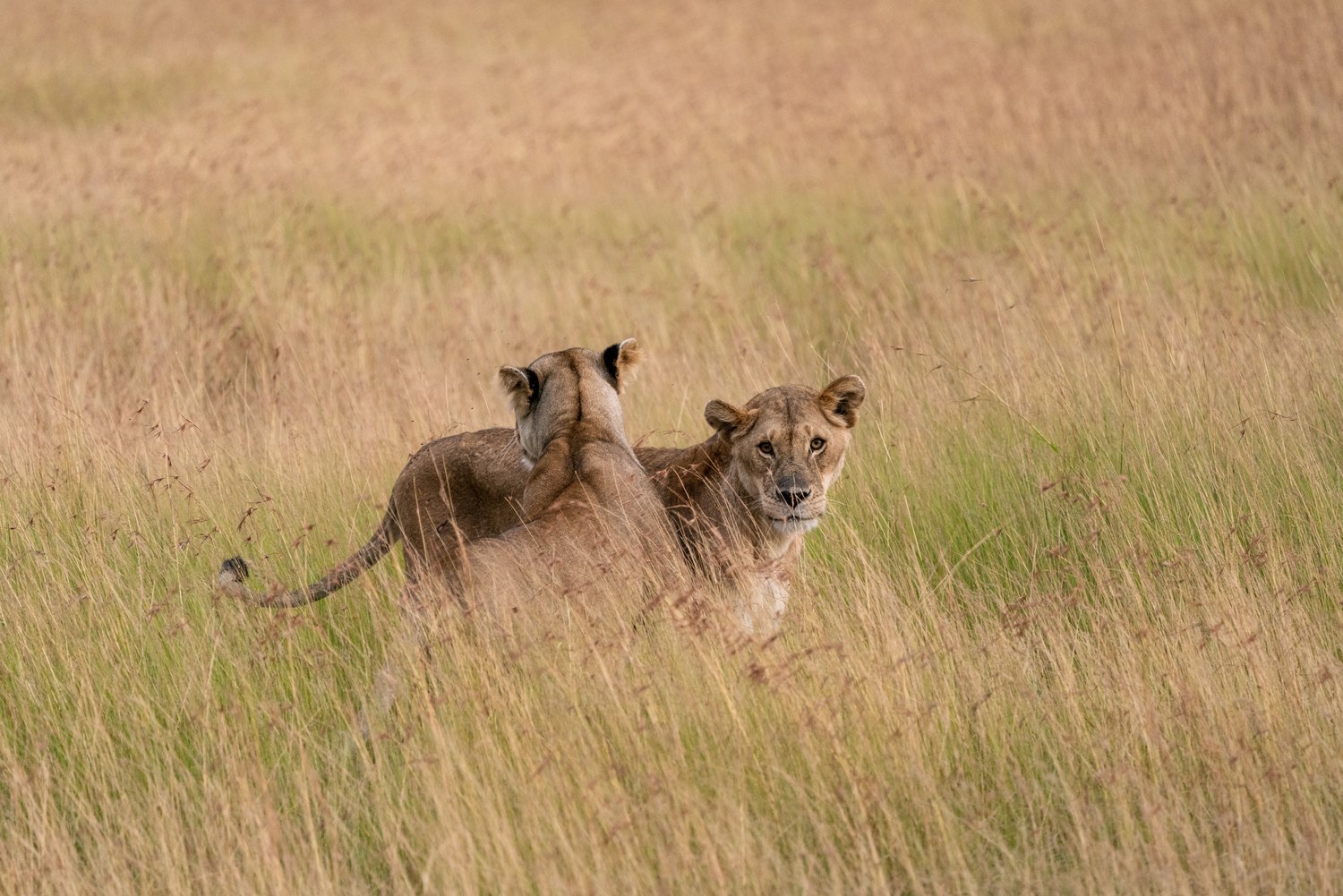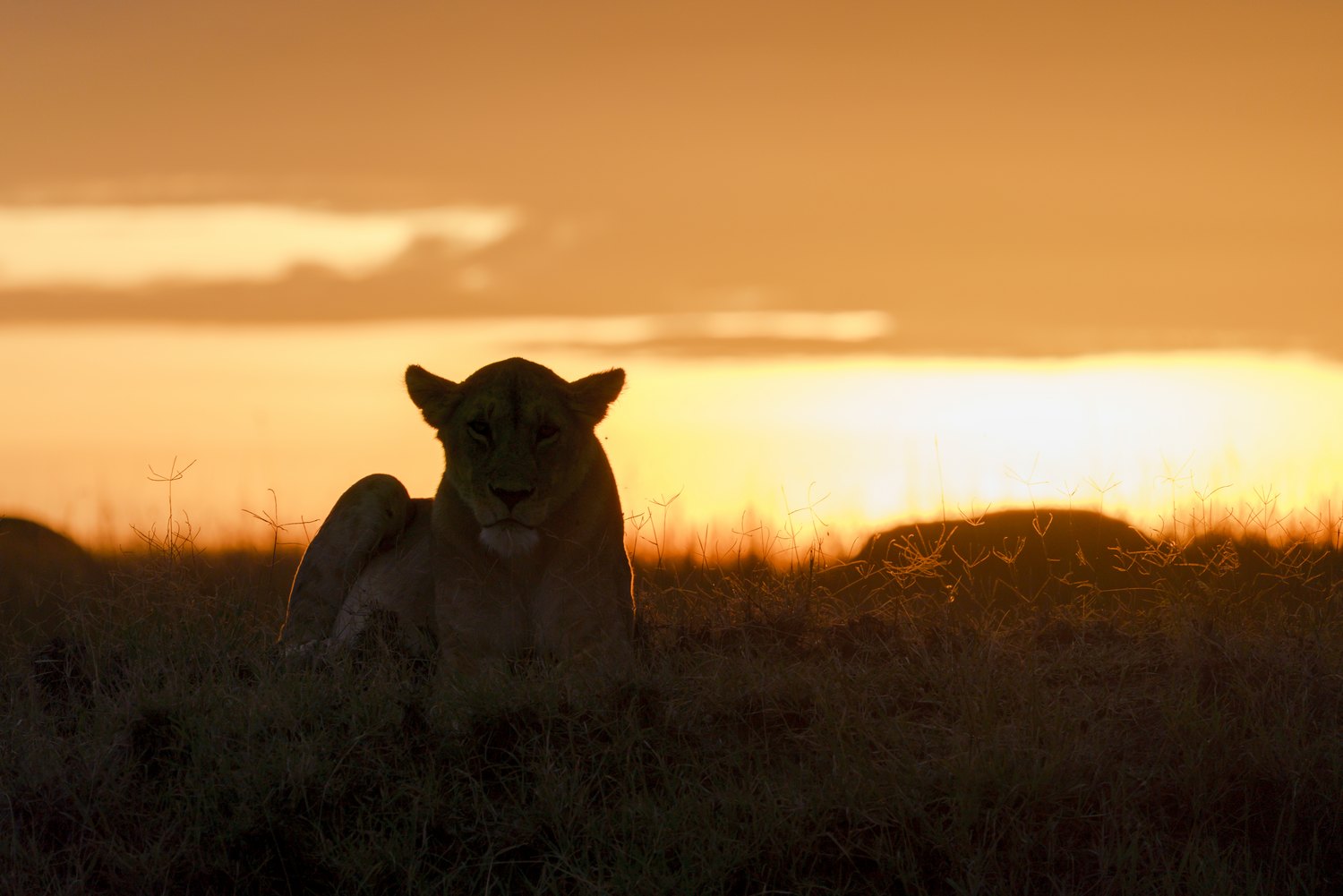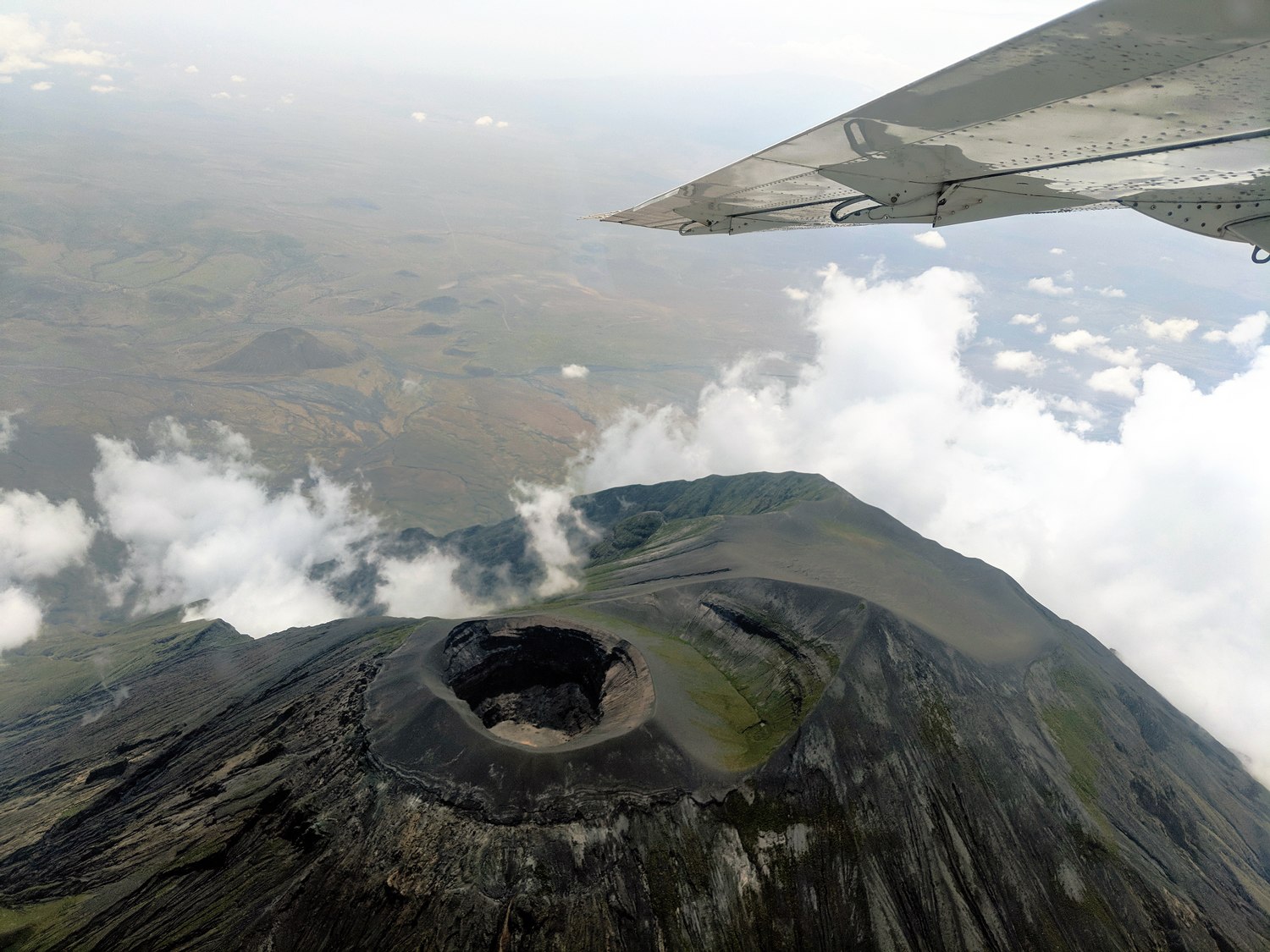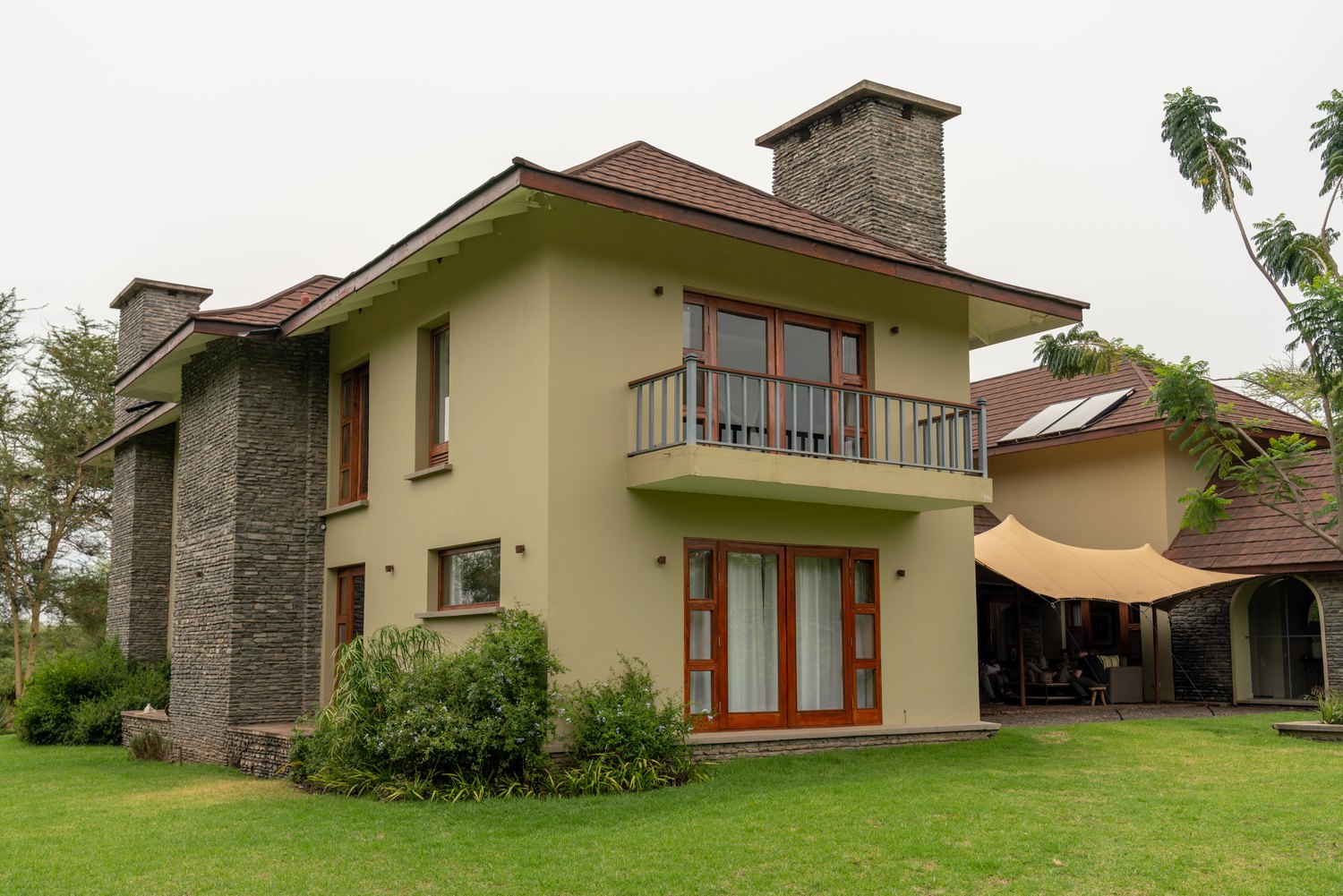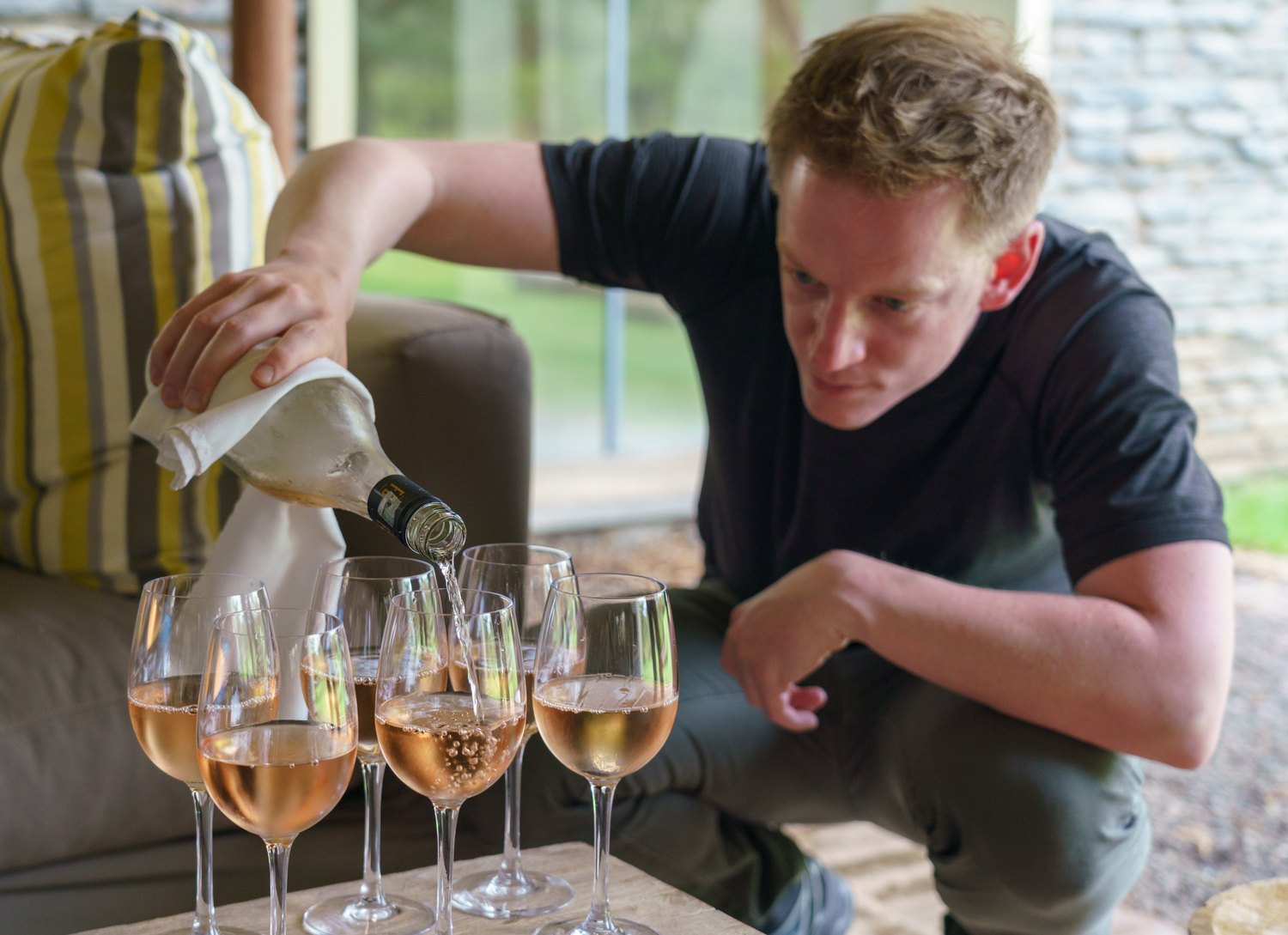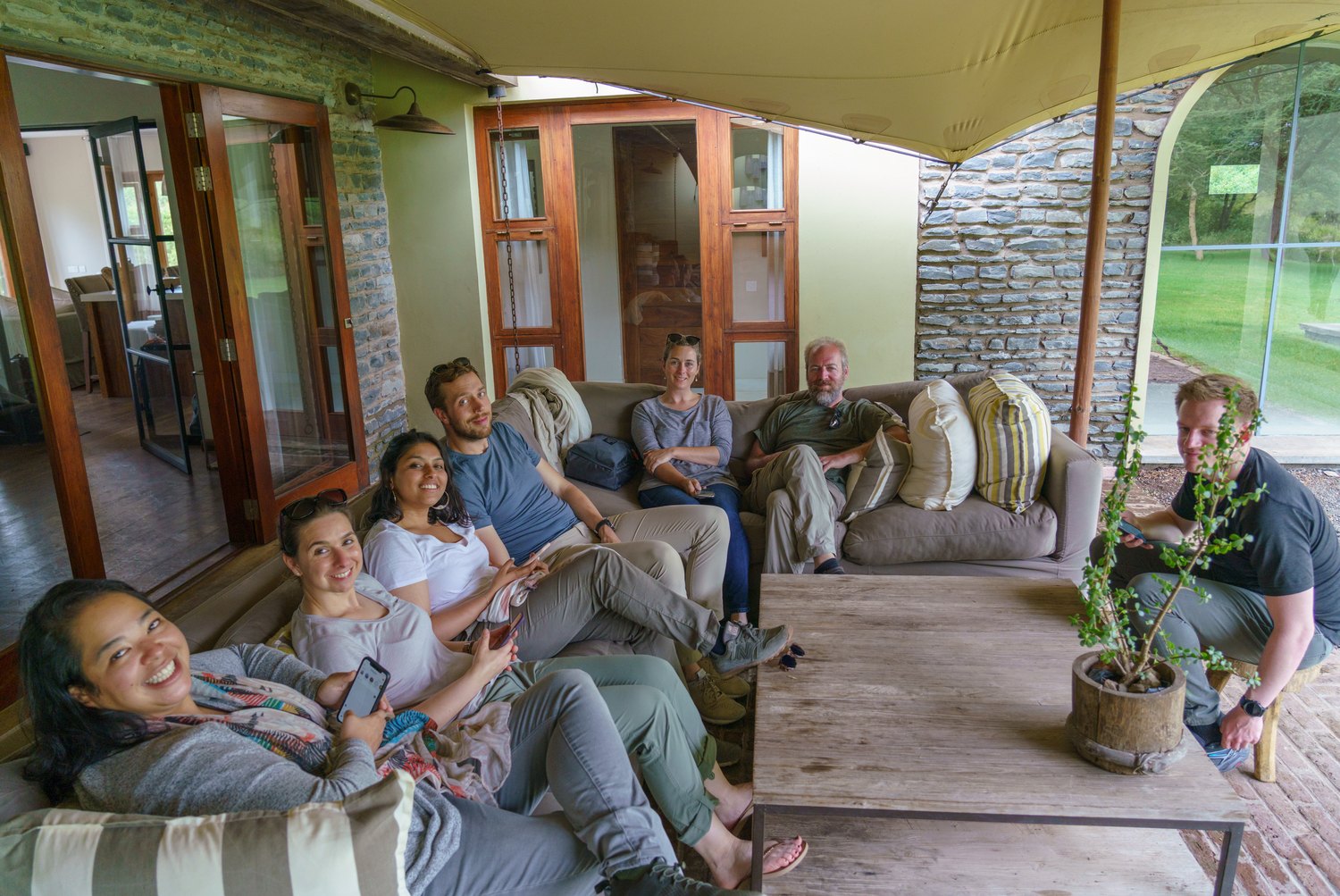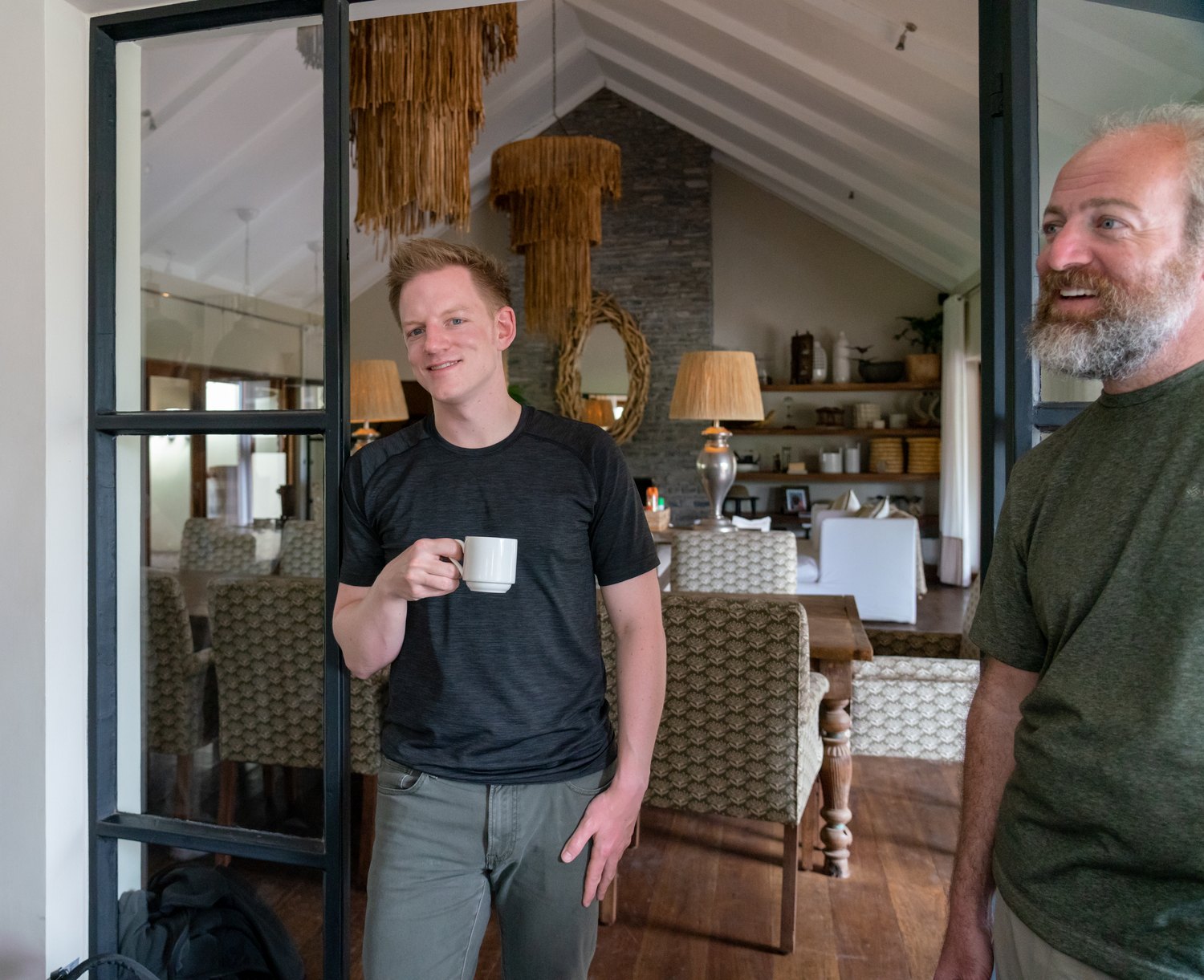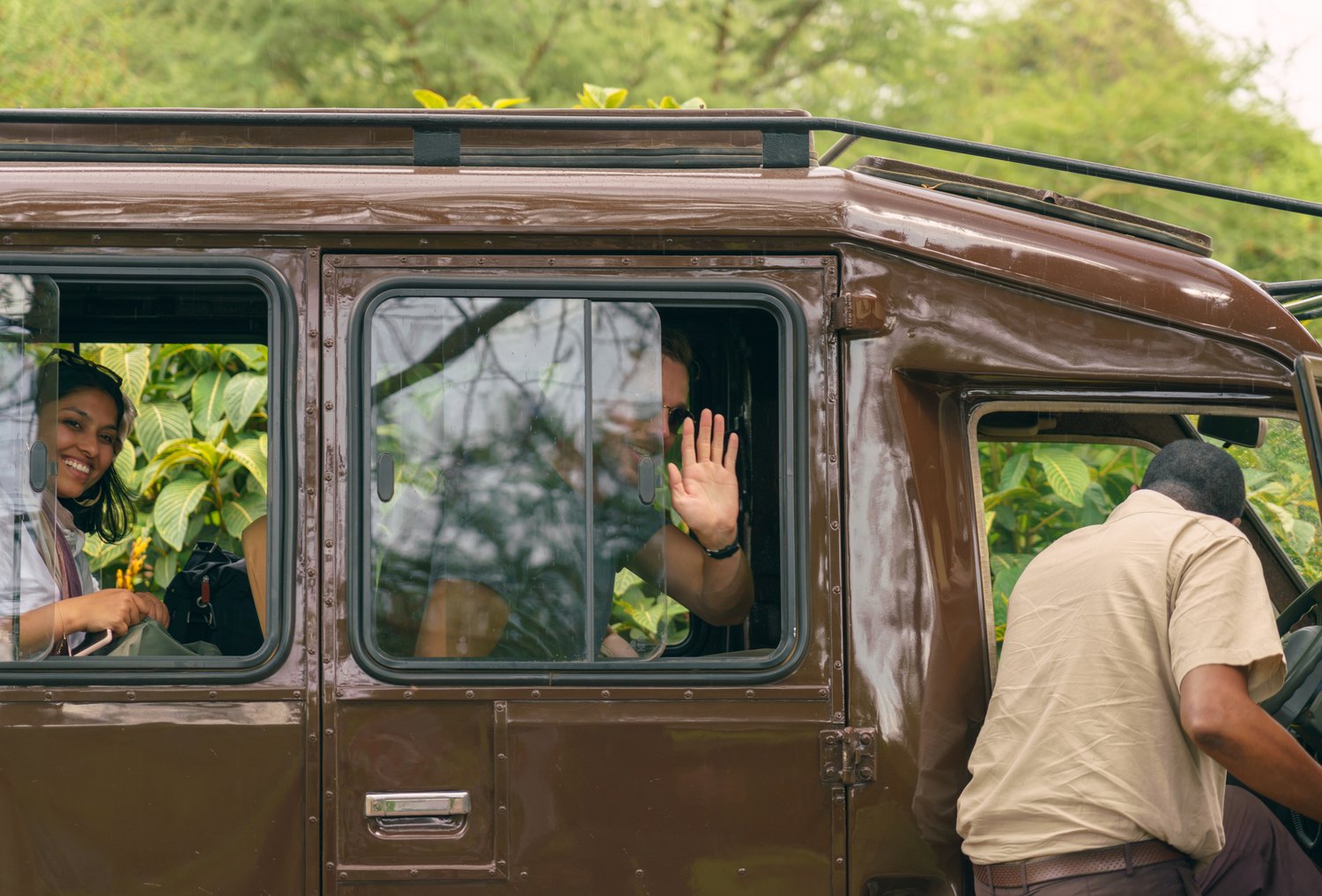Northern Serengeti
Safari in the Serengeti, Tanzania

We woke up early at our camp in the Southern Serengeti, had breakfast and made our way to the airstrip for our 8:30am Cessna flight to the Northern Serengeti. From here we would continue our tour of the Serengeti wildlife with numerous safari game drives.
Two guides greeted us upon our arrival at the Kogatende airstrip in the Northern Serengeti. They set up a small table for us to have some refreshments before going on a game drive en route to our accommodations.
It didn't take long for me to immediately spot the difference in the landscape and environment in the Northern Serengeti. The landscape is much hillier and is often covered with long grass. There are also more substantial streams and rivers compared to the Southern Serengeti—like the Mara River—leading to more easily observed elephants, hippos and crocodiles.
We made it to our camp after the game drive, enjoyed a refreshment handed to us upon arrival and sat on the deck outside to check in and learn about the lodge. We were surprised to learn that our group happened to be the only guests at the lodge for our entire stay.
While our previous accommodations in the Southern Serengeti were part of a migratory camp, the Kuria Hills Lodge tents were more permanent structures with welcomed amenities, like filtered running water and showers. This would be the first time on the trip that we could brush our teeth with tap water instead of bottled water.
Lemala: Kuria Hills Lodge
Wogakurya Hills, Northern Sergengeti, TanzaniaNeedless to say, I was very impressed with the whole setup here in my private tent.
We all reconvened for lunch together before going out for a late afternoon game drive.
ON SAFARI PHOTOGRAPHY, PART 2
While I made good use of the carbon fiber monopod in the Southern Serengeti when we had open safari vehicles, it was not as easy to use with the more covered vehicles on this part of trip. The roof opened up on these vehicles and I would often stand up and rest the camera somewhere on the roof railing instead.
Fortunately, our guide was also a photographer and happened to have a few sandbags for resting and stabilizing the camera. And when that was in short supply, making due with a Maasai blanket in the car worked well too.
We were closer to the Mara River on this part of the trip and we got our first up close encounter with elephants grazing in the area. Nearby we found a large group of hippos resting and frolicking.
The diverse terrain was a welcomed change of pace. It varied from flatlands and rivers to hilly land with long grass.
As the perfect end to our first day, we stumbled across a lovely dusk landscape with a backdrop of luminous clouds on journey back to camp.
While having dinner that evening we heard some rustling nearby and looked over to see an elephant grazing right next to us. Later that evening two more elephants showed up and blocked access to everyone's tents for a while.
Day 2 began bright and early. I hopped outside to capture a few sunrise shots from our deck before getting ready to go to the main dining tent for breakfast.
Feeding time
Seeing a fresh kill devoured by lions, hyenas, vultures...
We had seen most types of animals by this point on our trip. There was one thing we had yet to see on our trip (aside from a black rhino): a lion actively hunting its prey.
While we didn't see the hunt happen, we did see the aftermath of a recently killed Topi being eaten by numerous animals in the vicinity. There were a lot of sounds from more and more vultures flying in, to hyenas "laughing" and lions protecting their kill from being stolen.
The most remarkable scene came when a larger lion took the meal from a lioness and continued to drag it to a spot near some bushes.
We made it back to camp for lunch and then one more game drive as had become our routine.
We returned to our tents after a late dinner and proceeded to stay awake for much of the night; there were impressive non-stop rains, lightning, cracking thunder and remarkable winds. The winds were so intense I thought our tent was going to blow over or get damaged.
We were uncertain if our morning game drive would be postponed. Our guides then said we were still good to go on a morning game drive—we could always turn back if some of the small streams proved impassable.
Sinking
The time we tried to ford a stream...
Well, the guide for my particular safari vehicle got a little ambitious and attempted to cross a flooded stream.
The vehicle quickly became stuck—and stuck even further the more our guide attempted to drive out. More safari vehicles drove to our location and attempted to tow us out. Two of them failed due to lack of traction and one even snapped a tow cable that whiplashed and hit our car while we were in it.
Eventually, someone radioed another local camp that got in touch with tractor driver who graciously came and successfully towed us out.
After that fiasco a few of us decided to return back to camp to relax until lunch. I went to the main lodge tent, got a coffee and read on my Kindle for a while.
We went out for another game drive in the afternoon. It was rather uneventful for the majority of the drive—we figured the animals had found shelter from the rains elsewhere. Then, we saw a majestic lion resting and scanning the horizon while perched atop a rock formation.
That was my last game drive in Africa. There was one more day of drives but I started to feel under the weather at this point—a few others did too, perhaps we ate something tainted.
I ended up taking the antibiotics that my doctor had given me for emergencies and stayed home to relax and catch up on some reading. Fortunately, the antibiotics worked quickly and I was back to normal the next day.
The next day we took two small Cessna flights to get back to Arusha. Our flight into Arusha flew around Ol Doinyo Lengai, the only active volcano in the area.
Upon arrival we were picked up by two drivers to take us to Siringit Villa, a lovely guest house we had reserved for some downtime between flights. We would be having lunch and relaxing here until it was time for our flights out of Kilimanjaro international airport.
The end. I got on a flight to Dar es Salaam and made my way to chilly Amsterdam. I explored Amsterdam a few days before flying to London for a few more days to round out my vacation.
